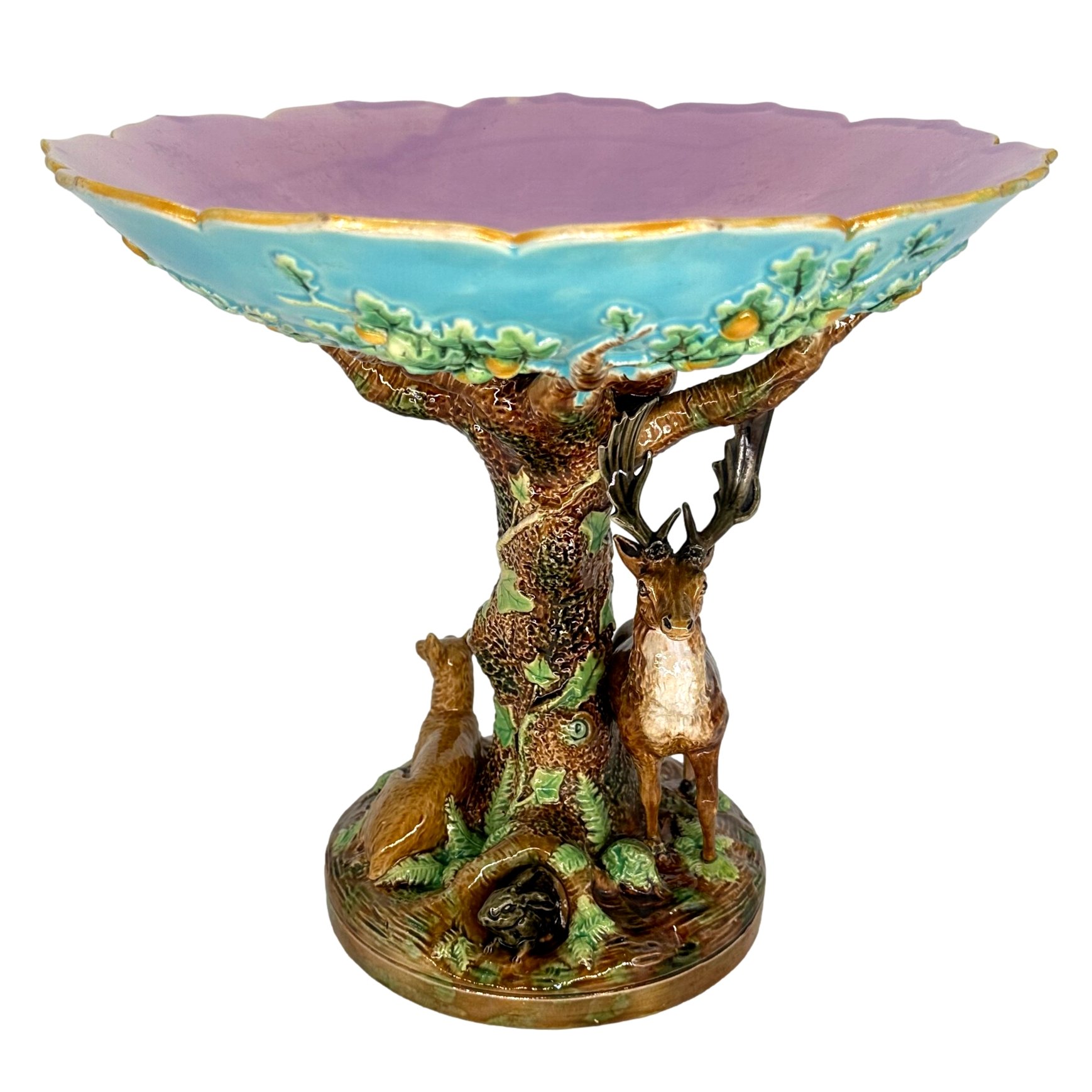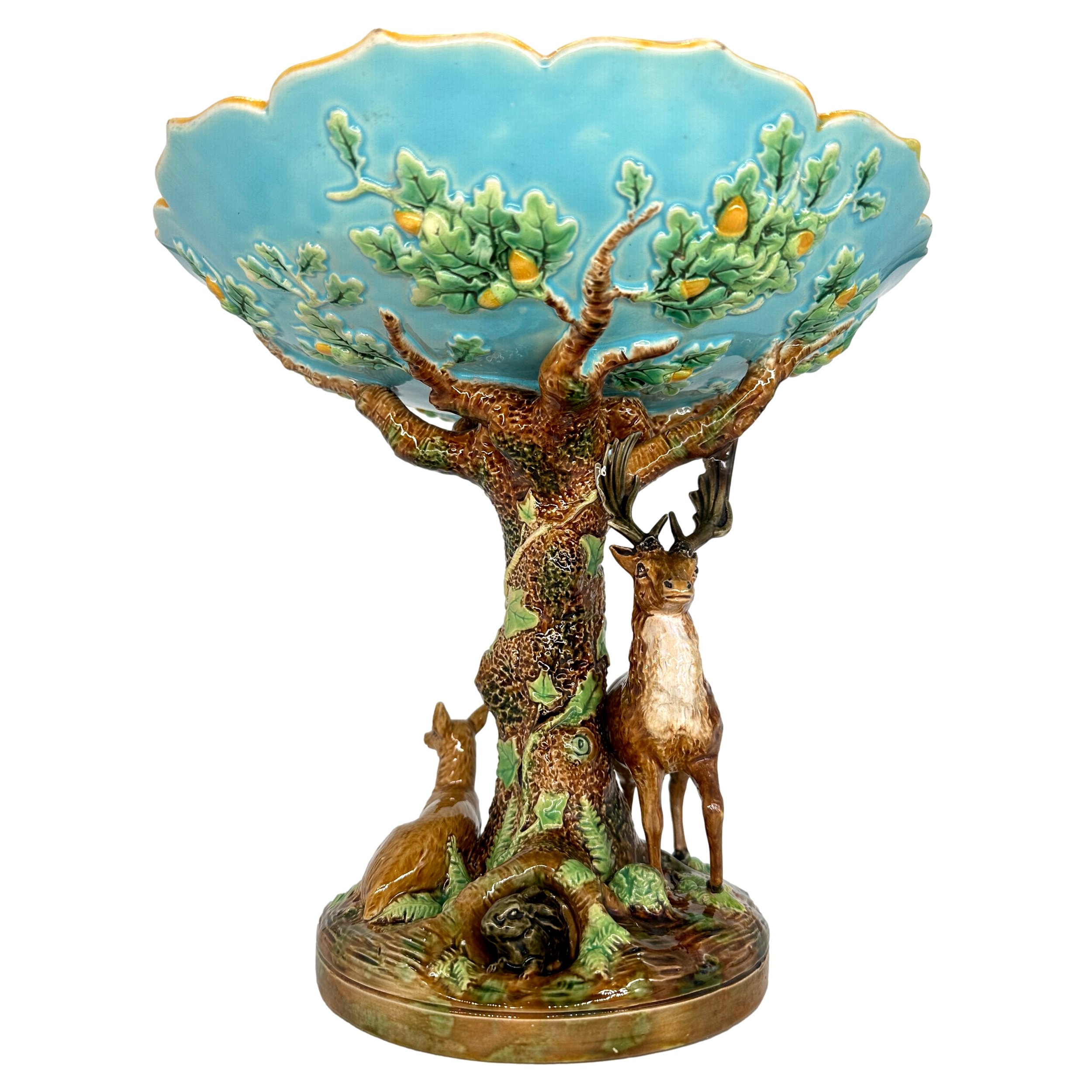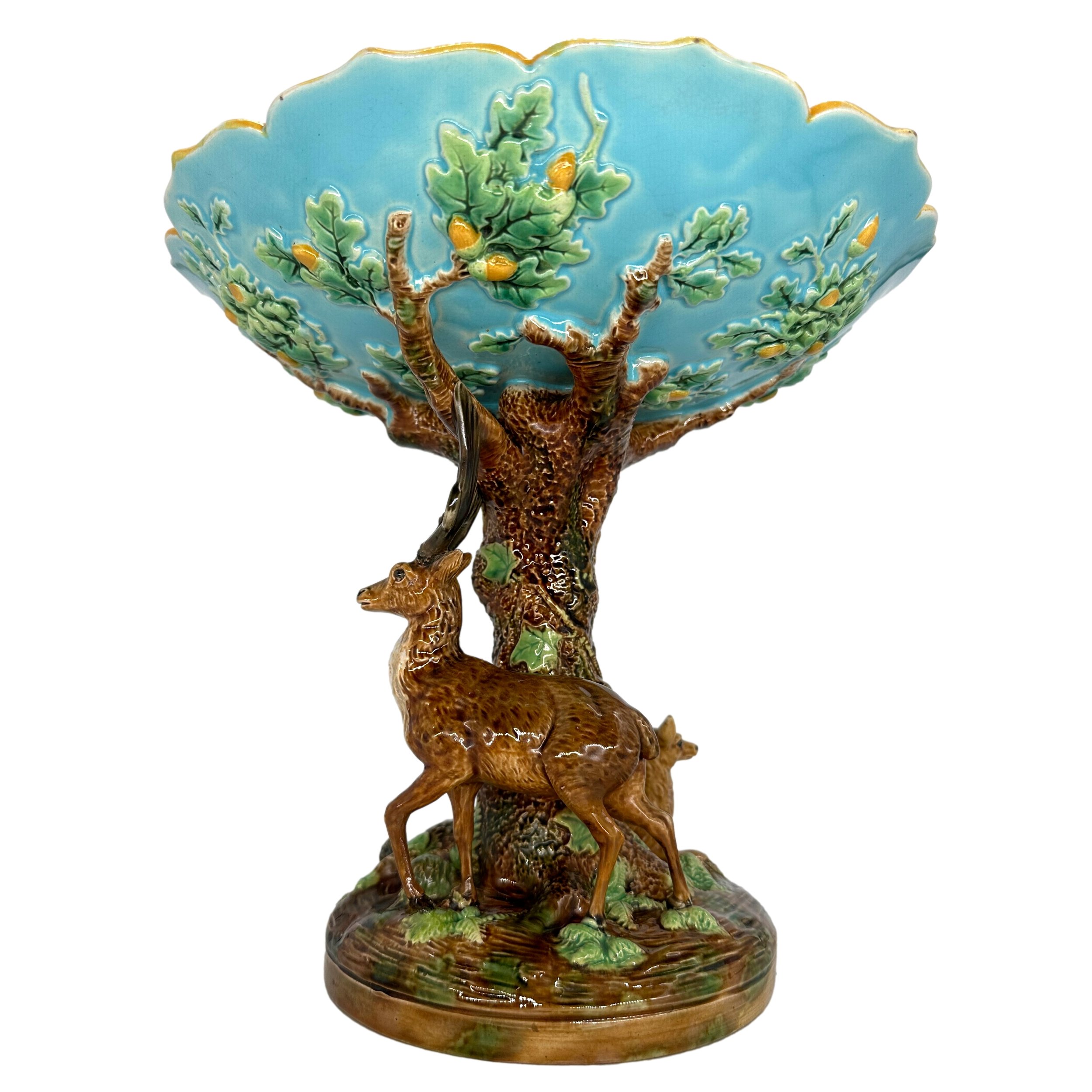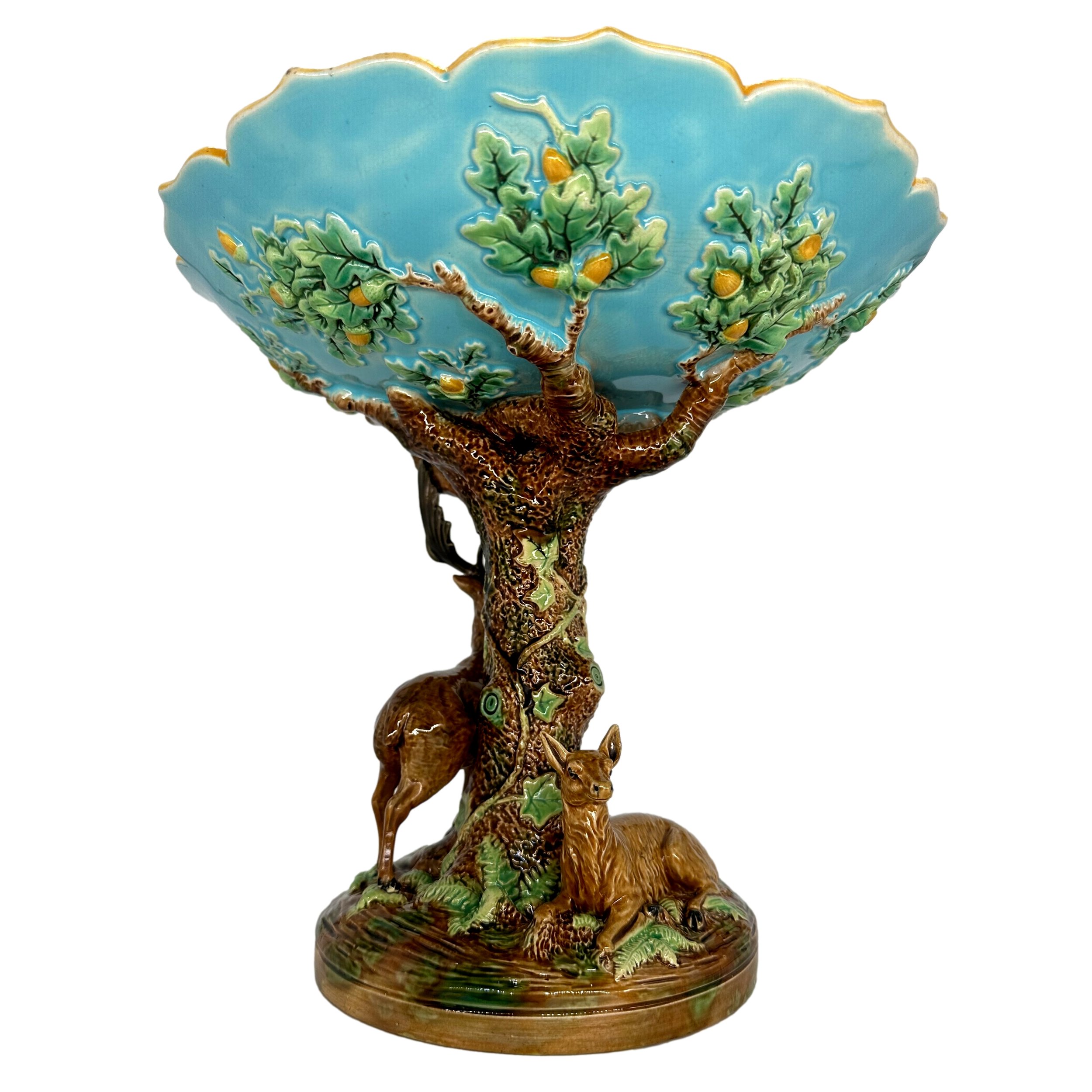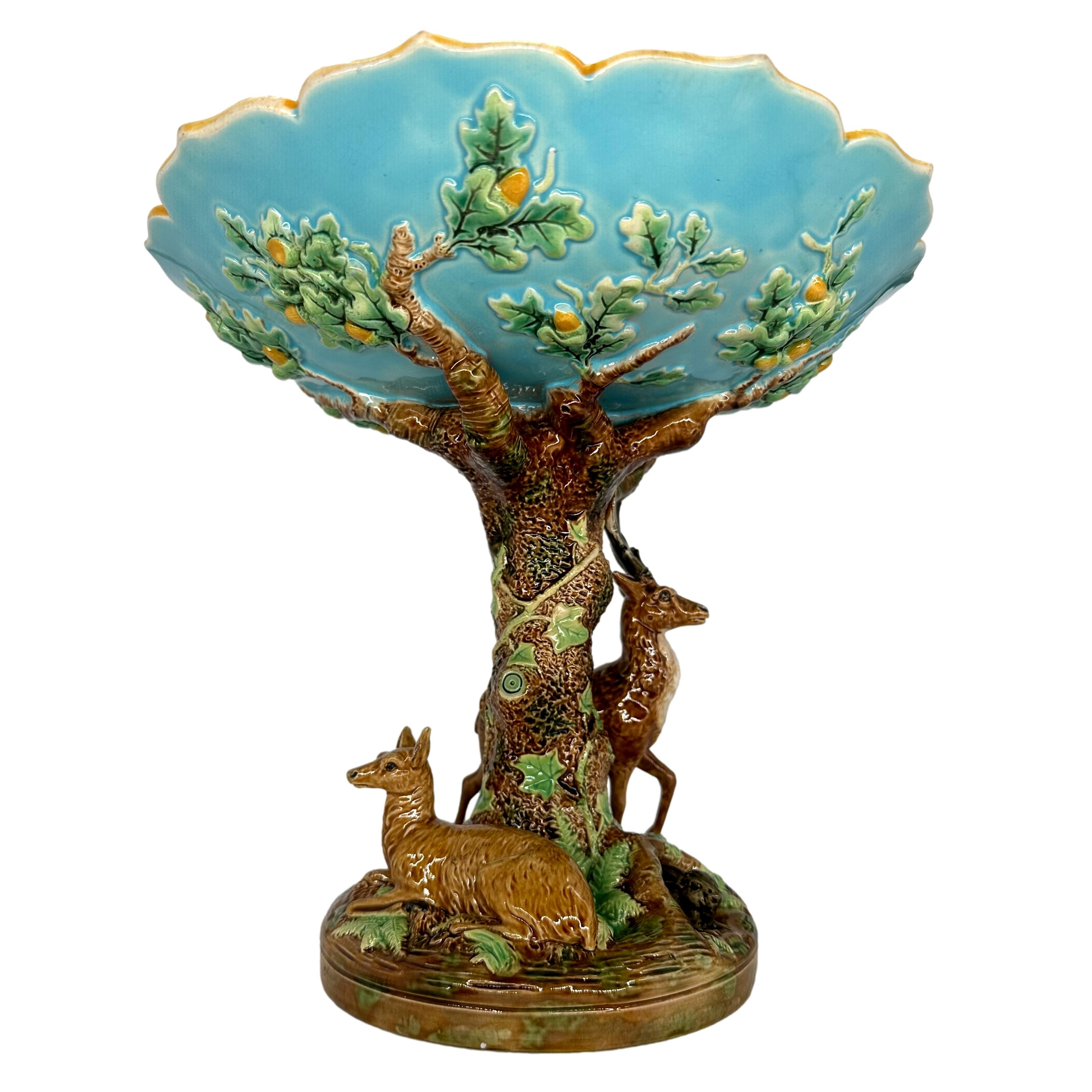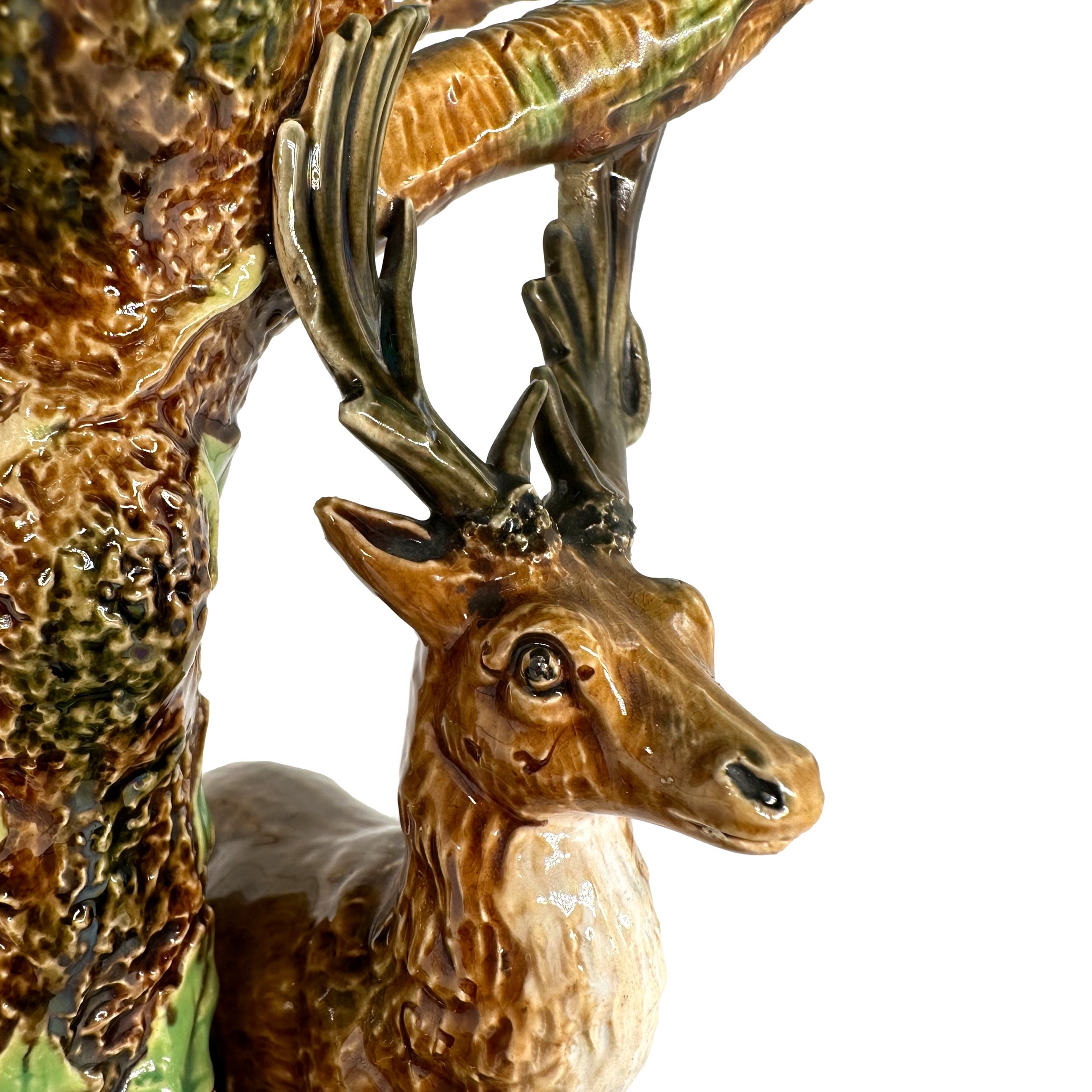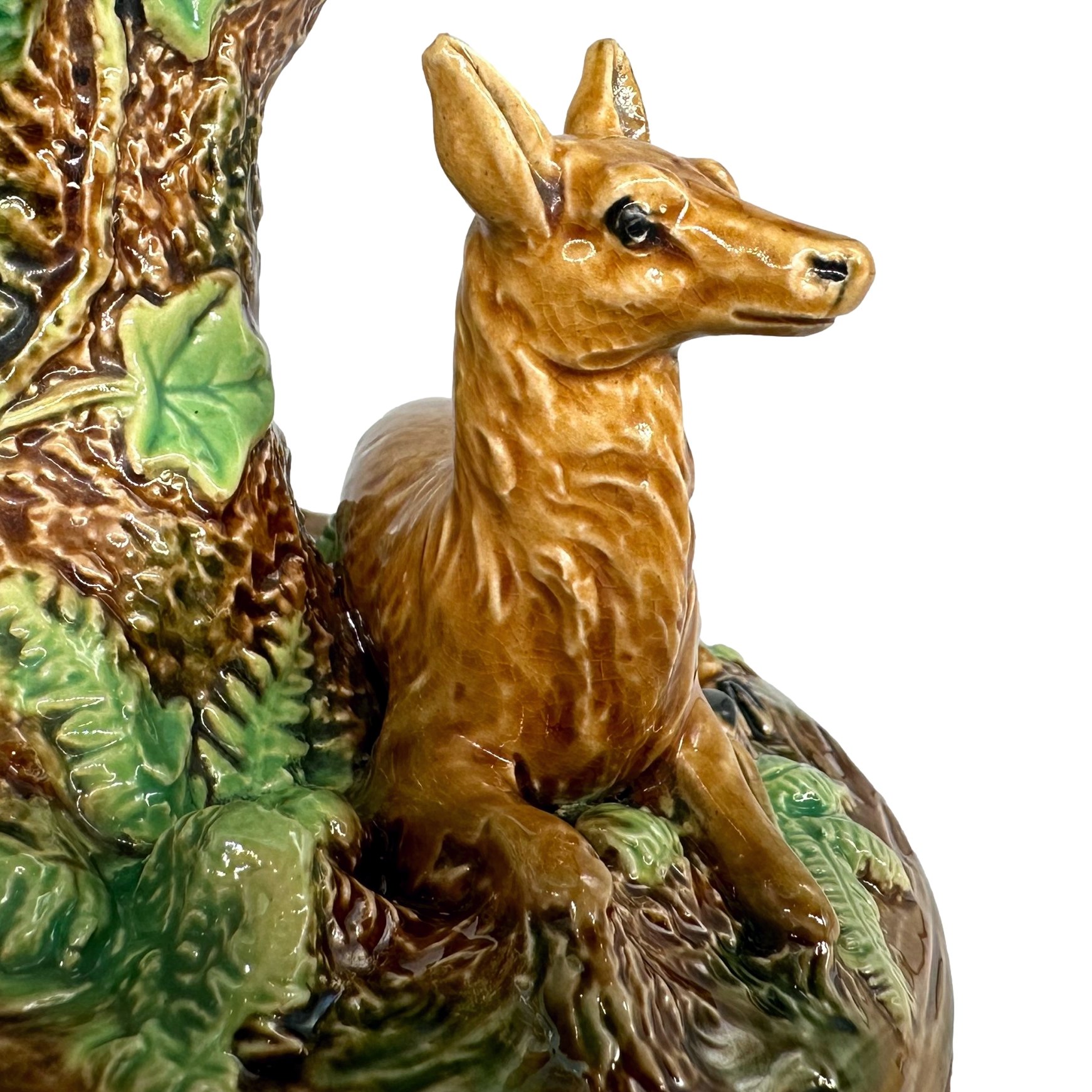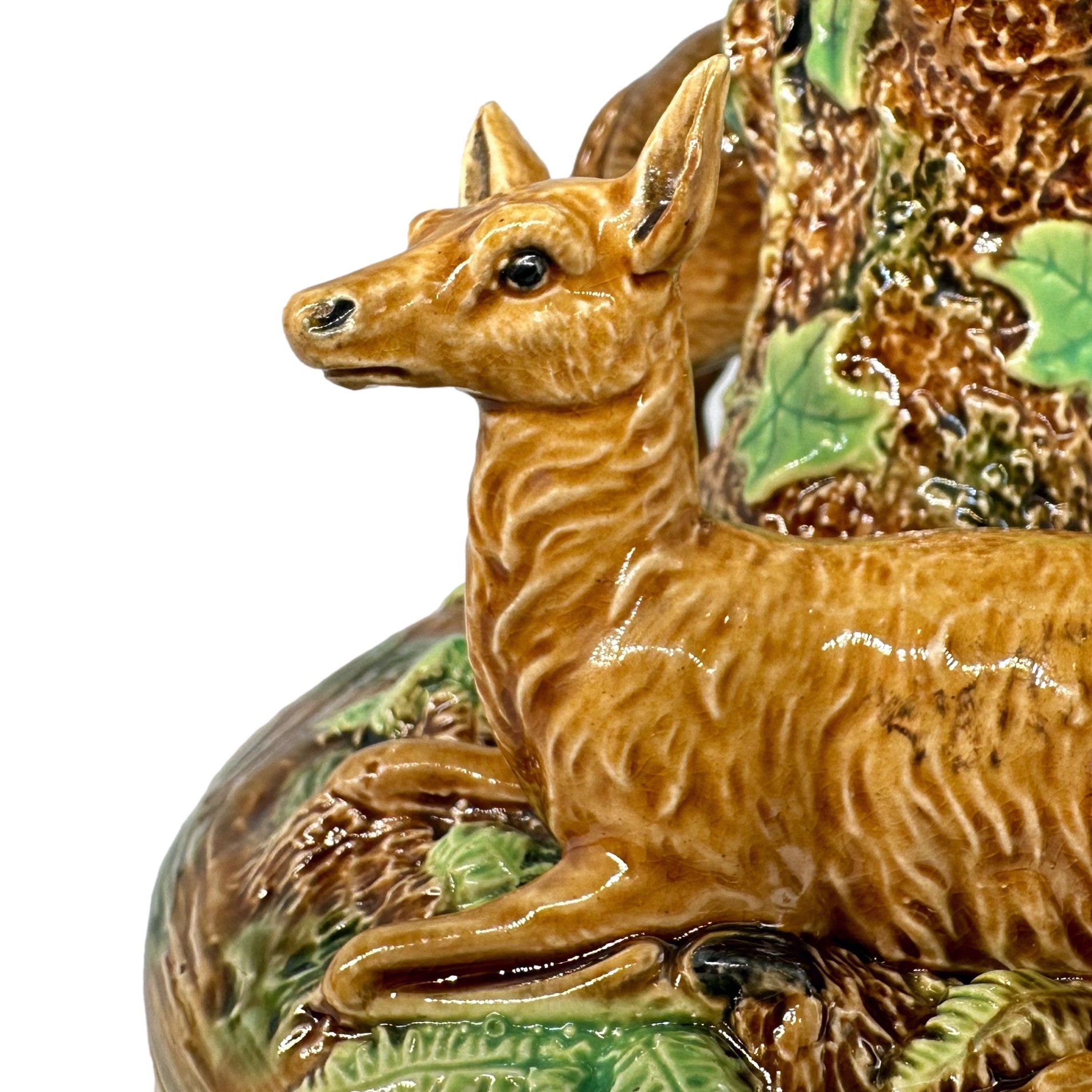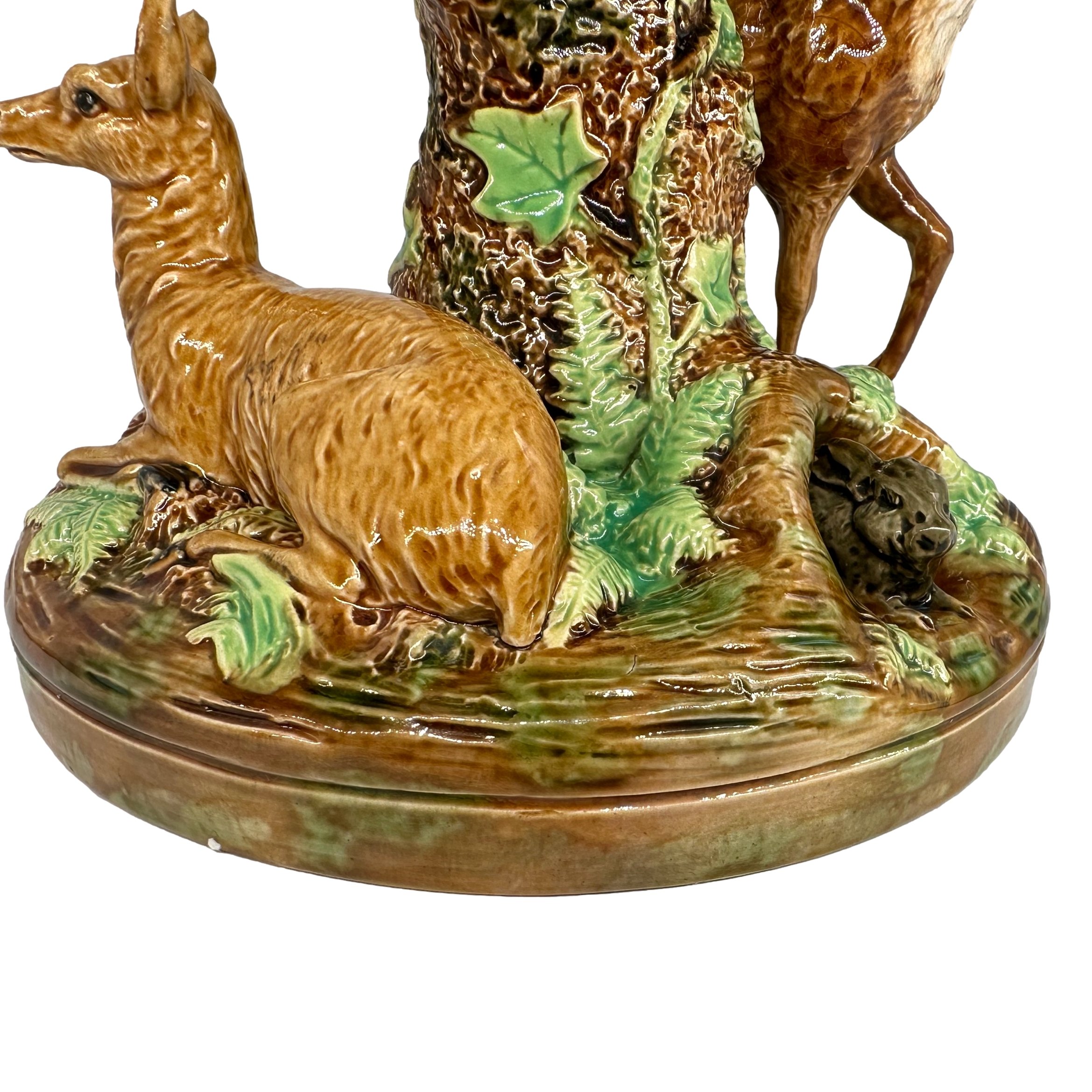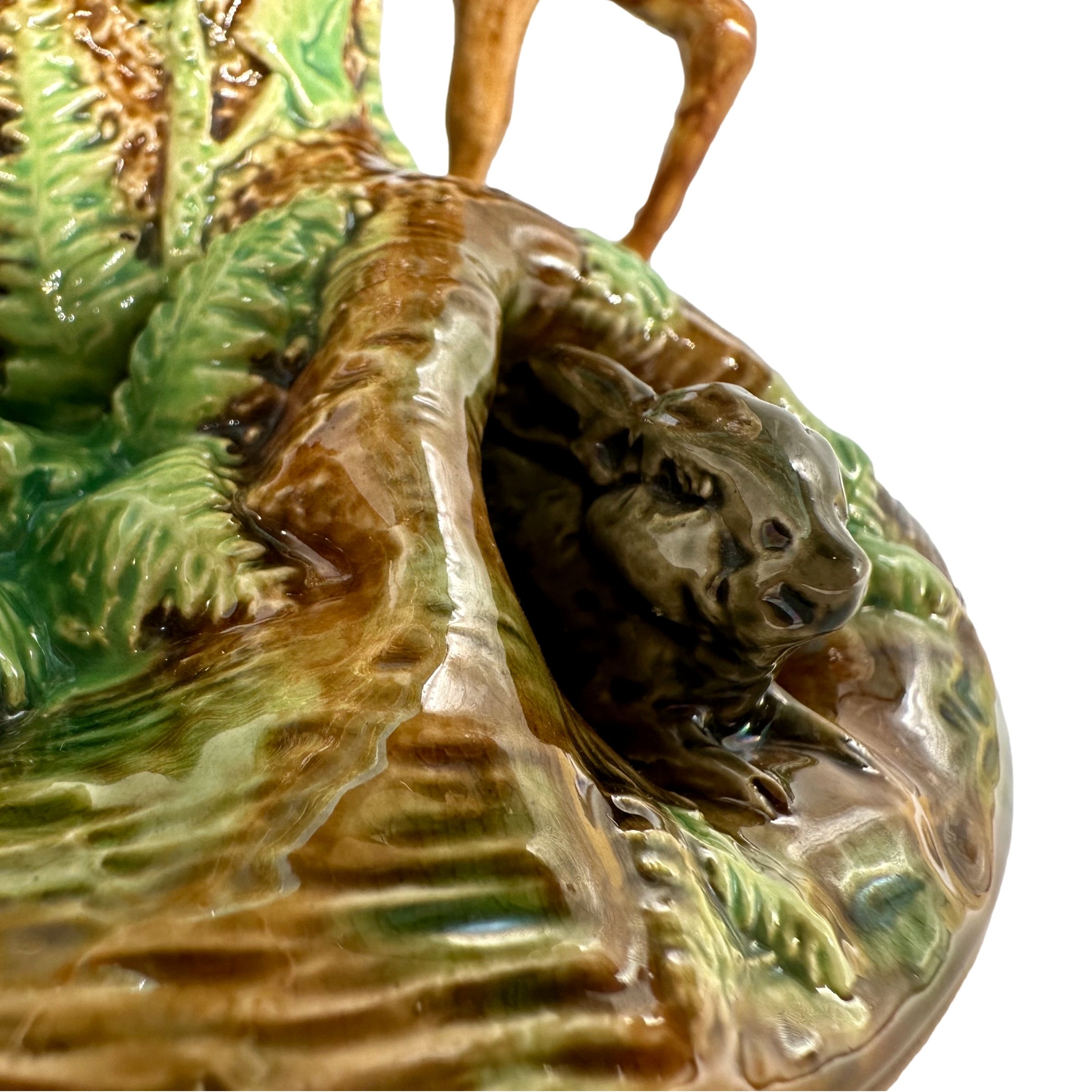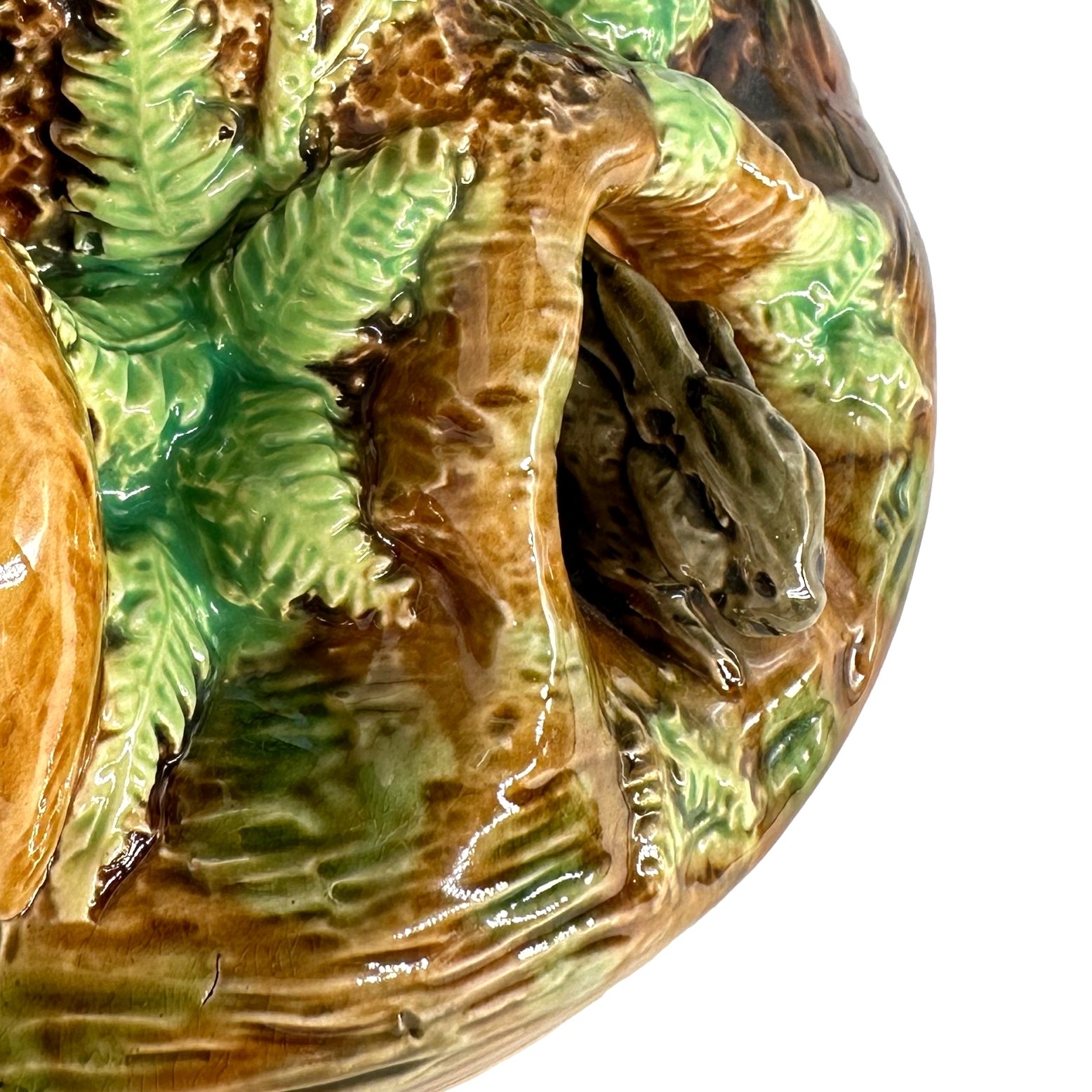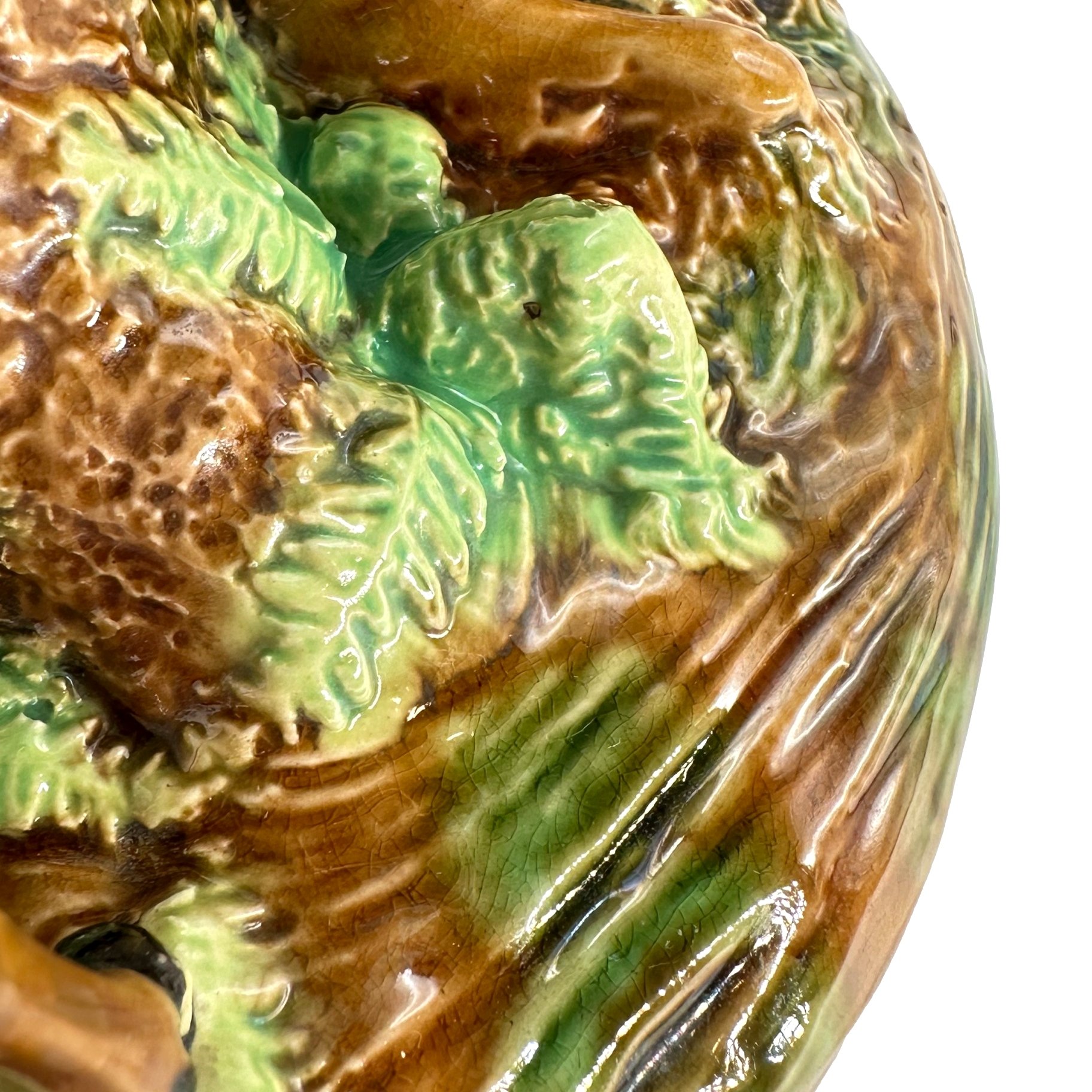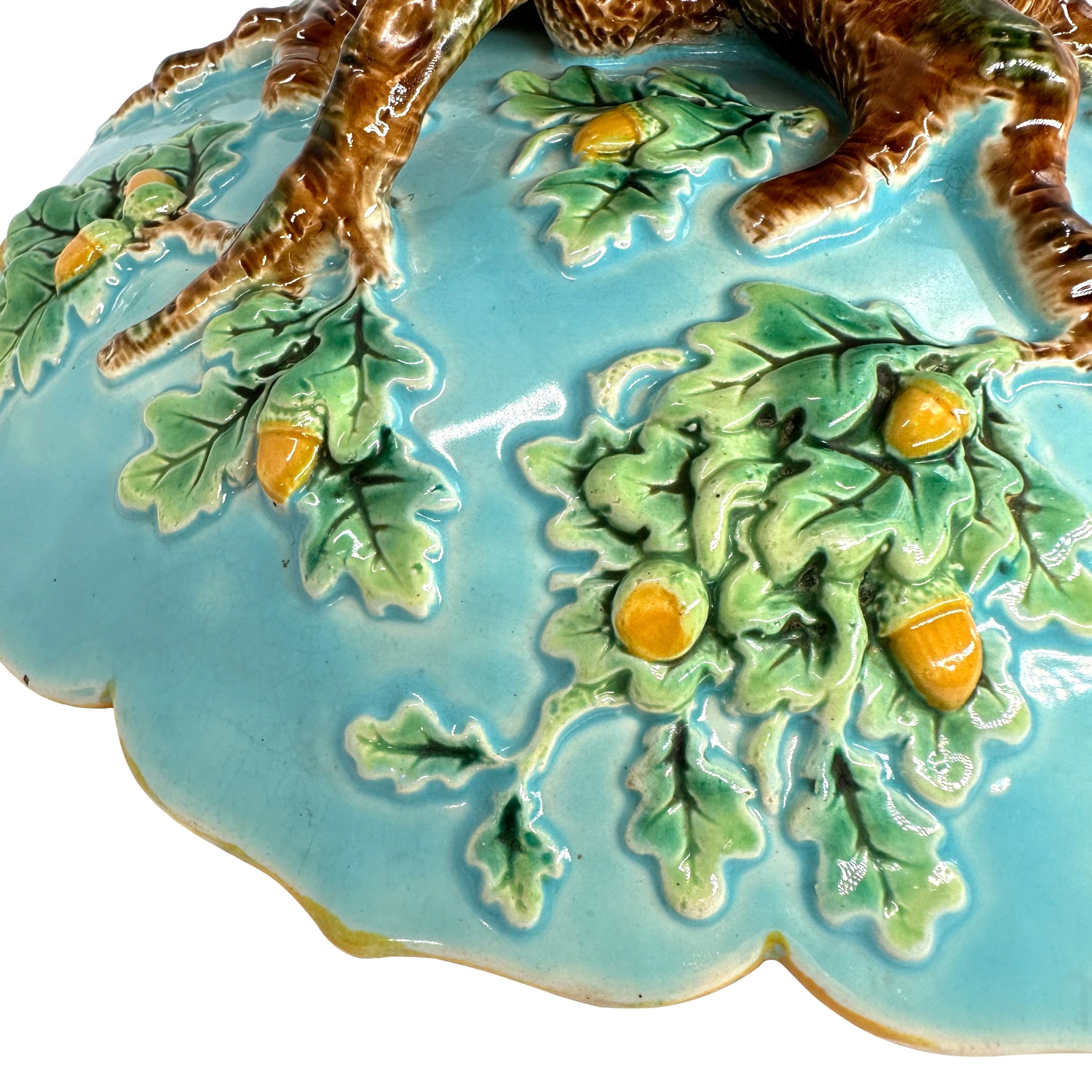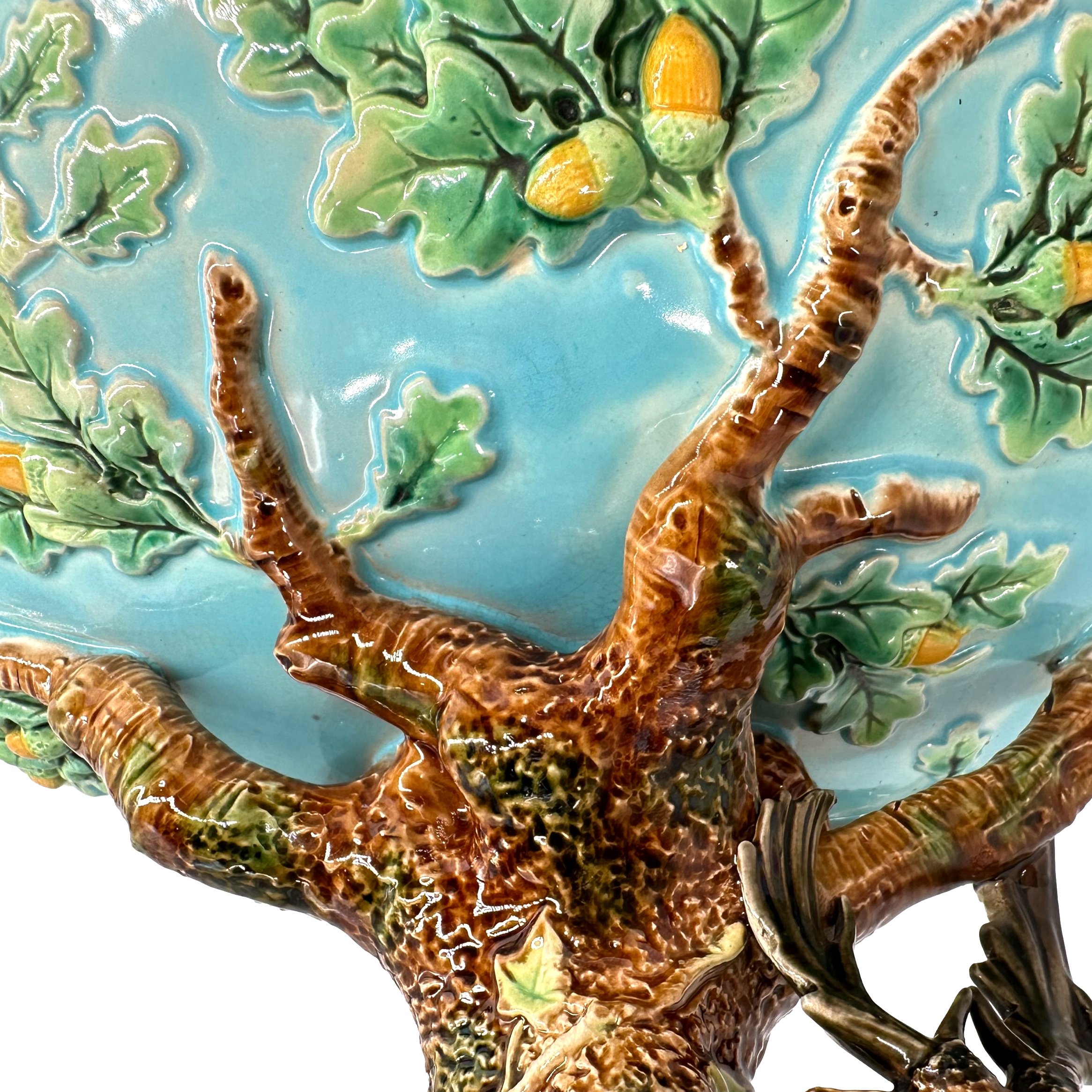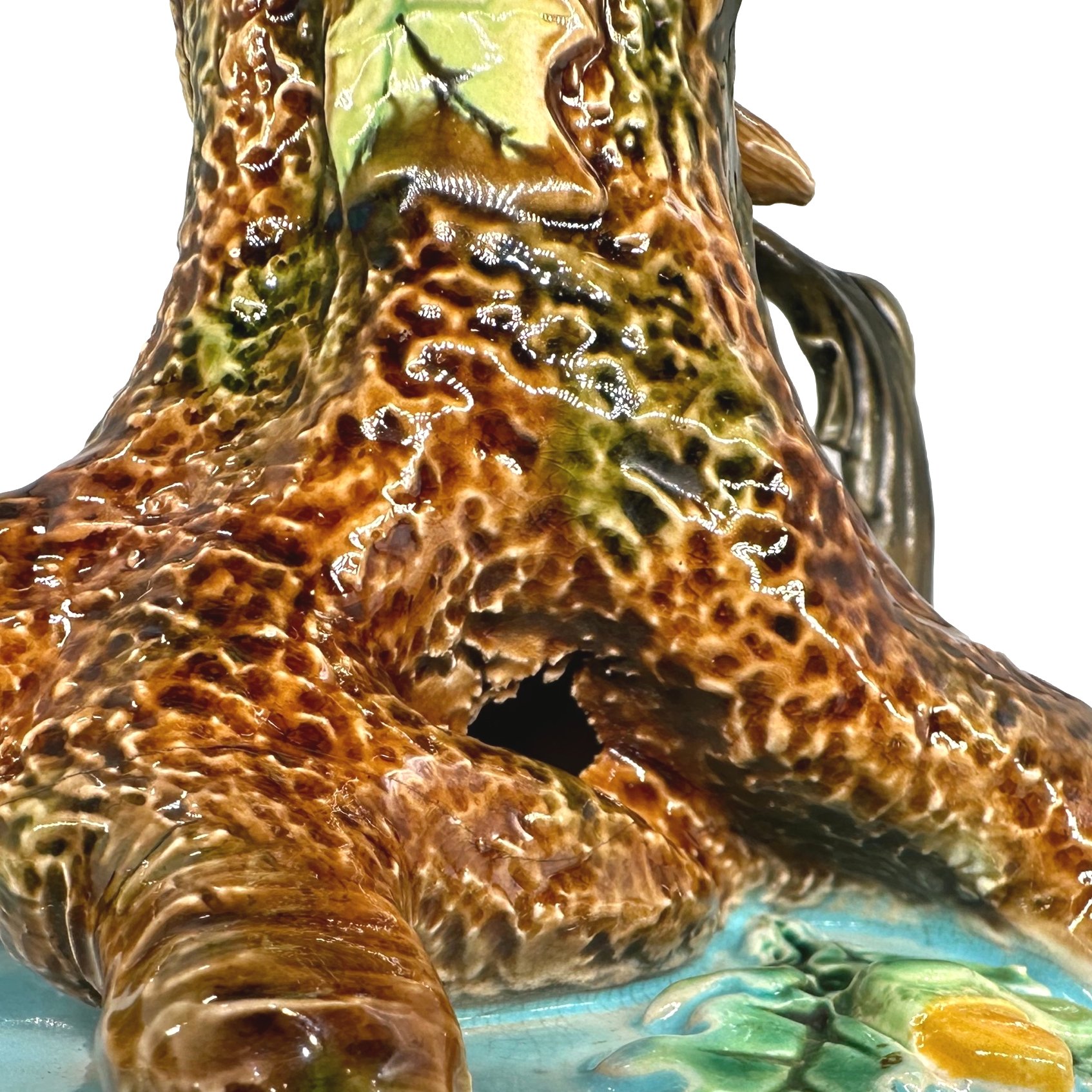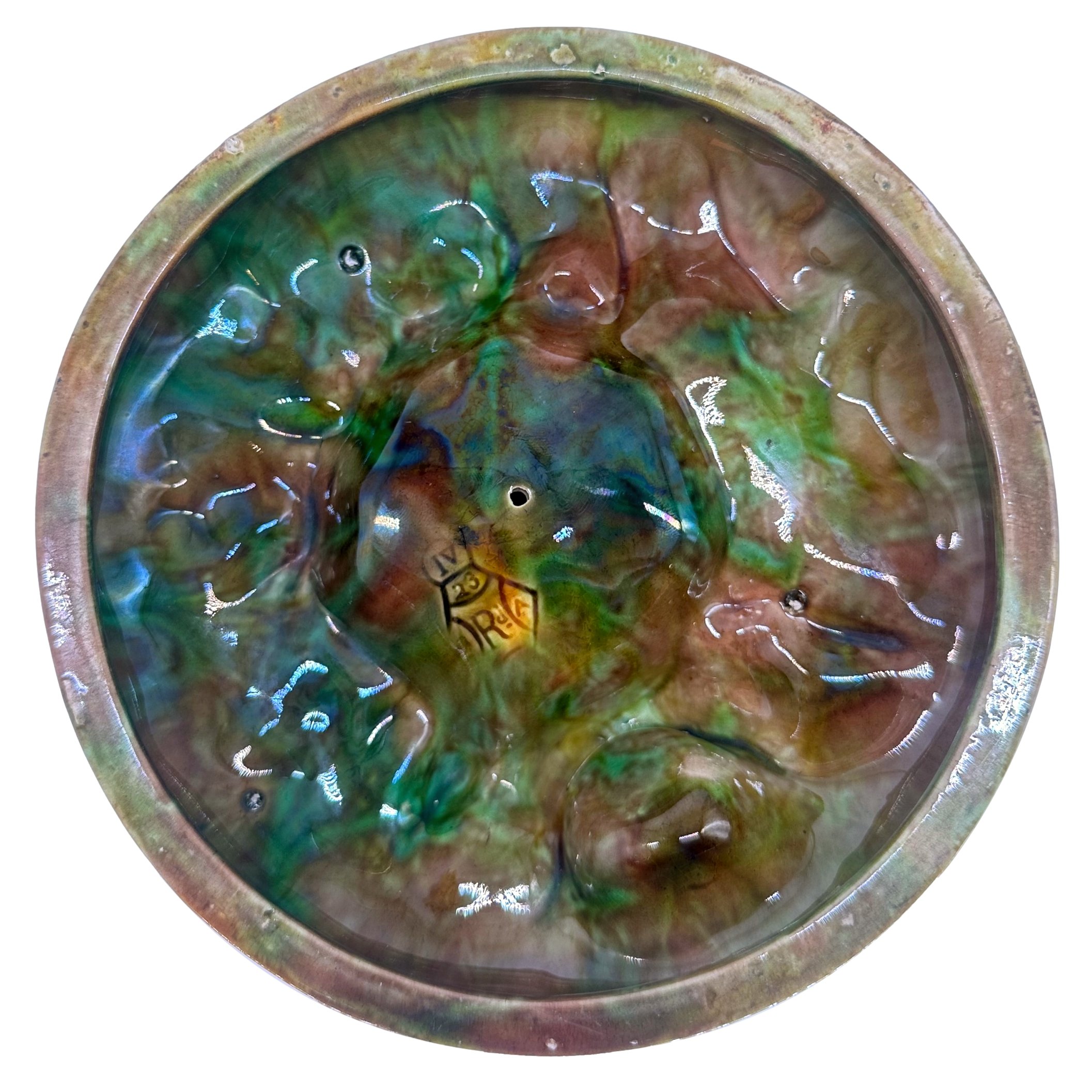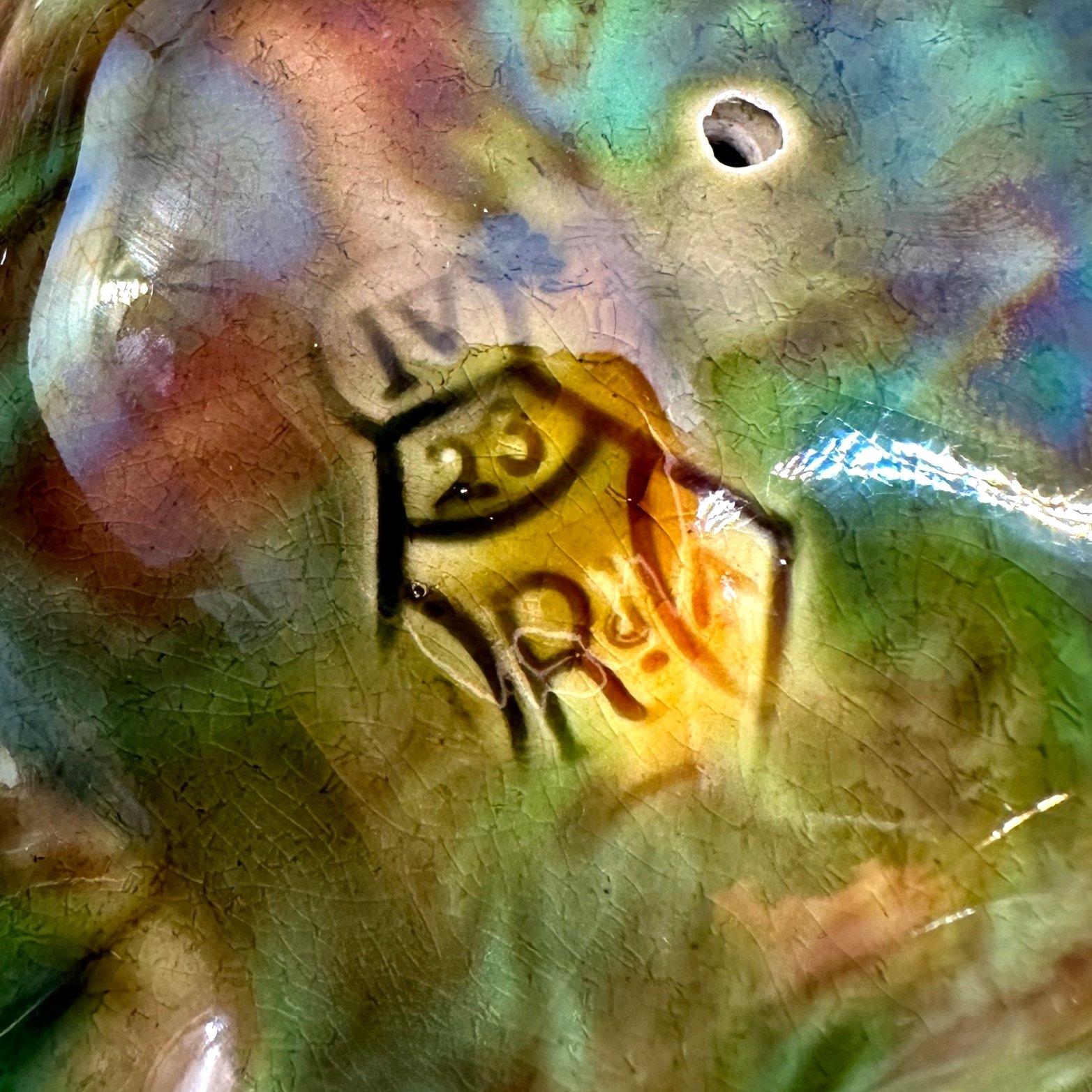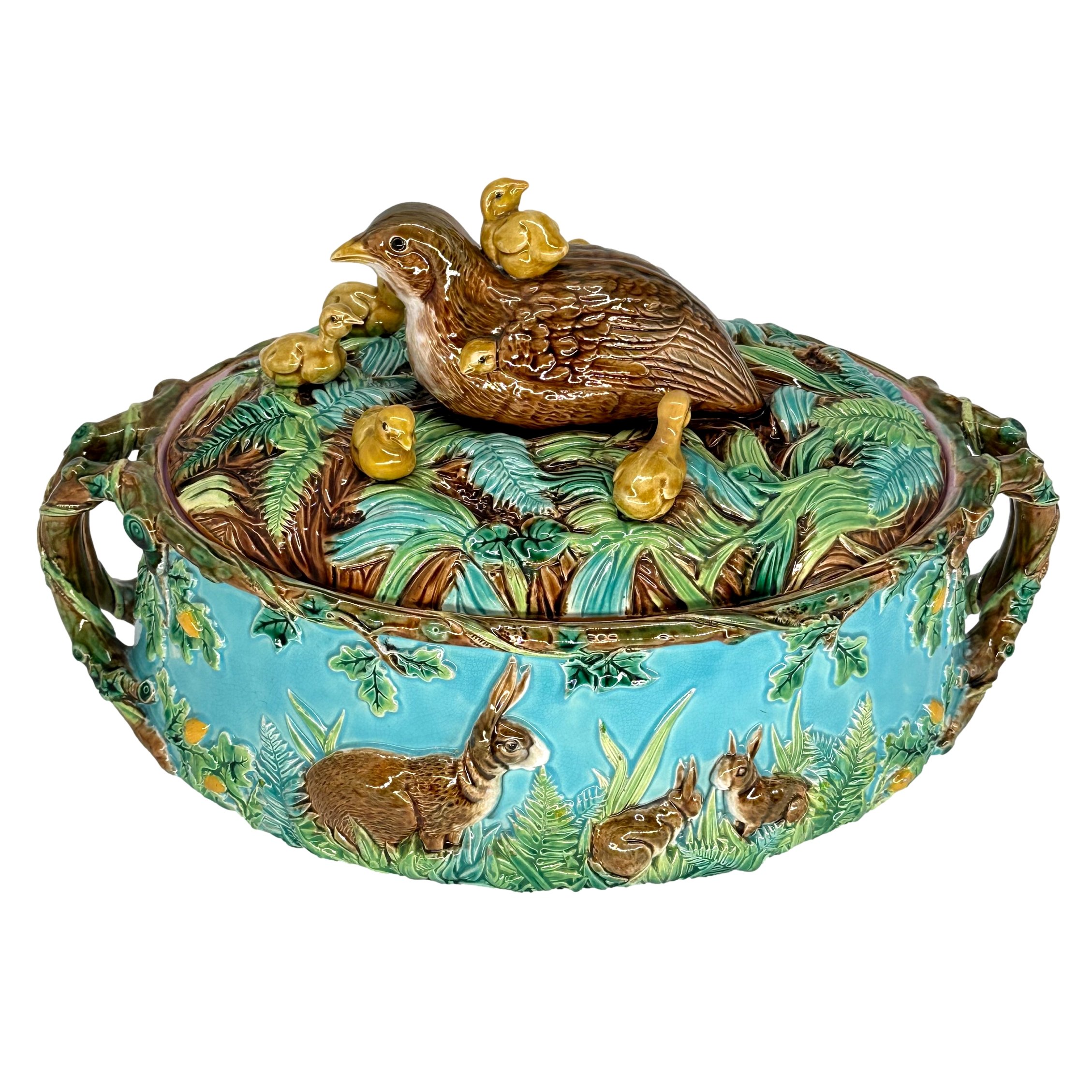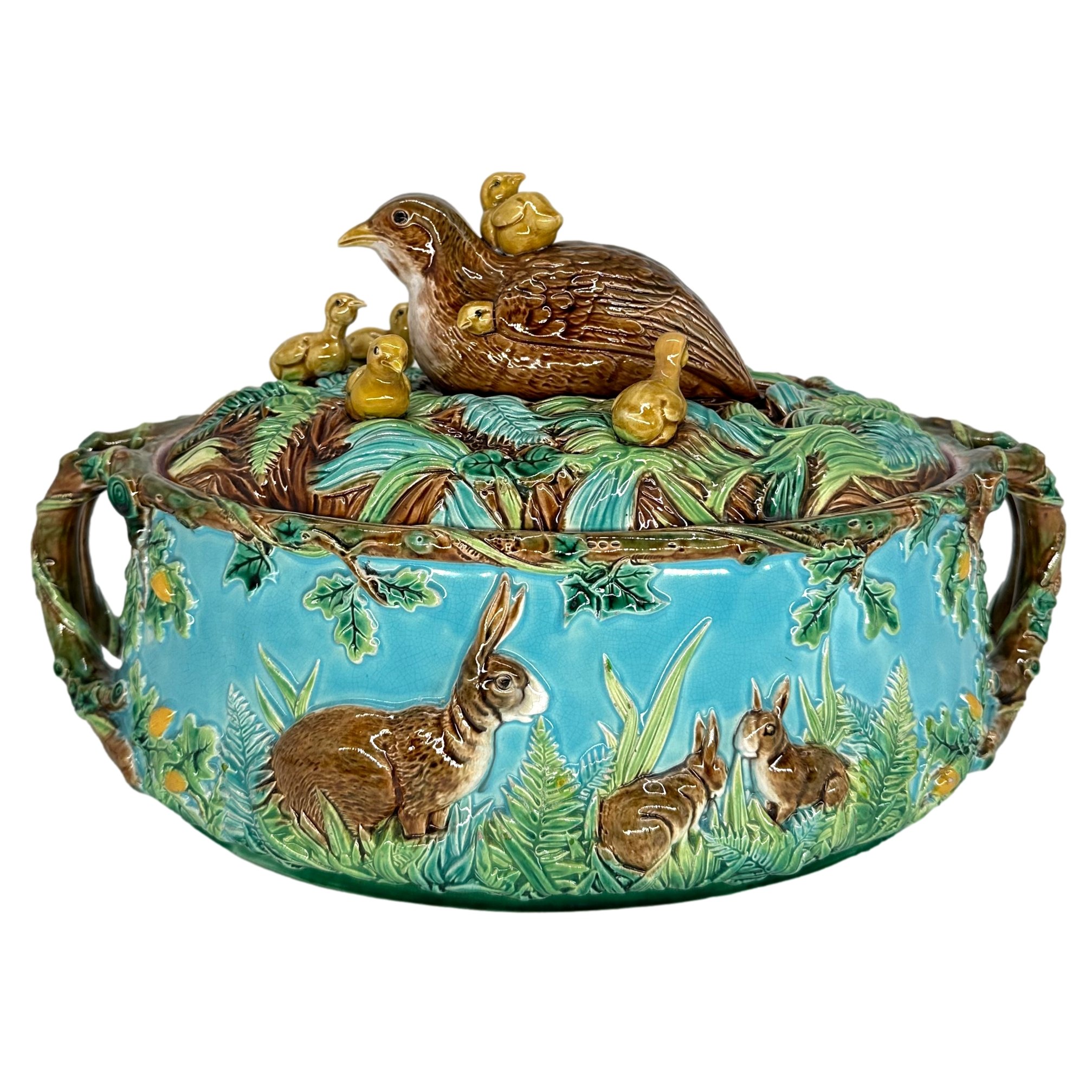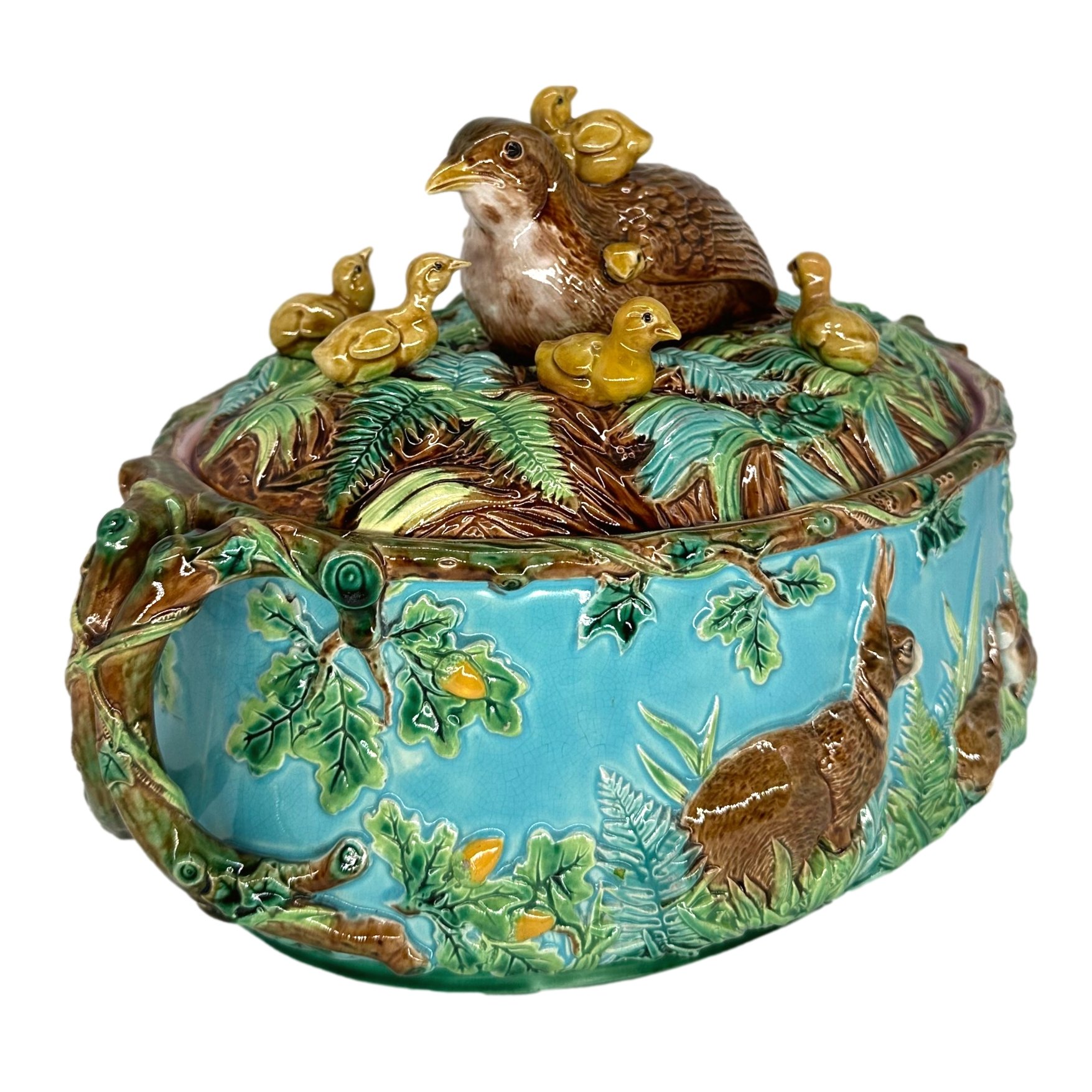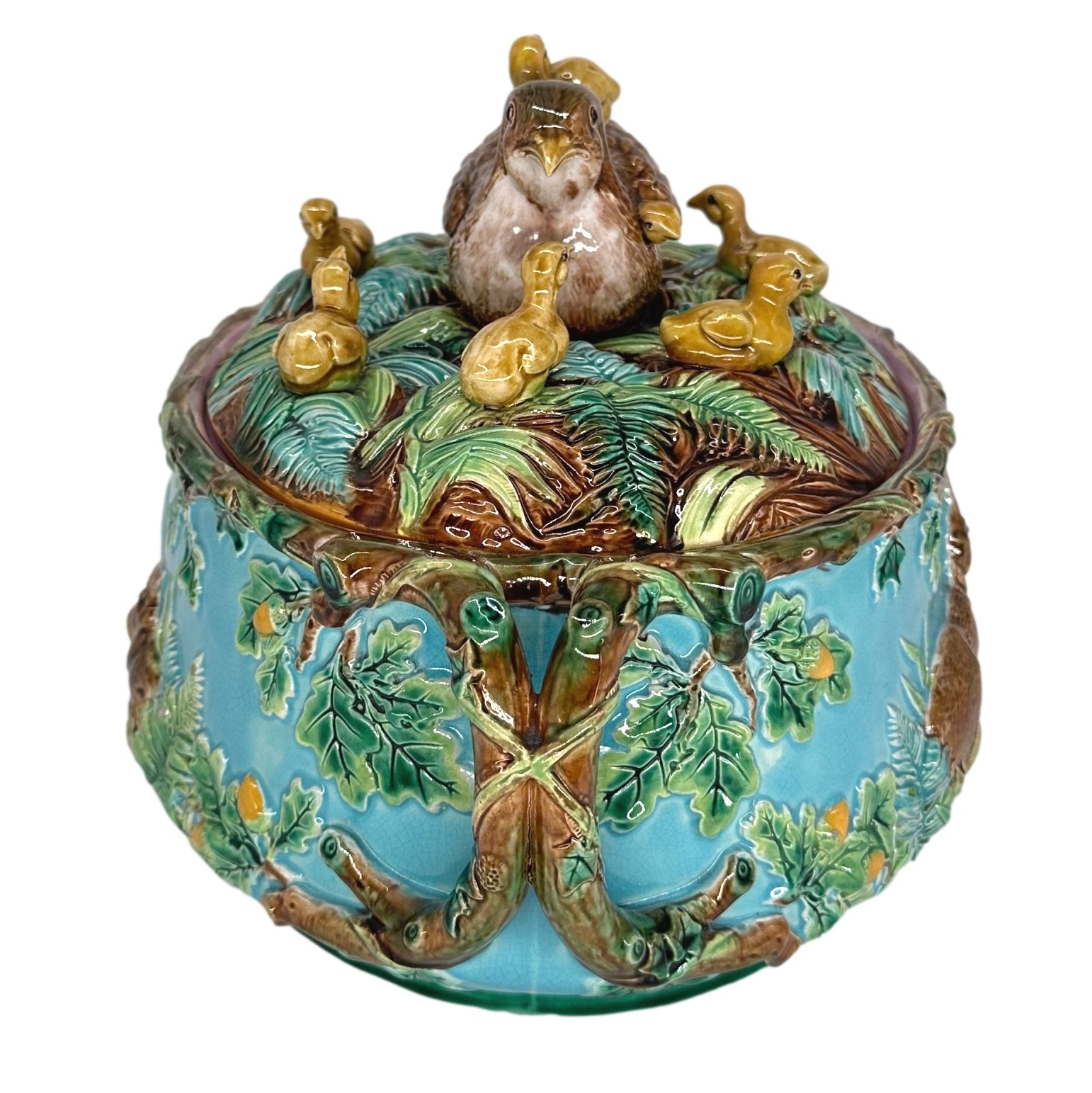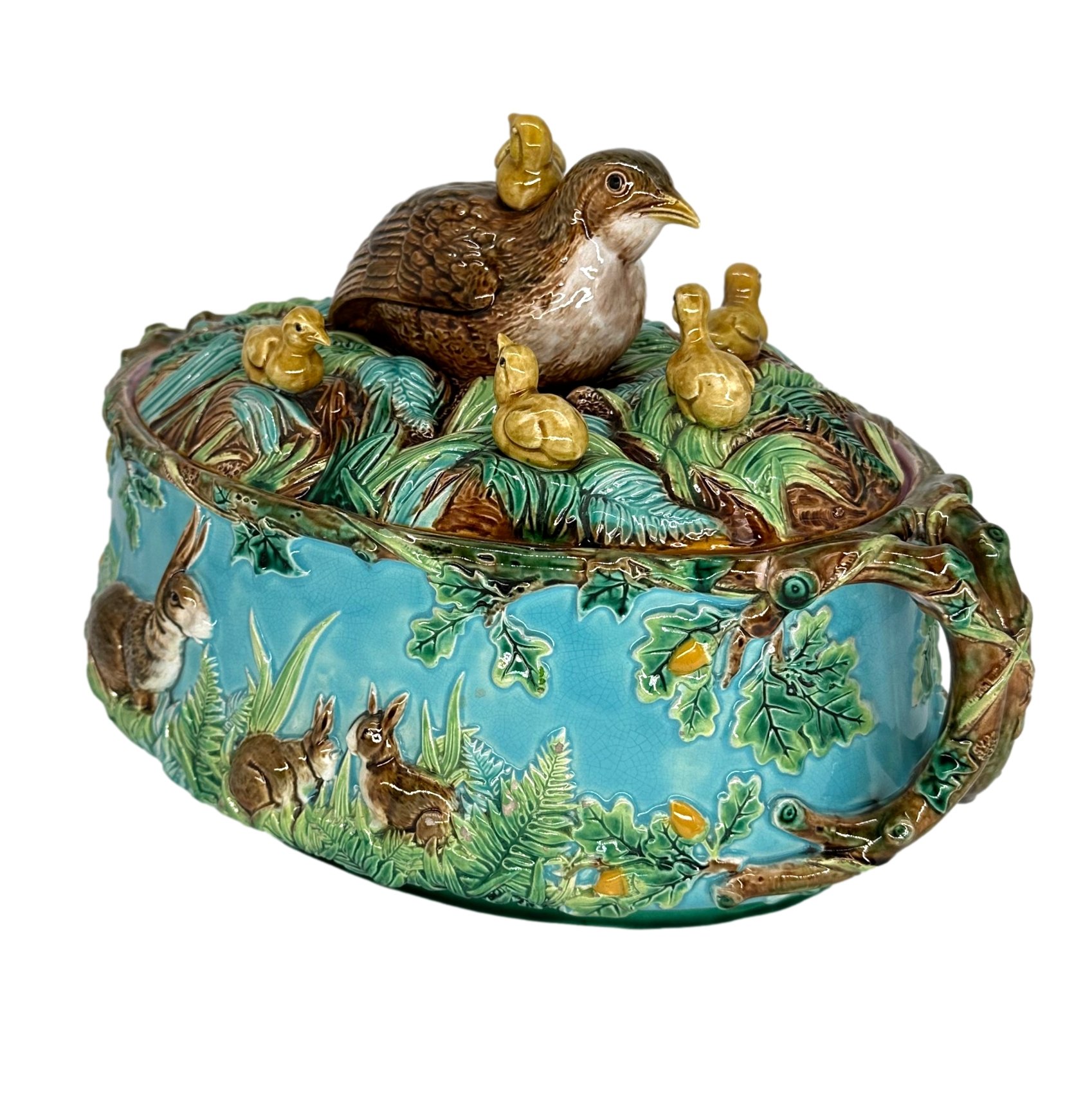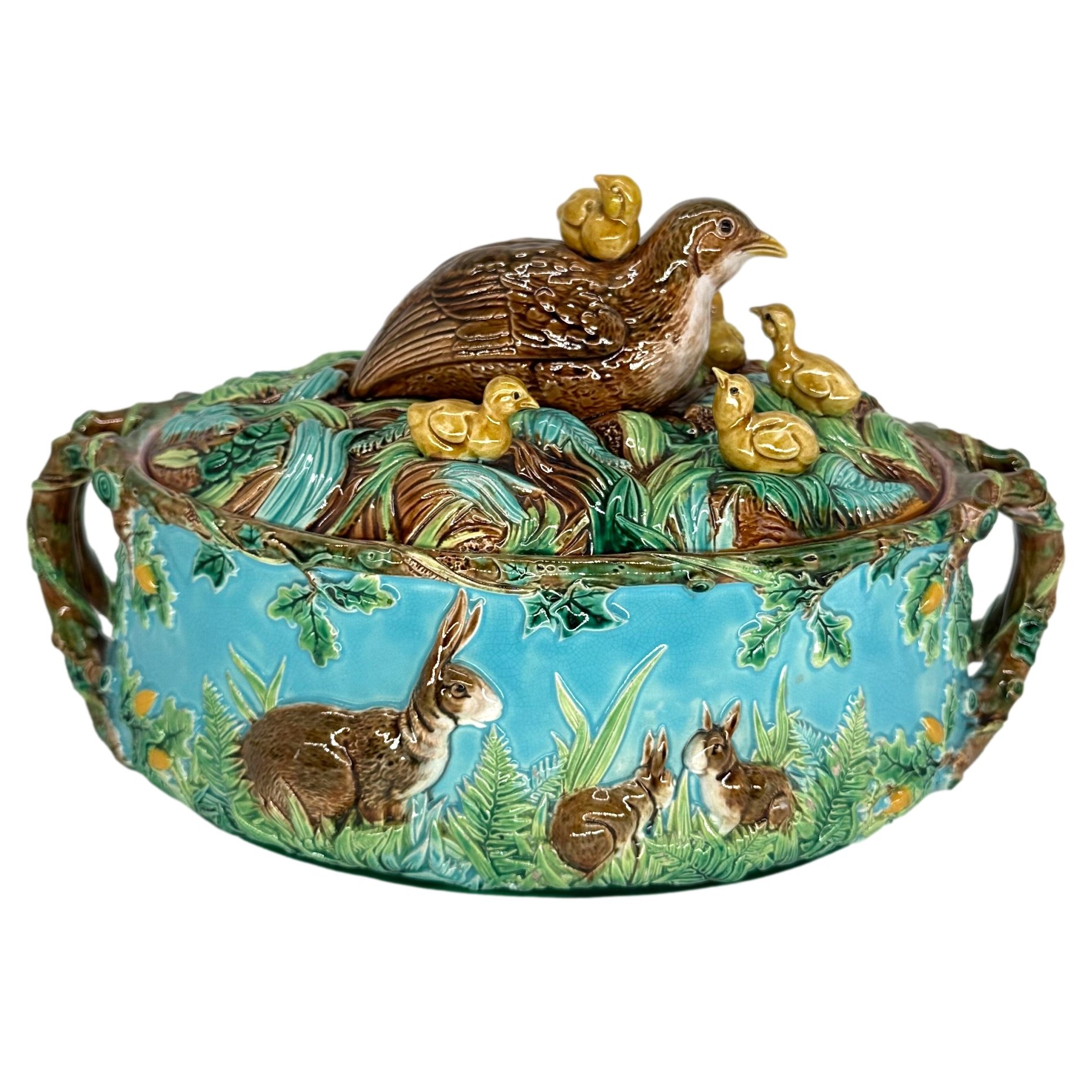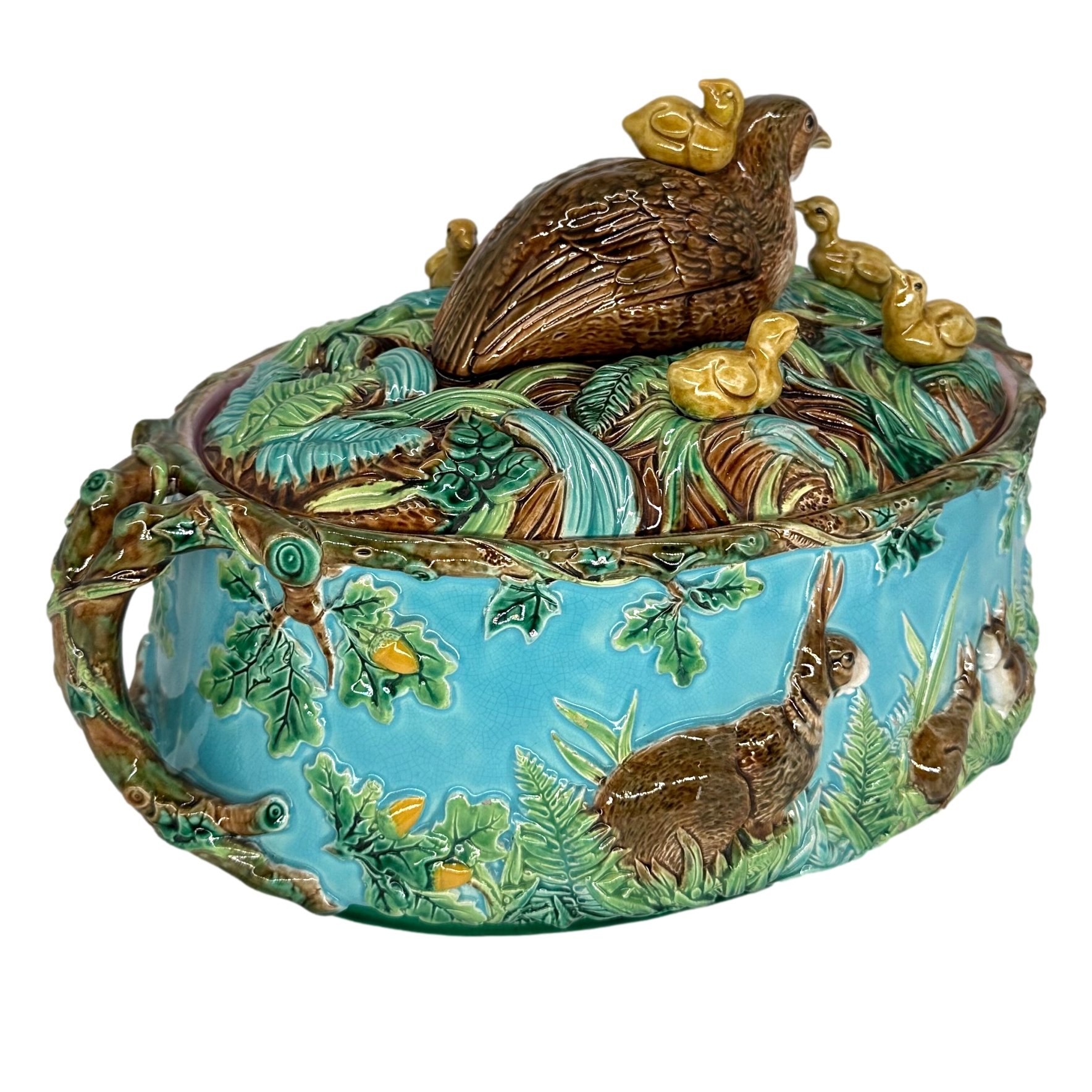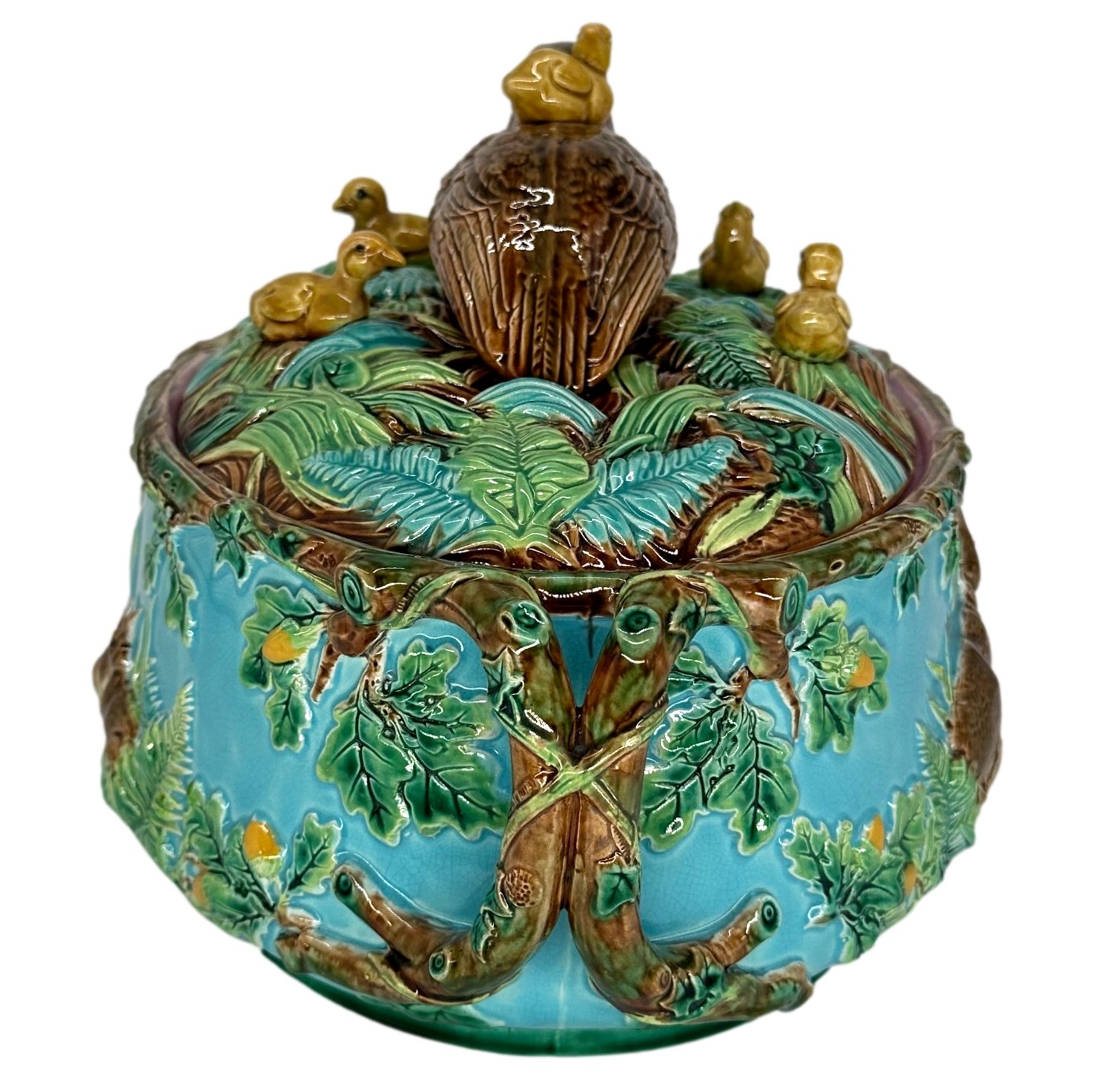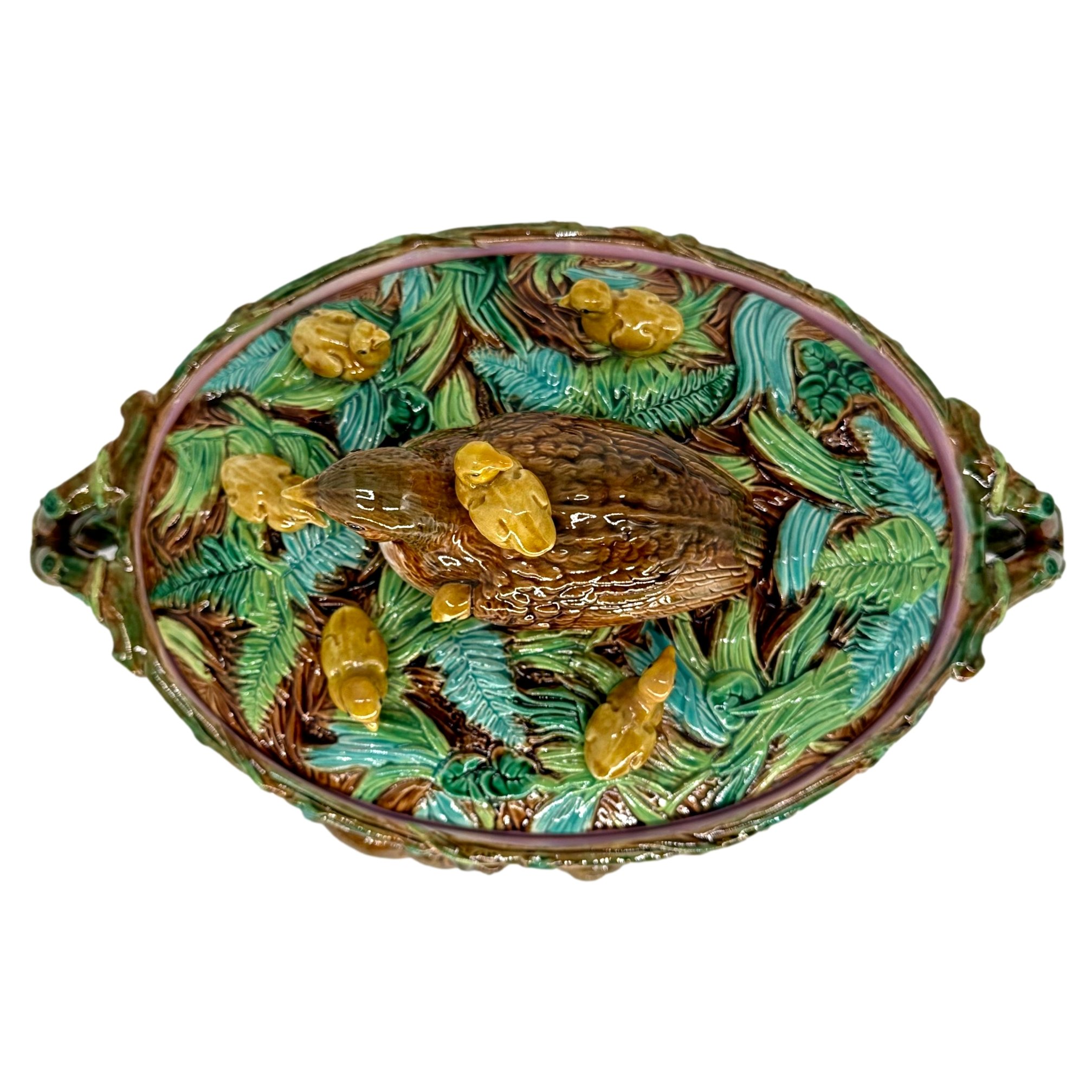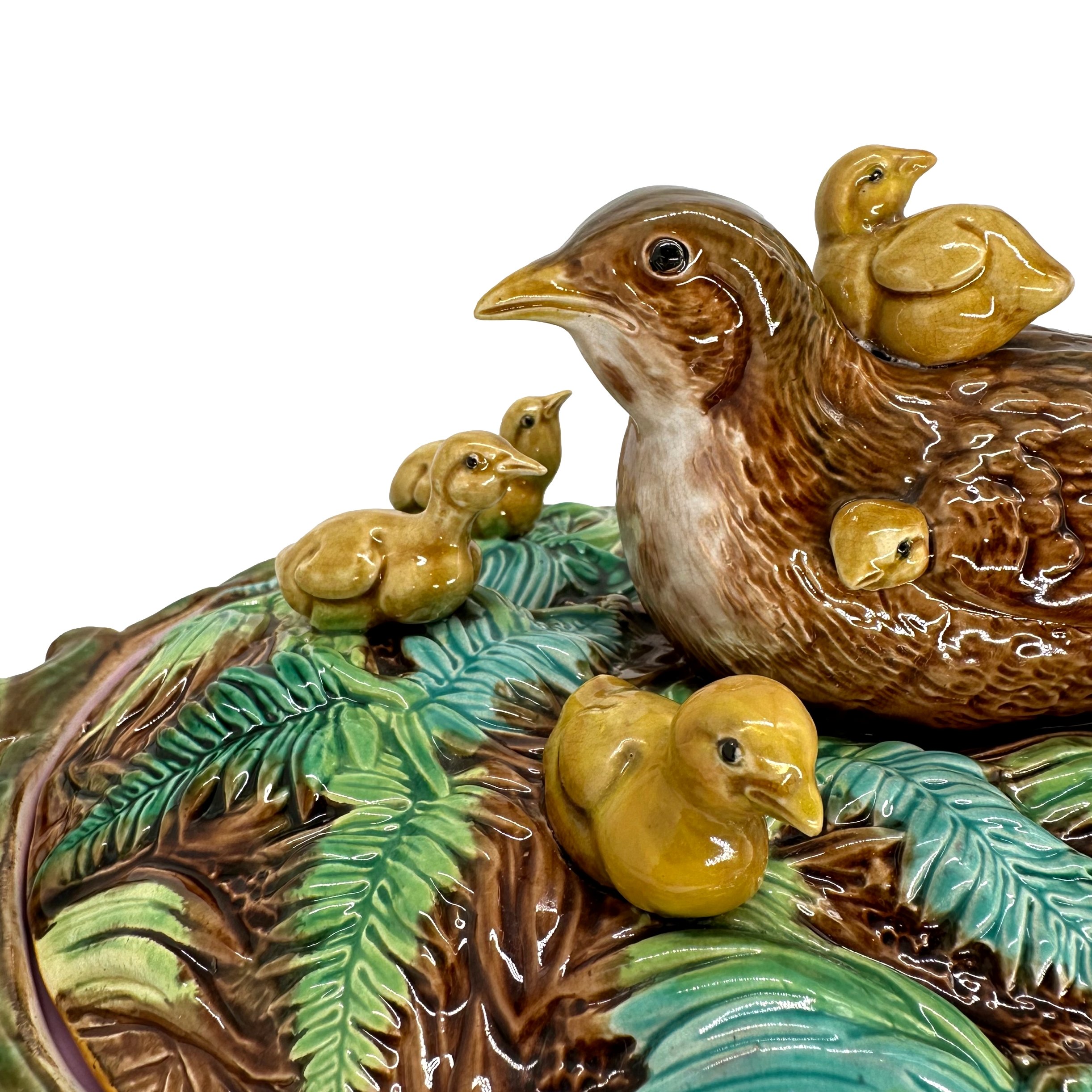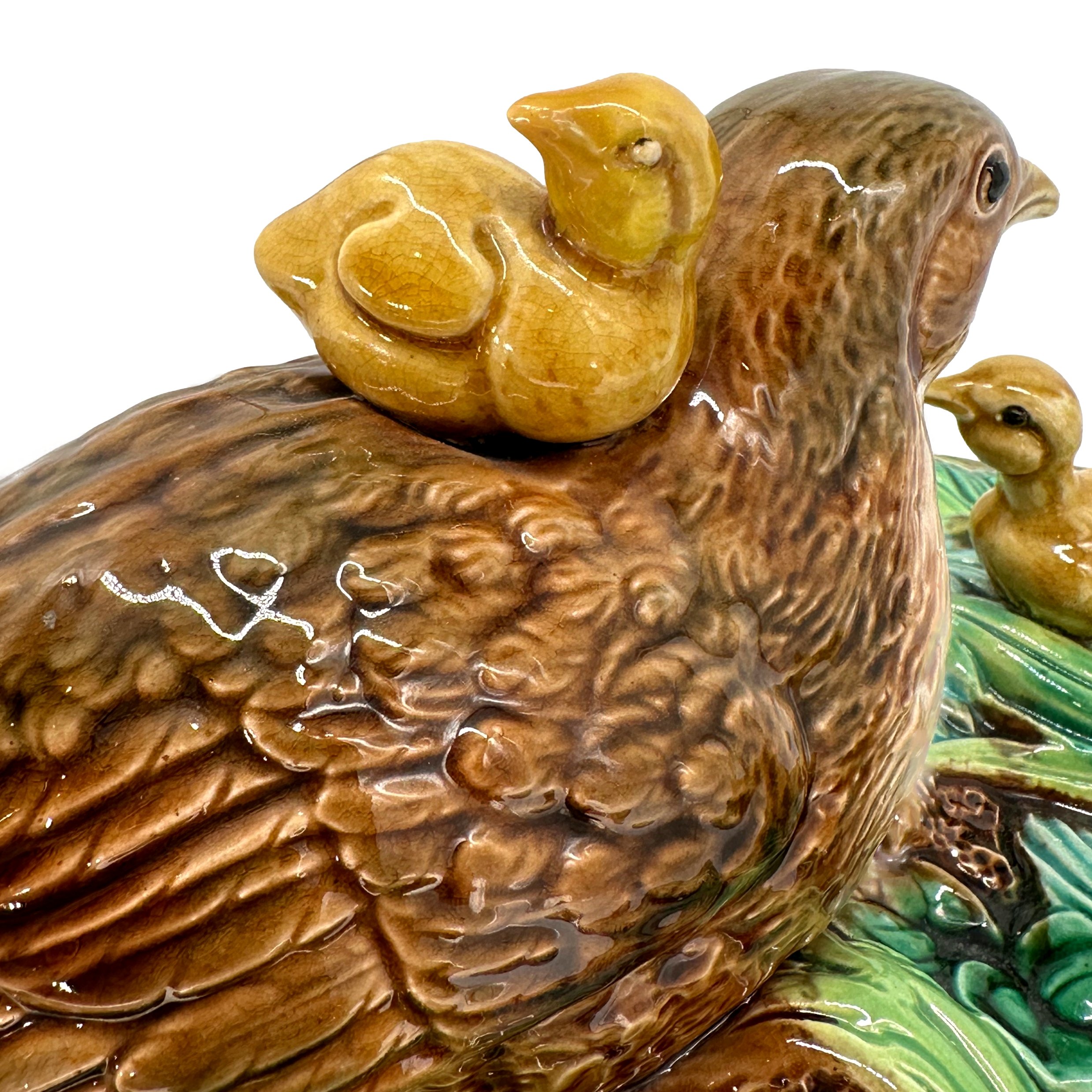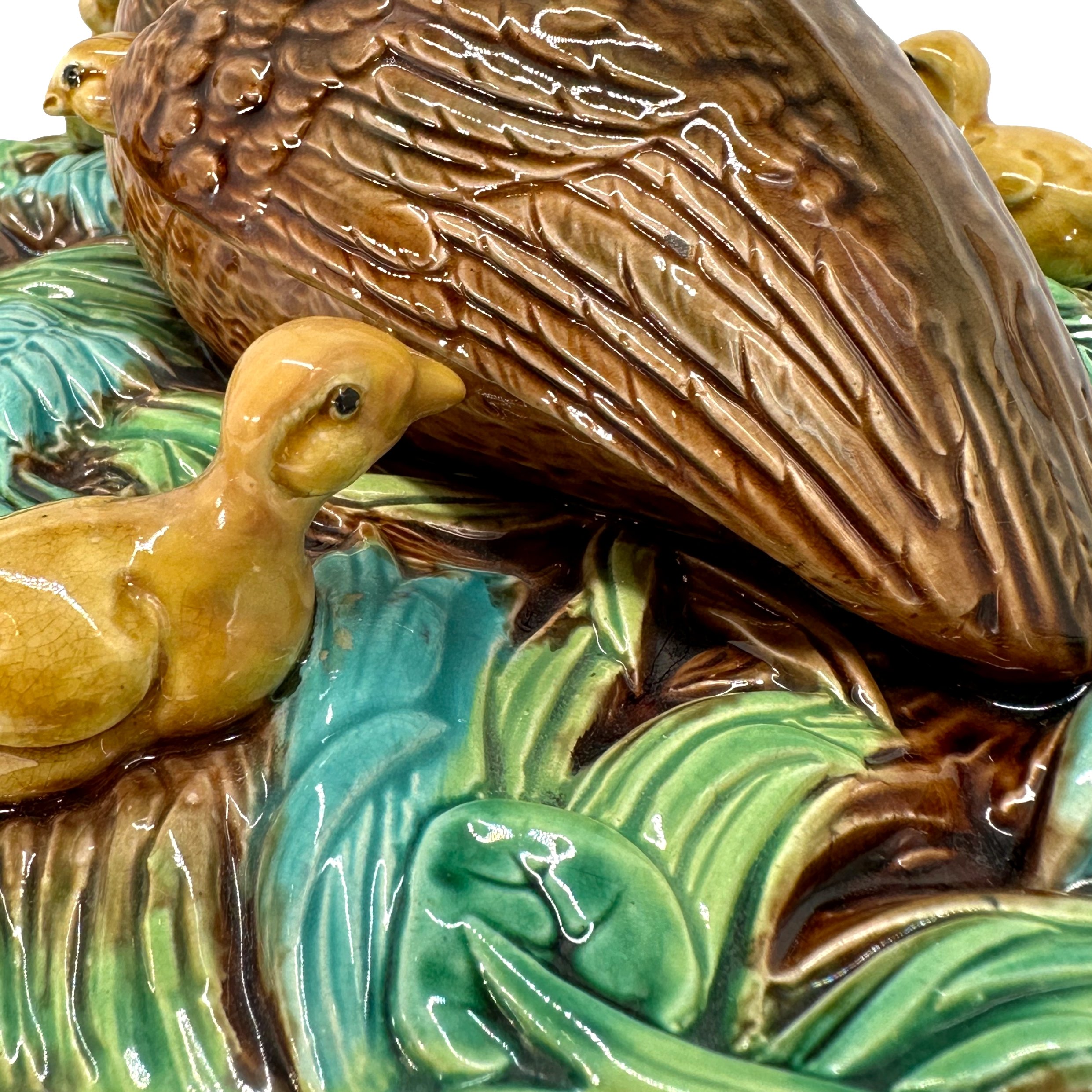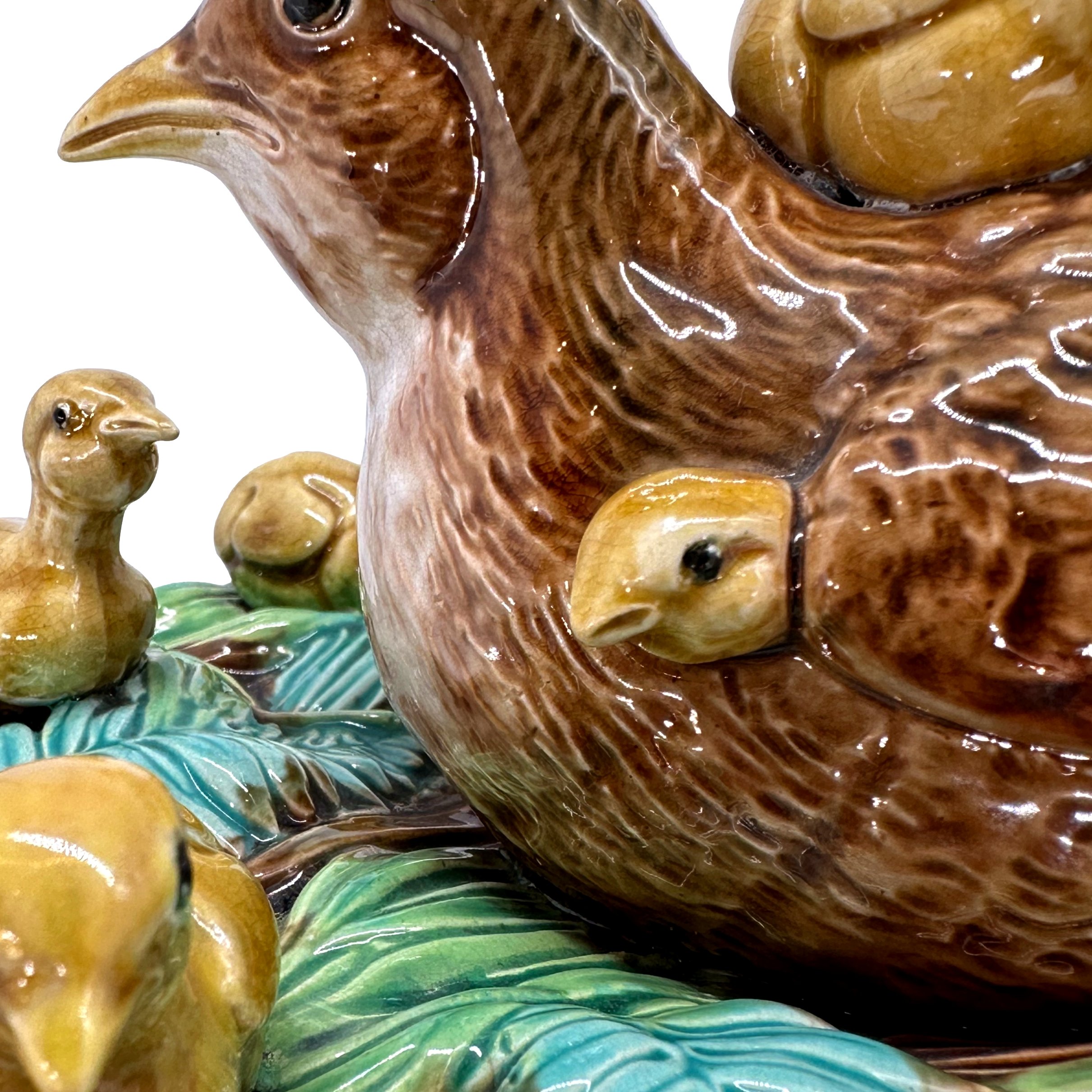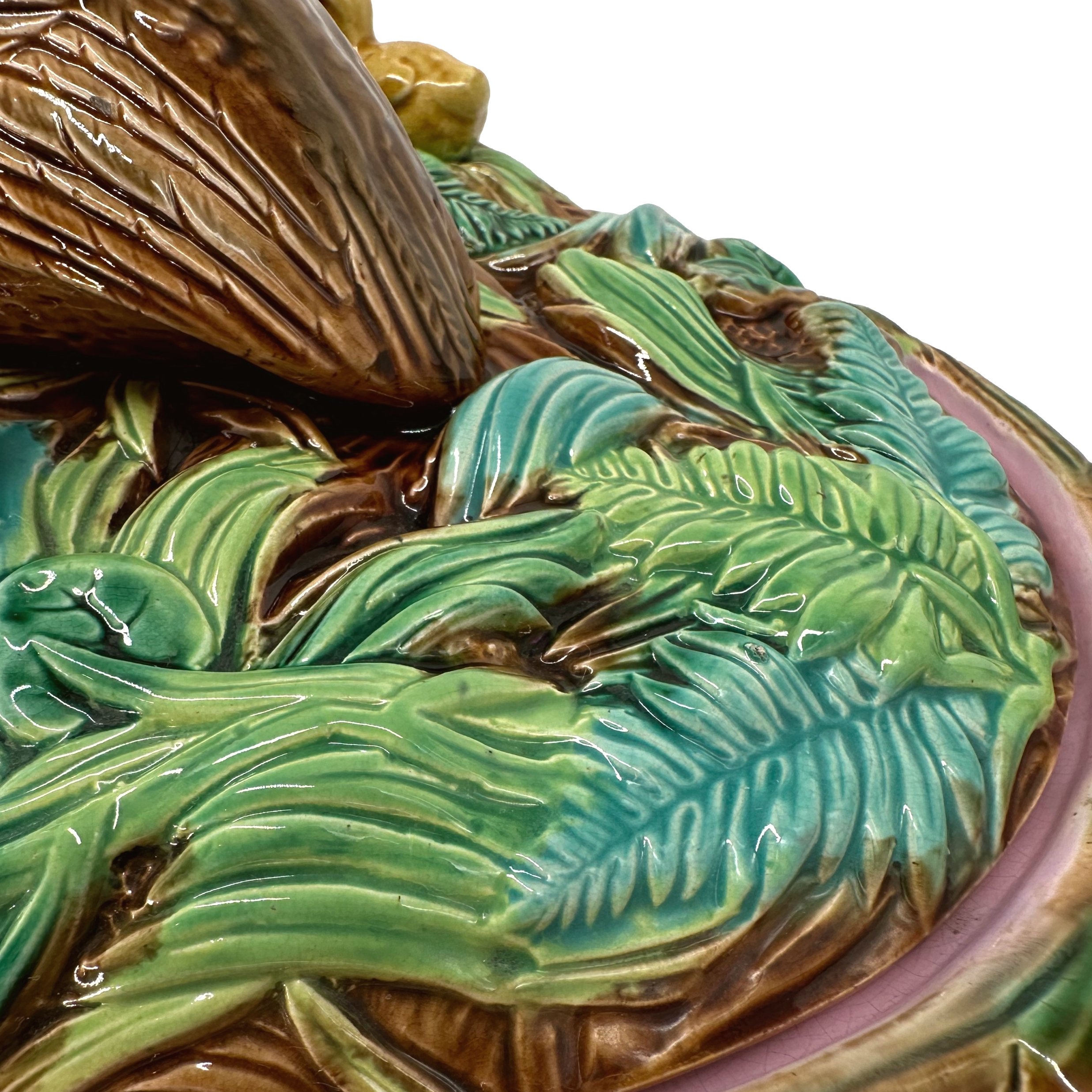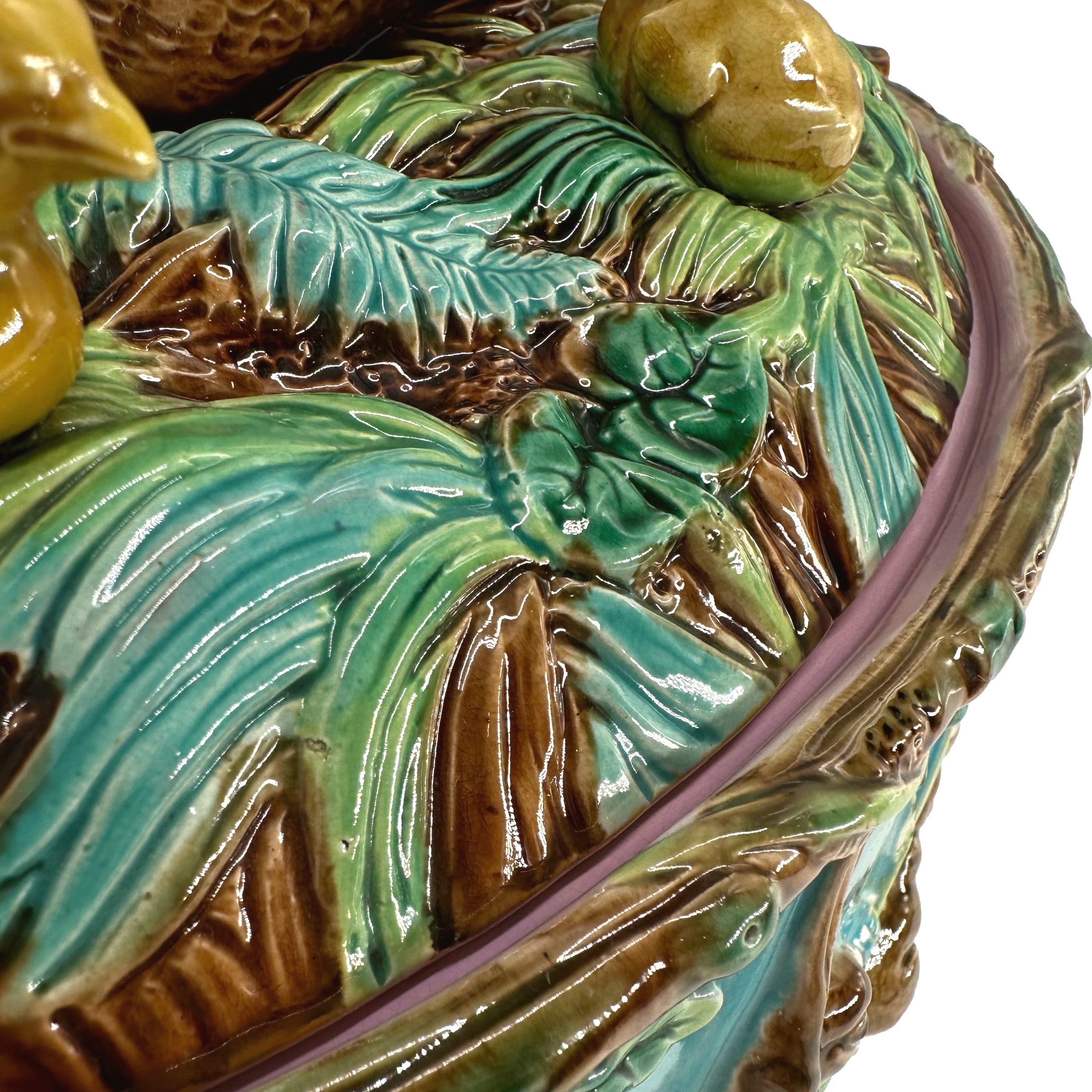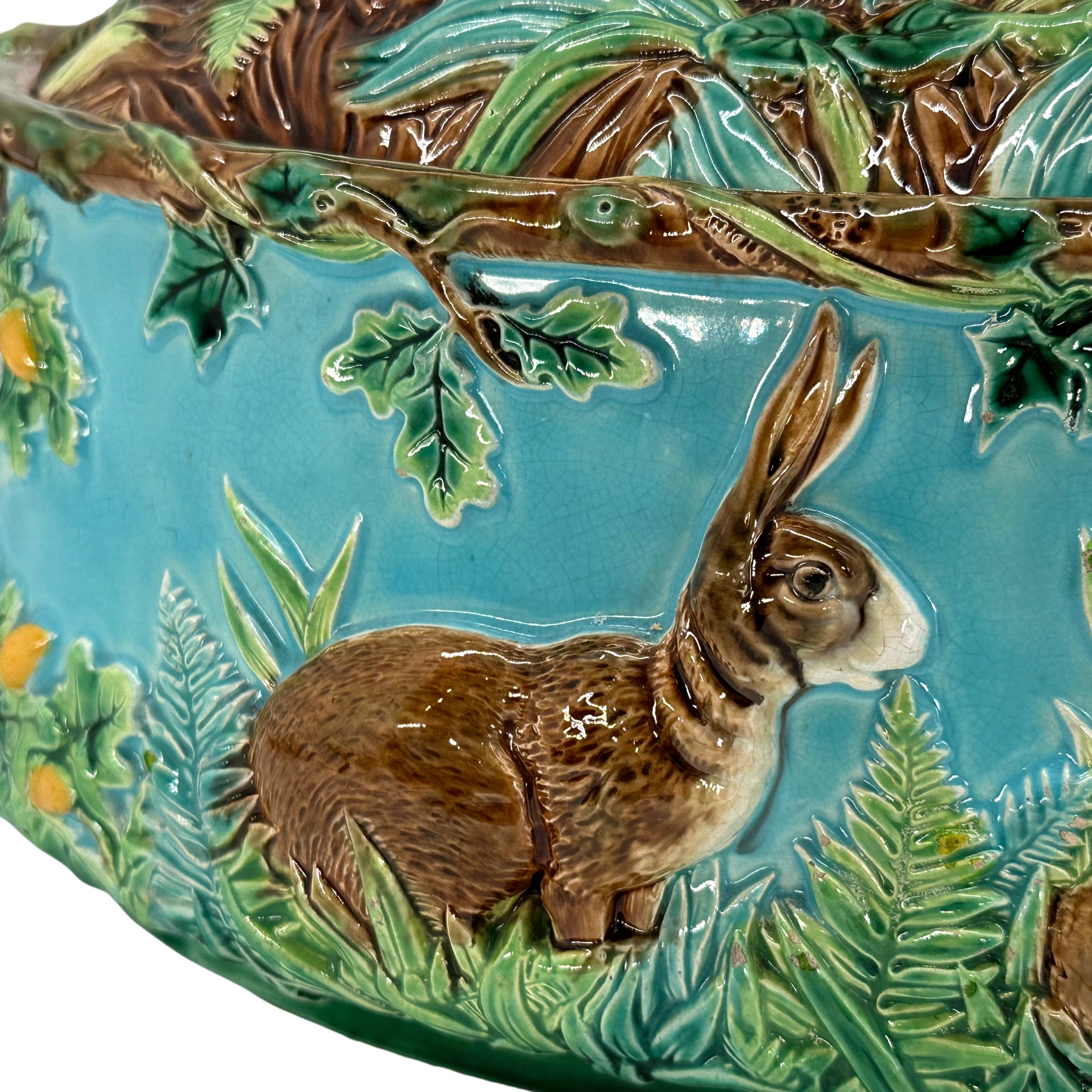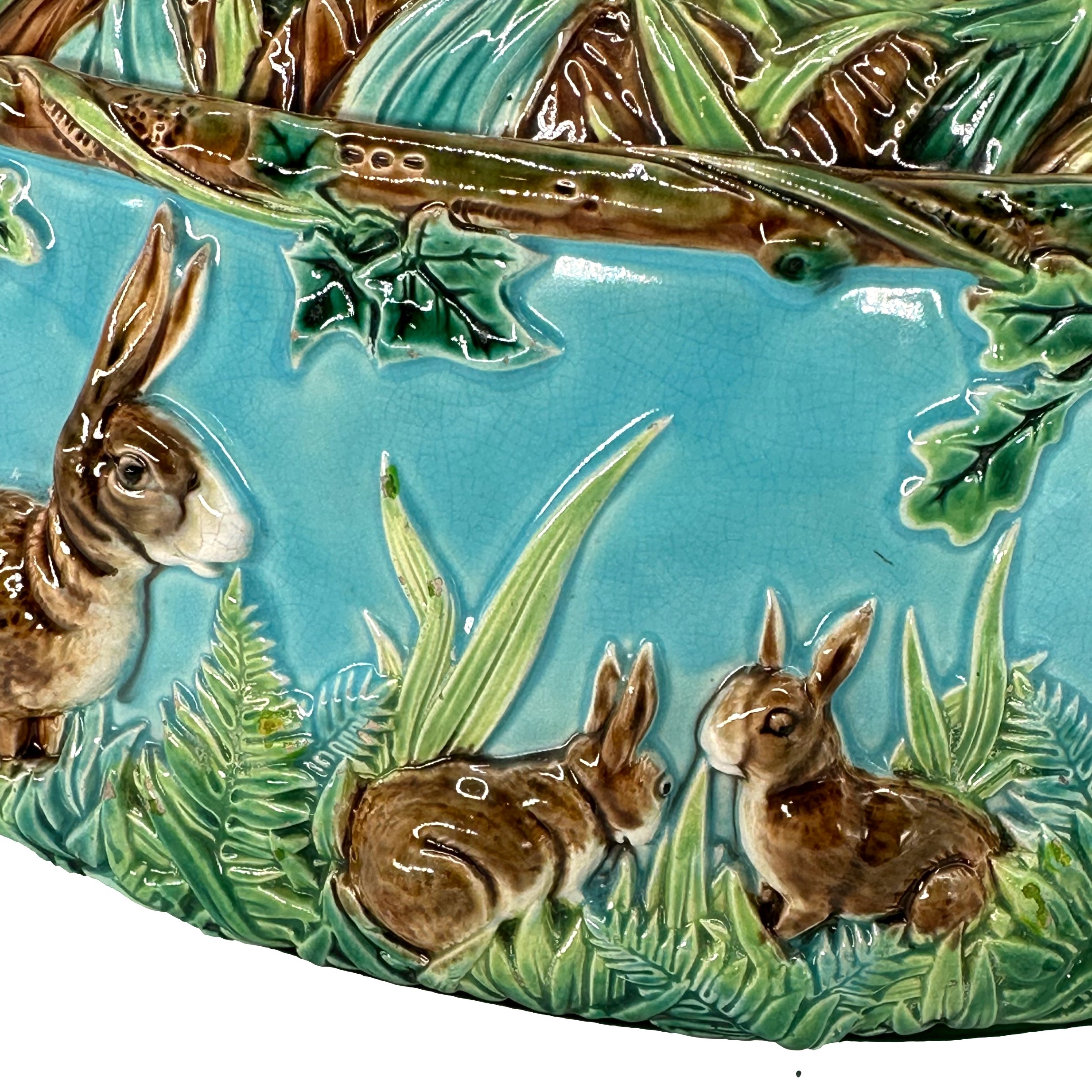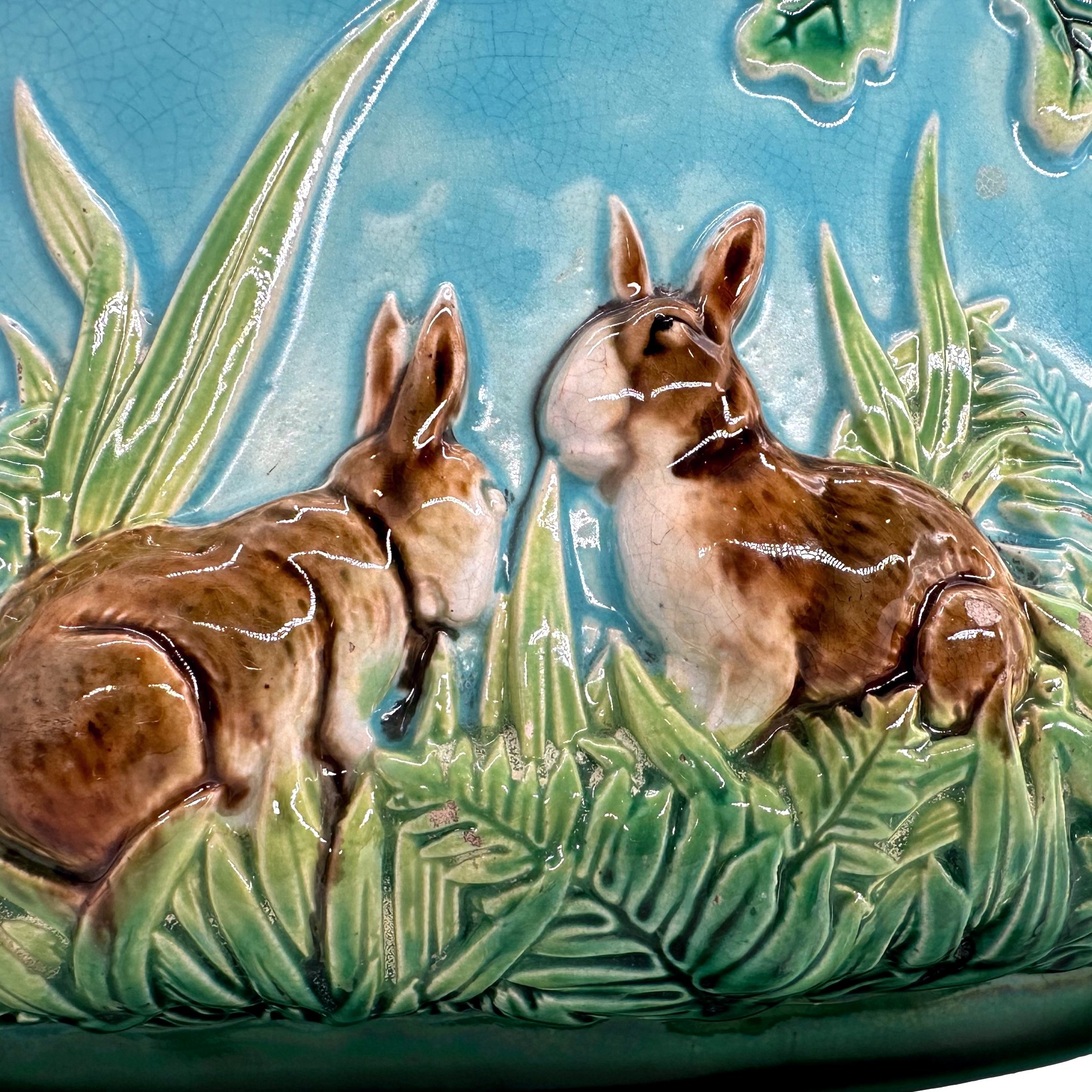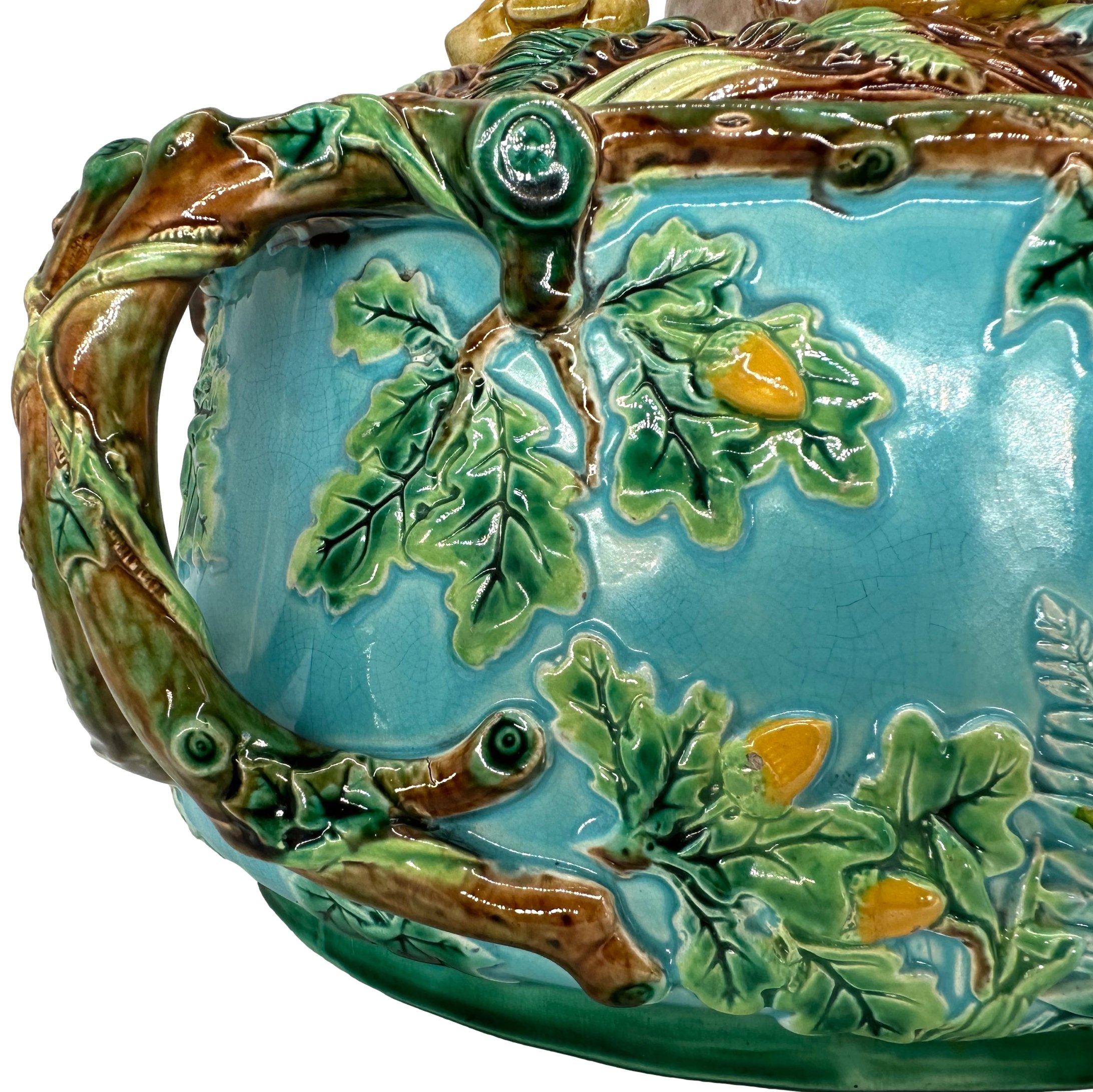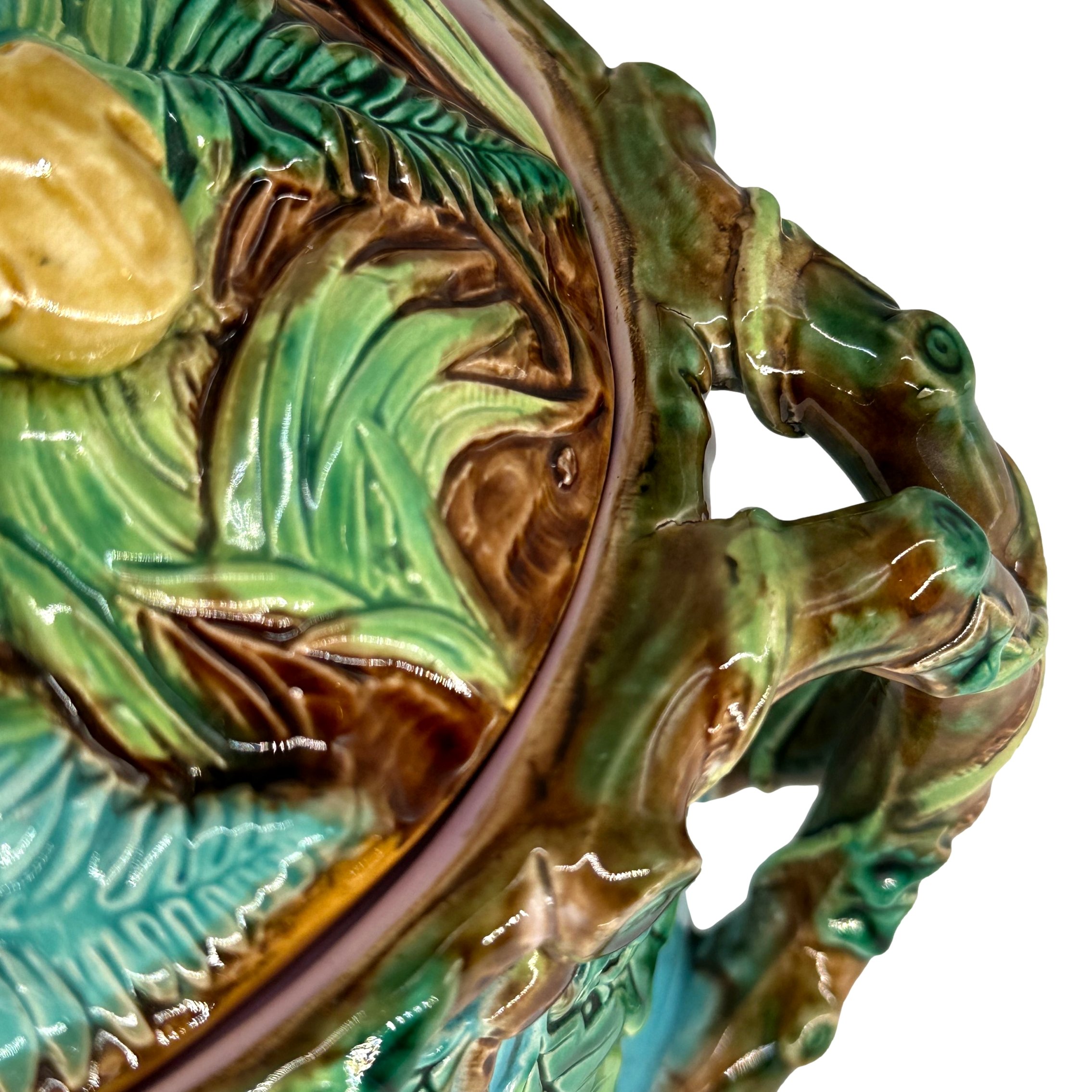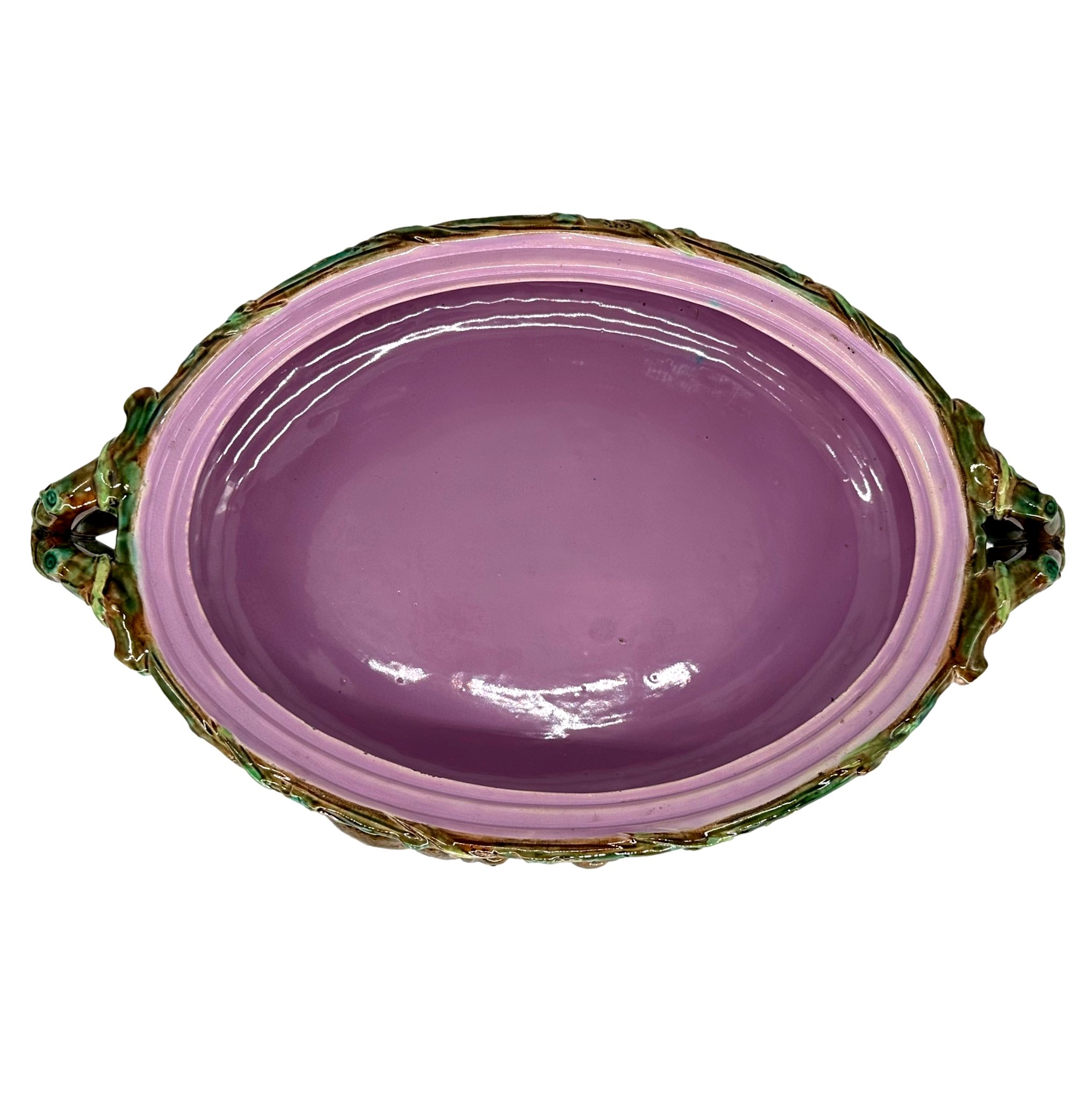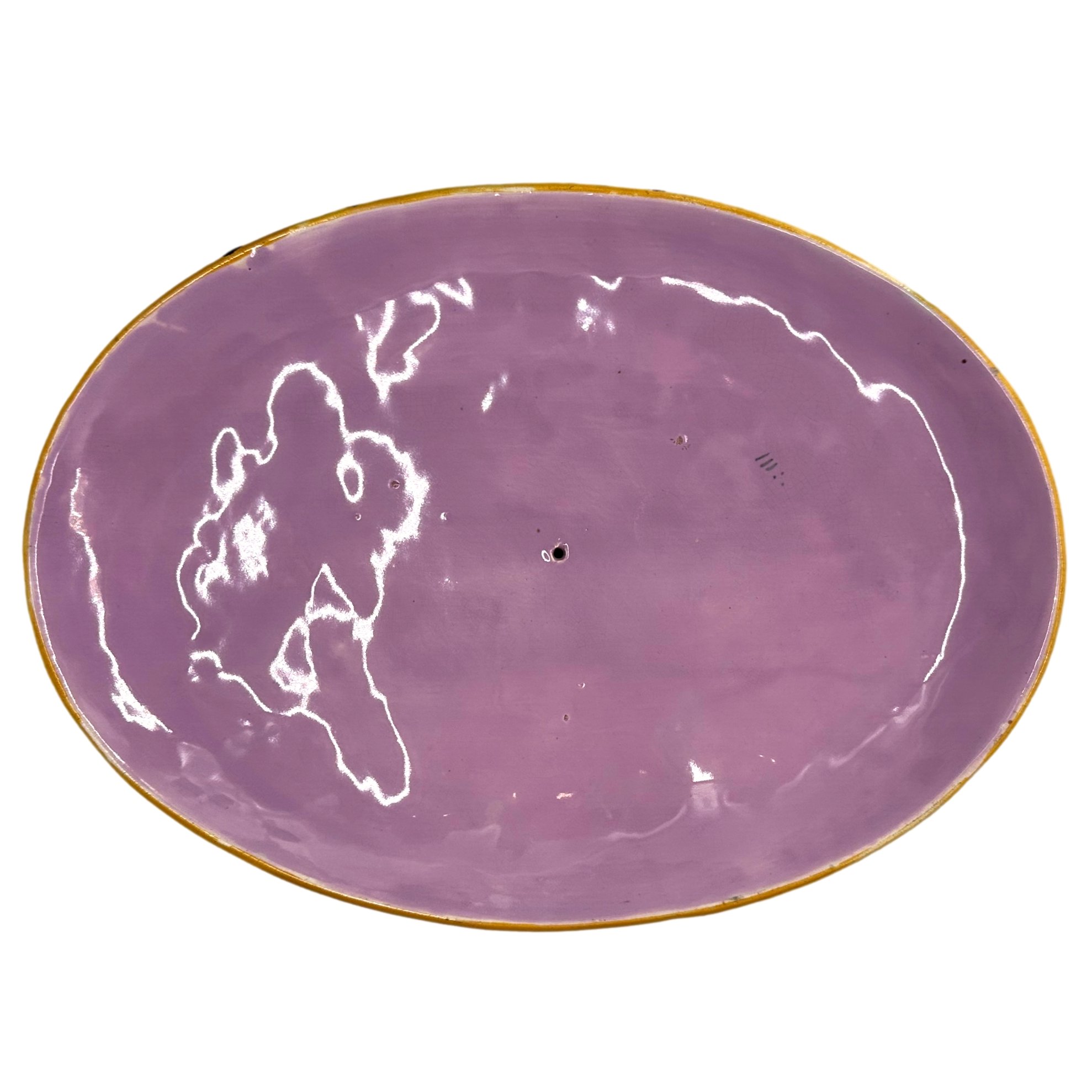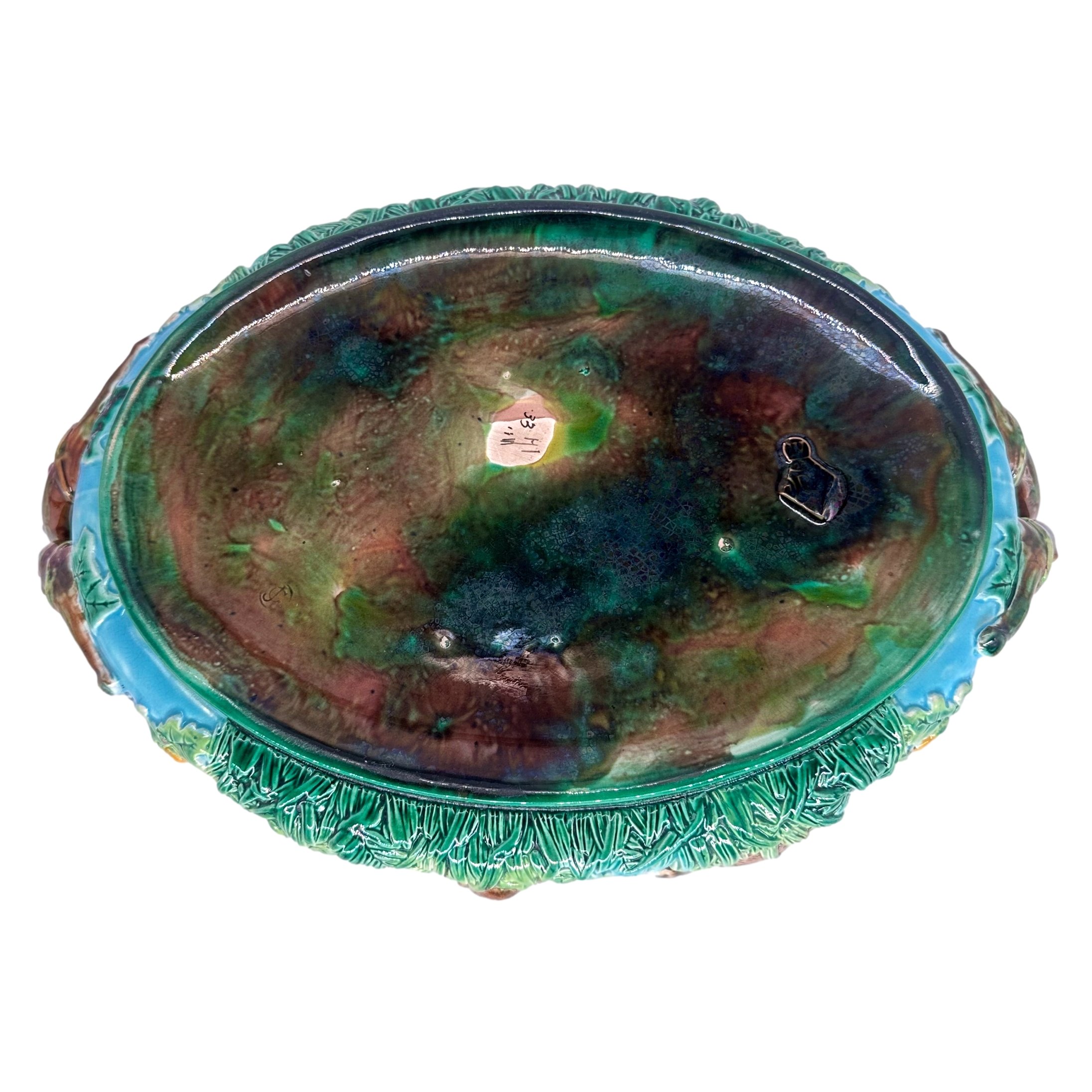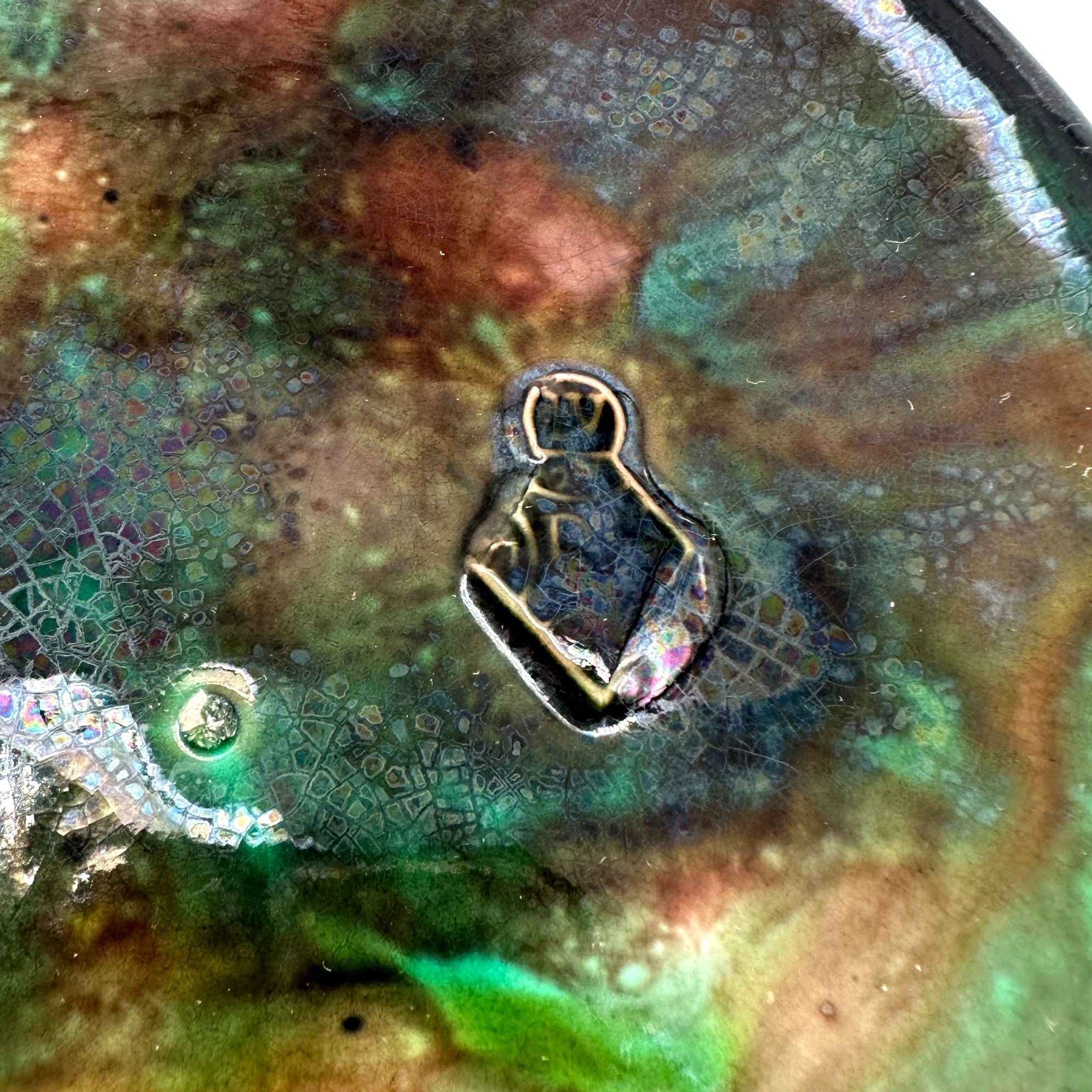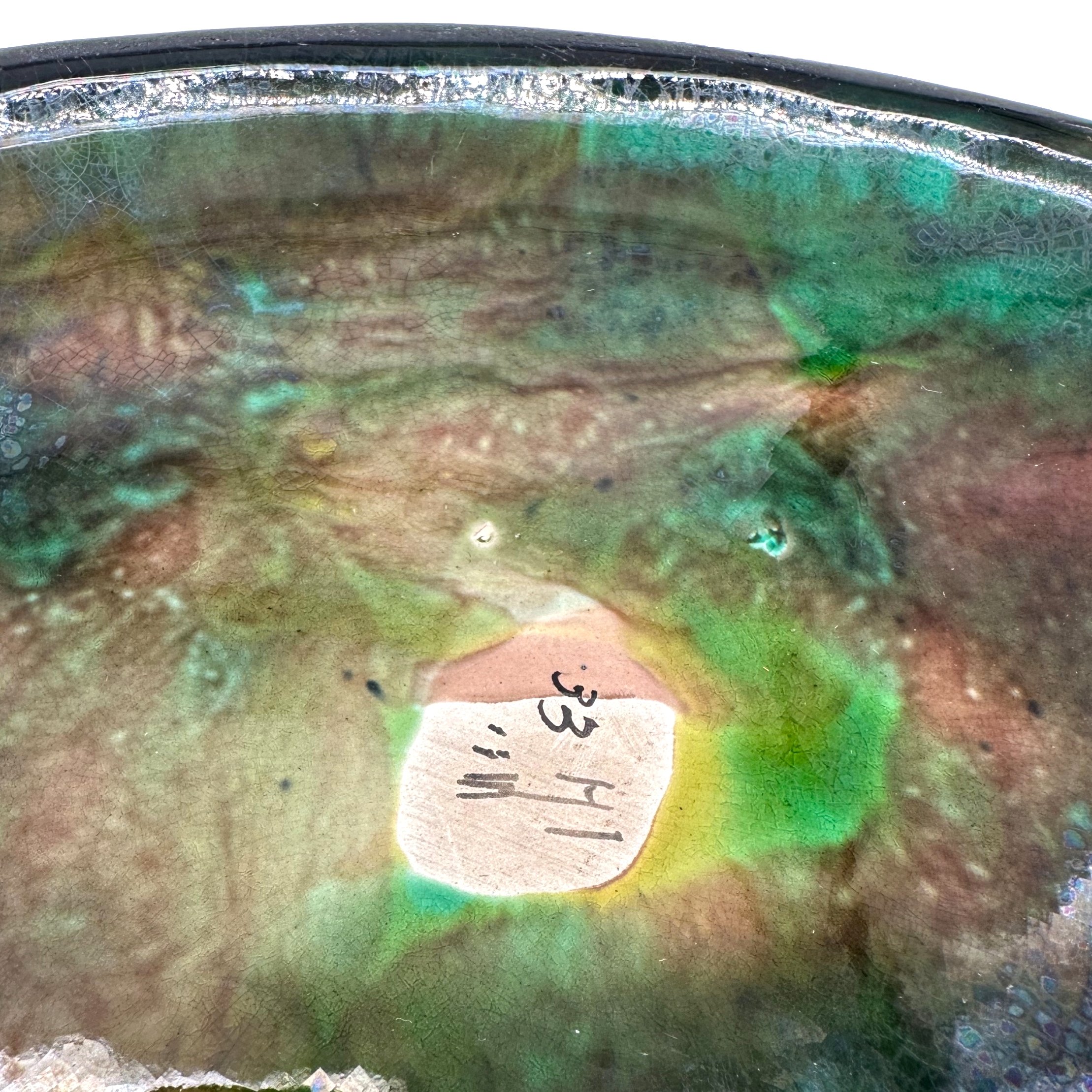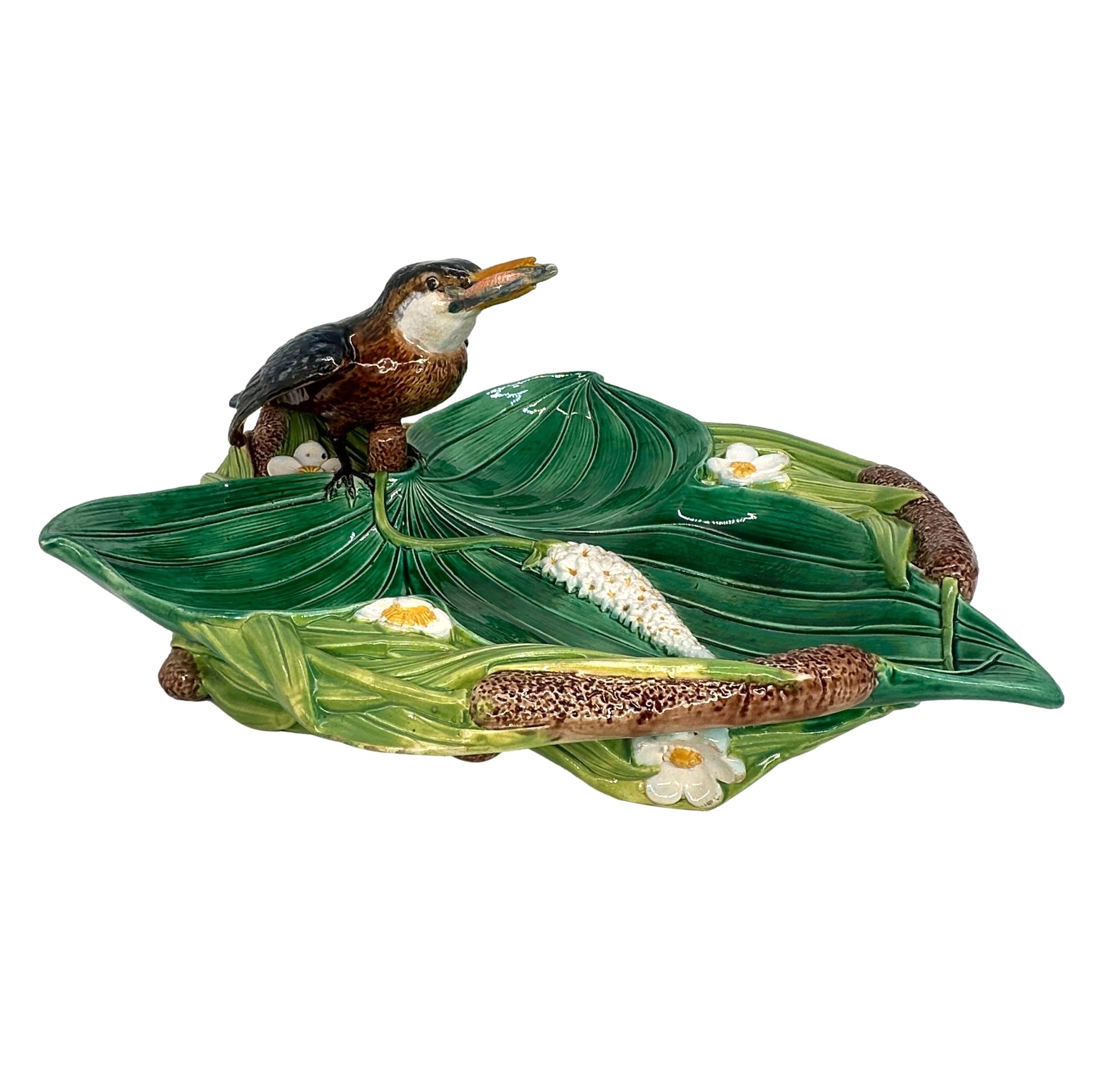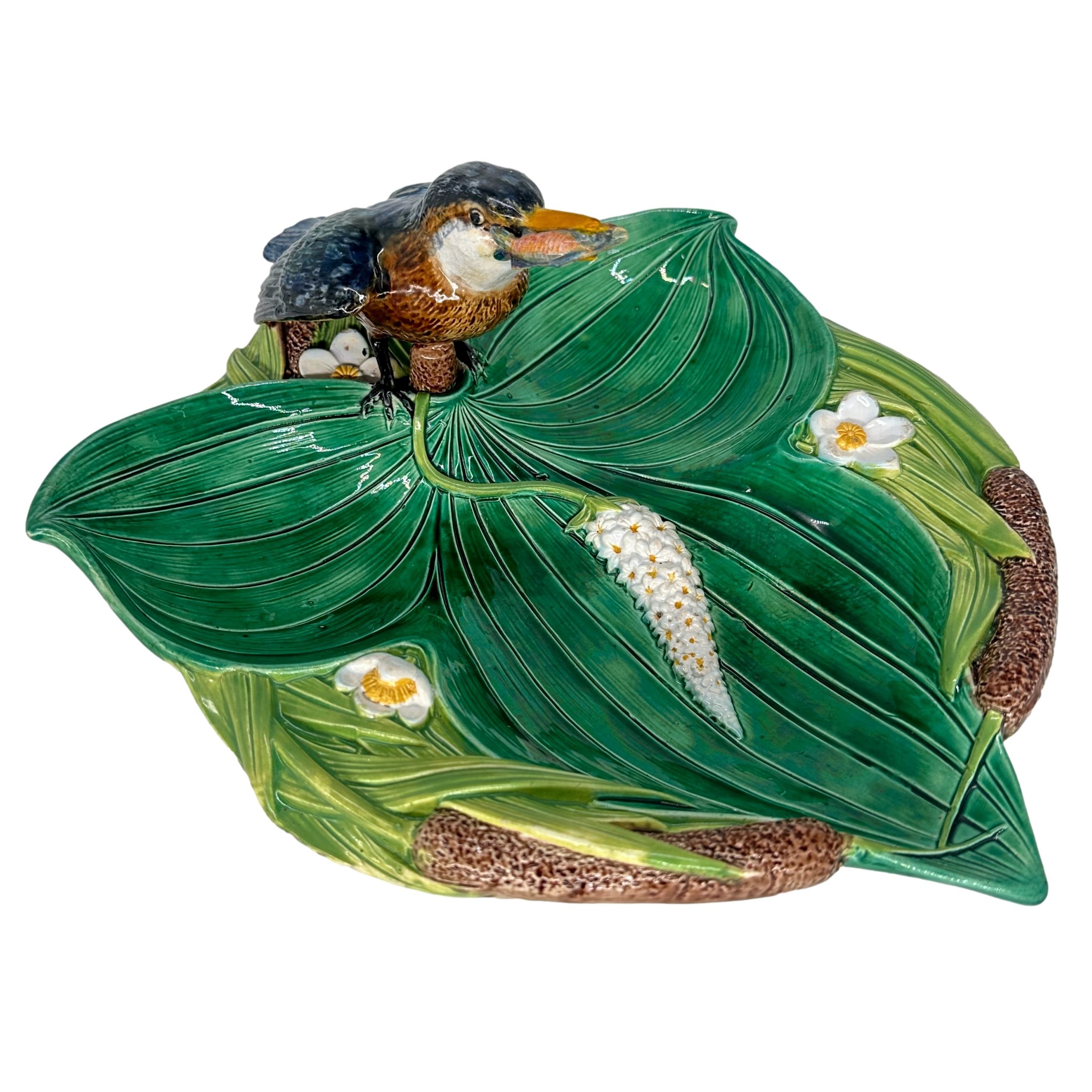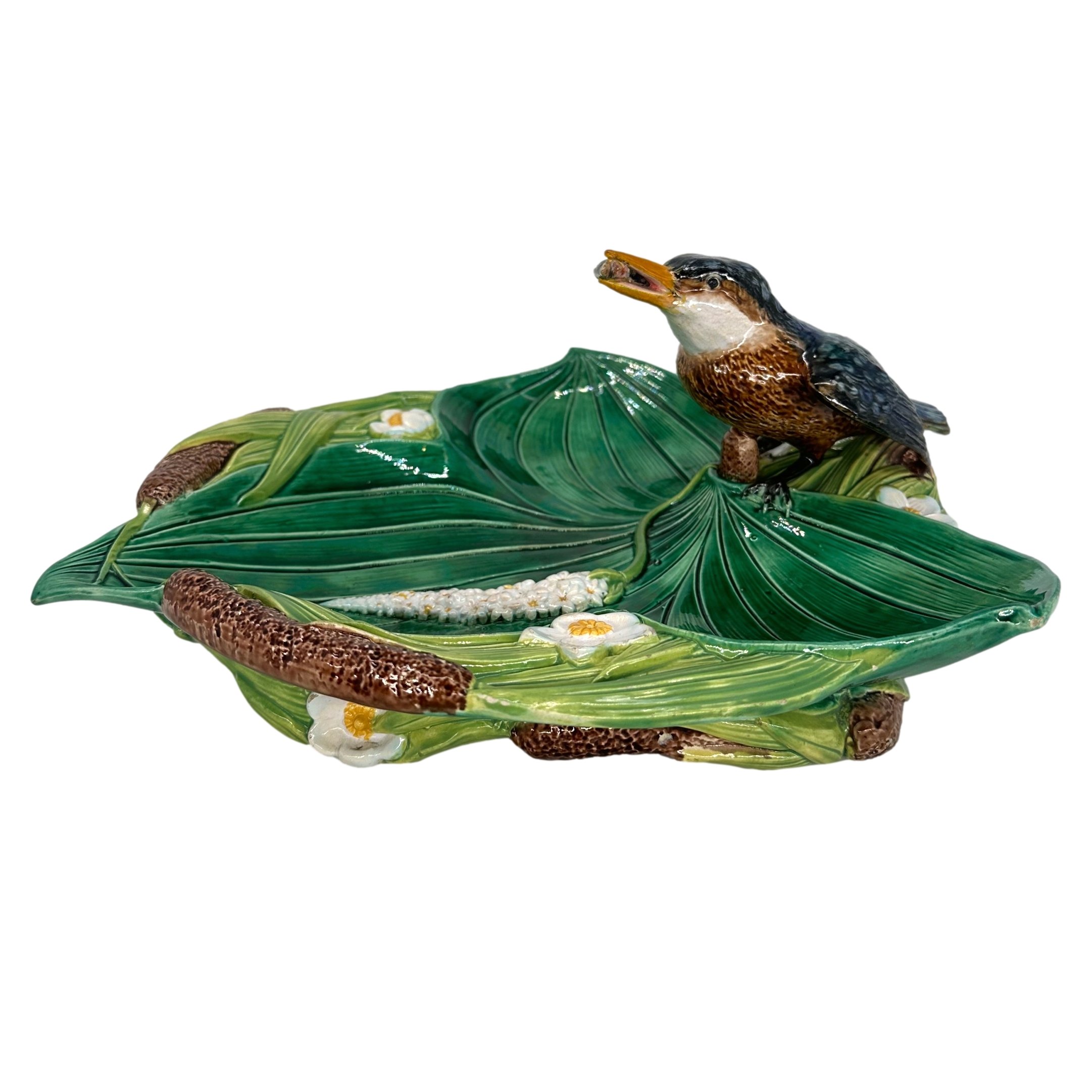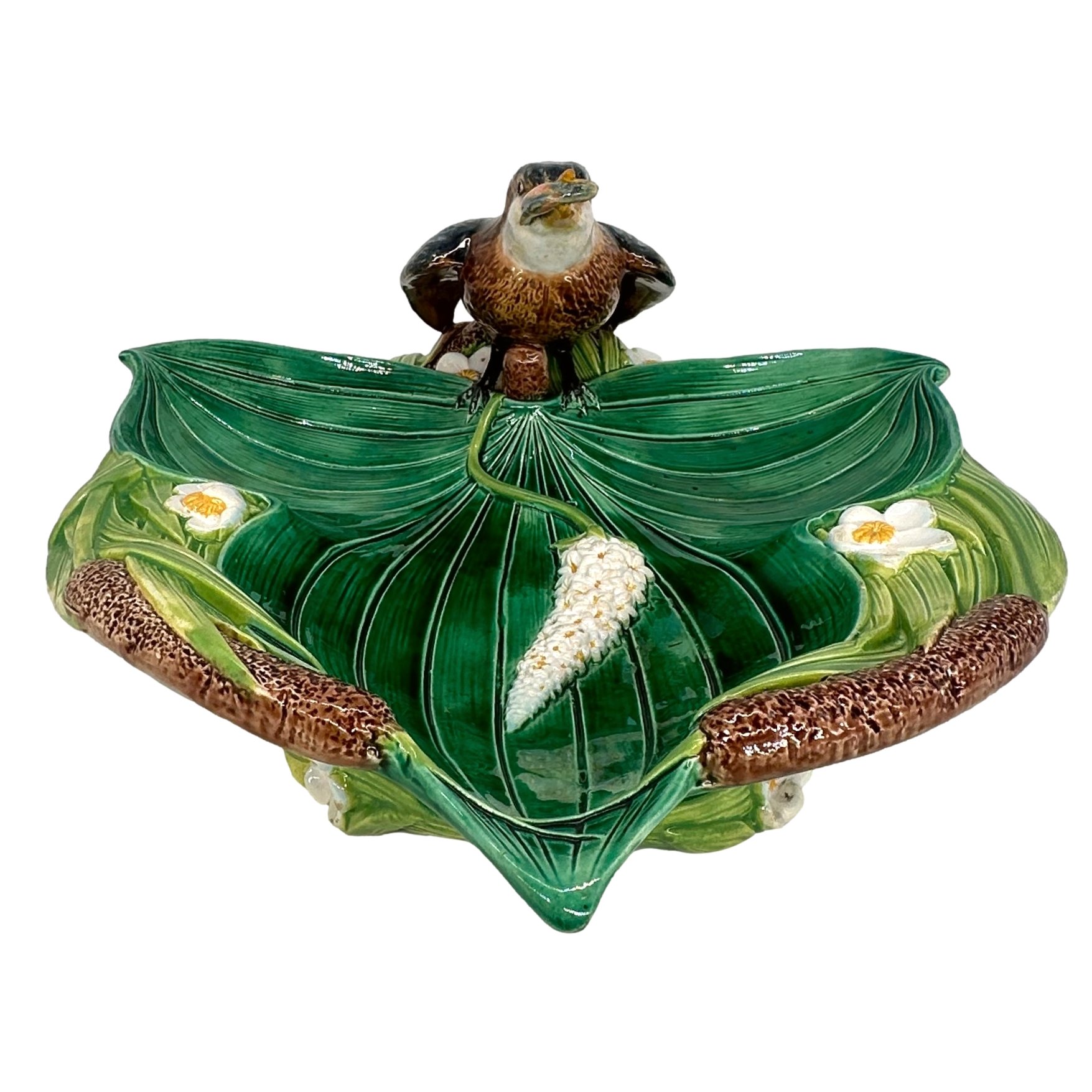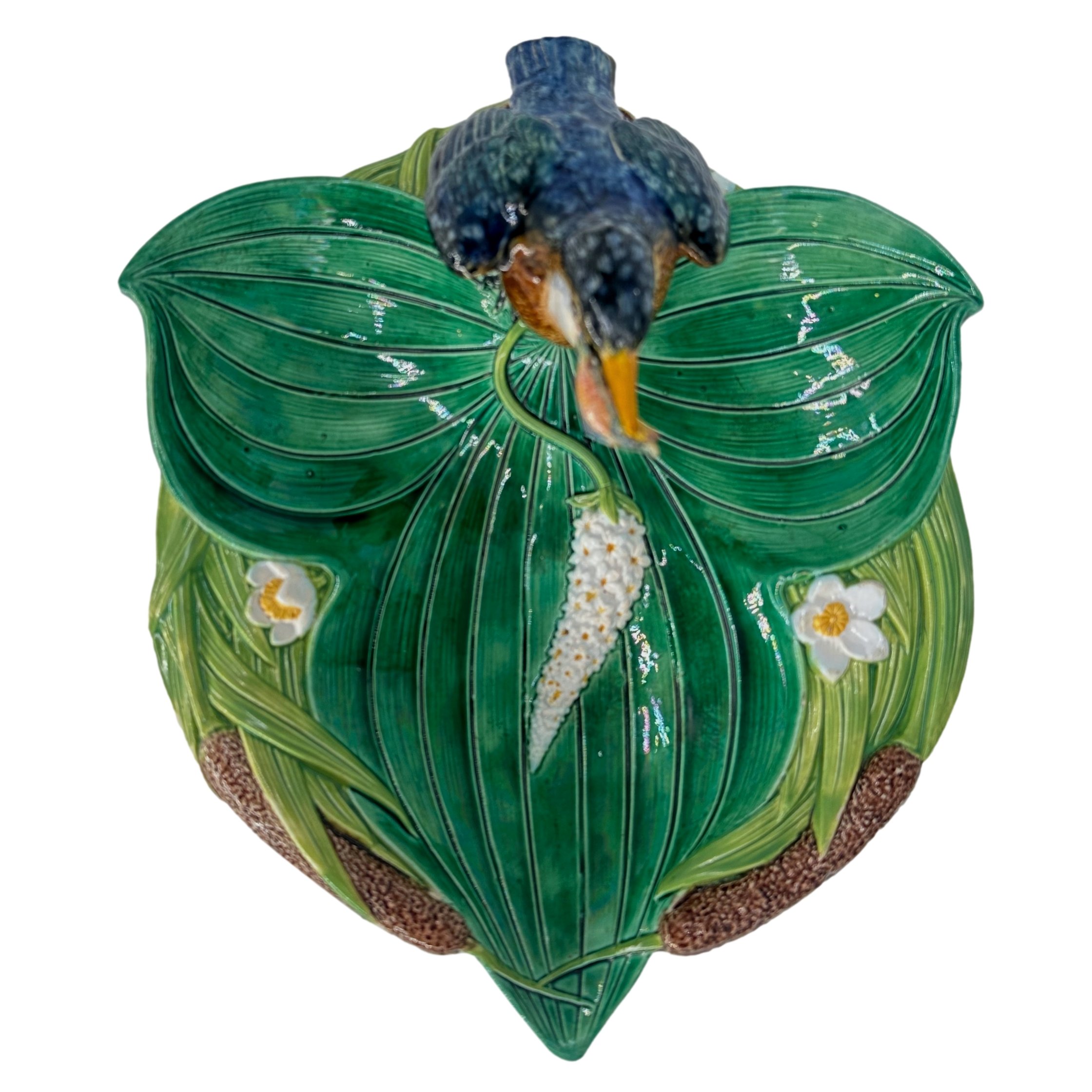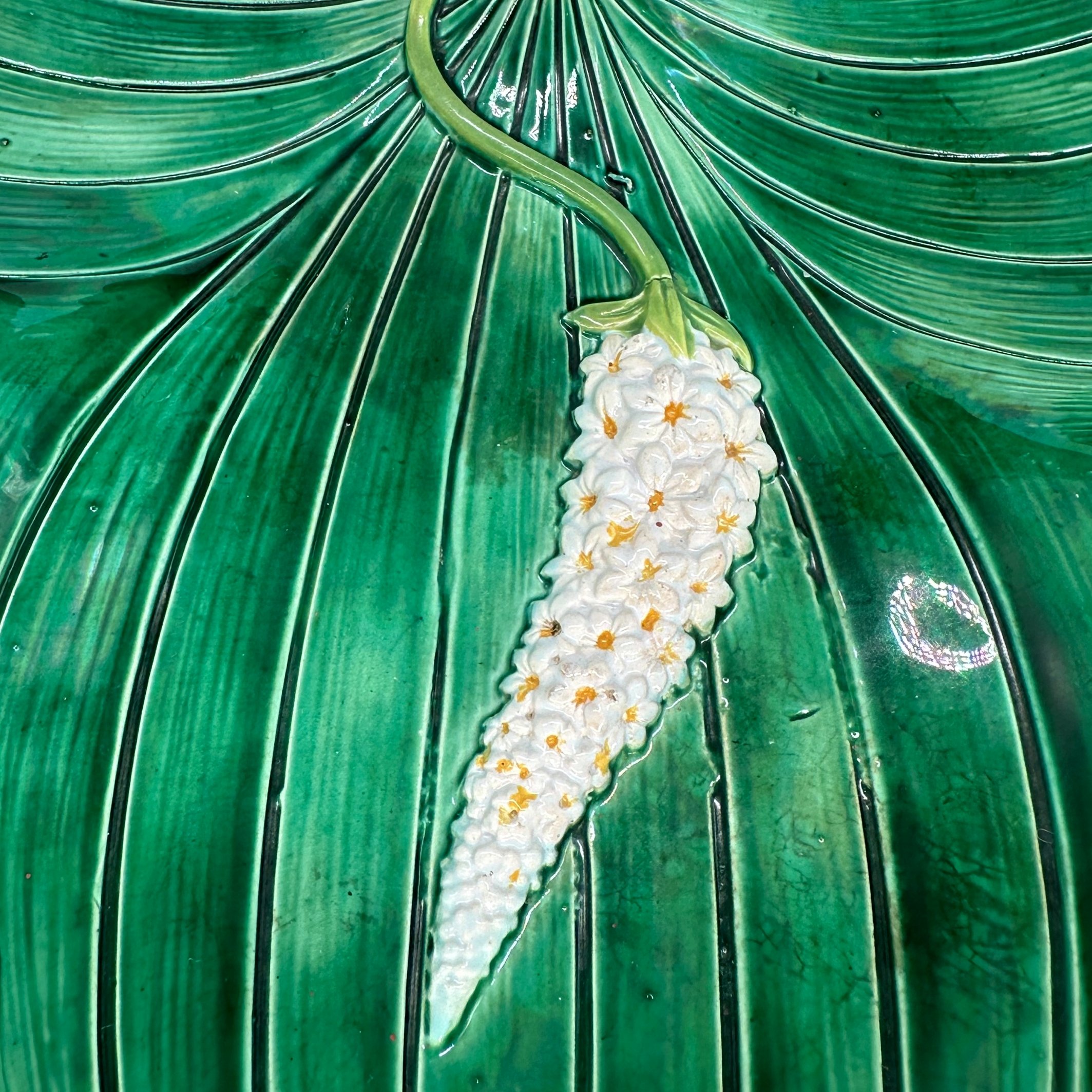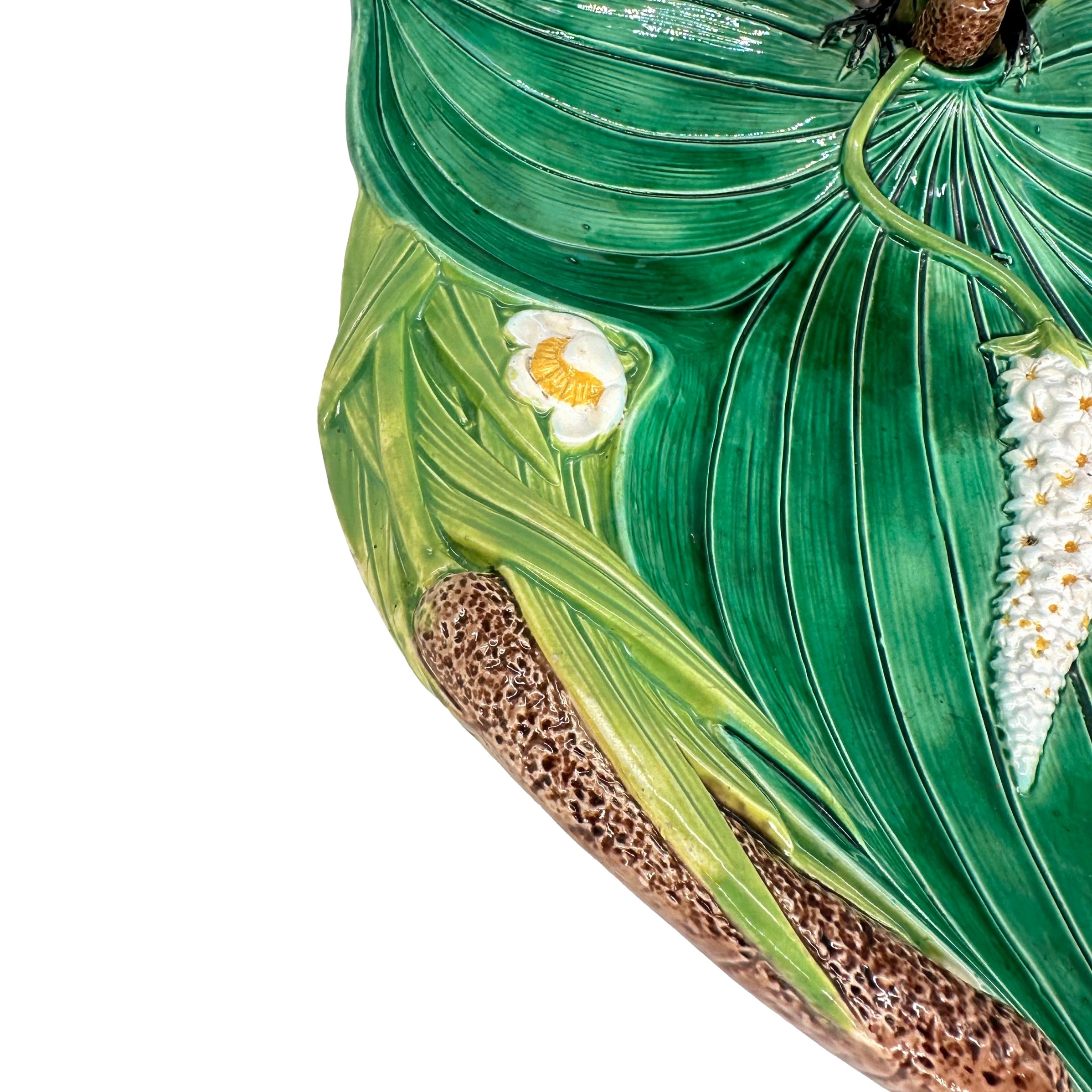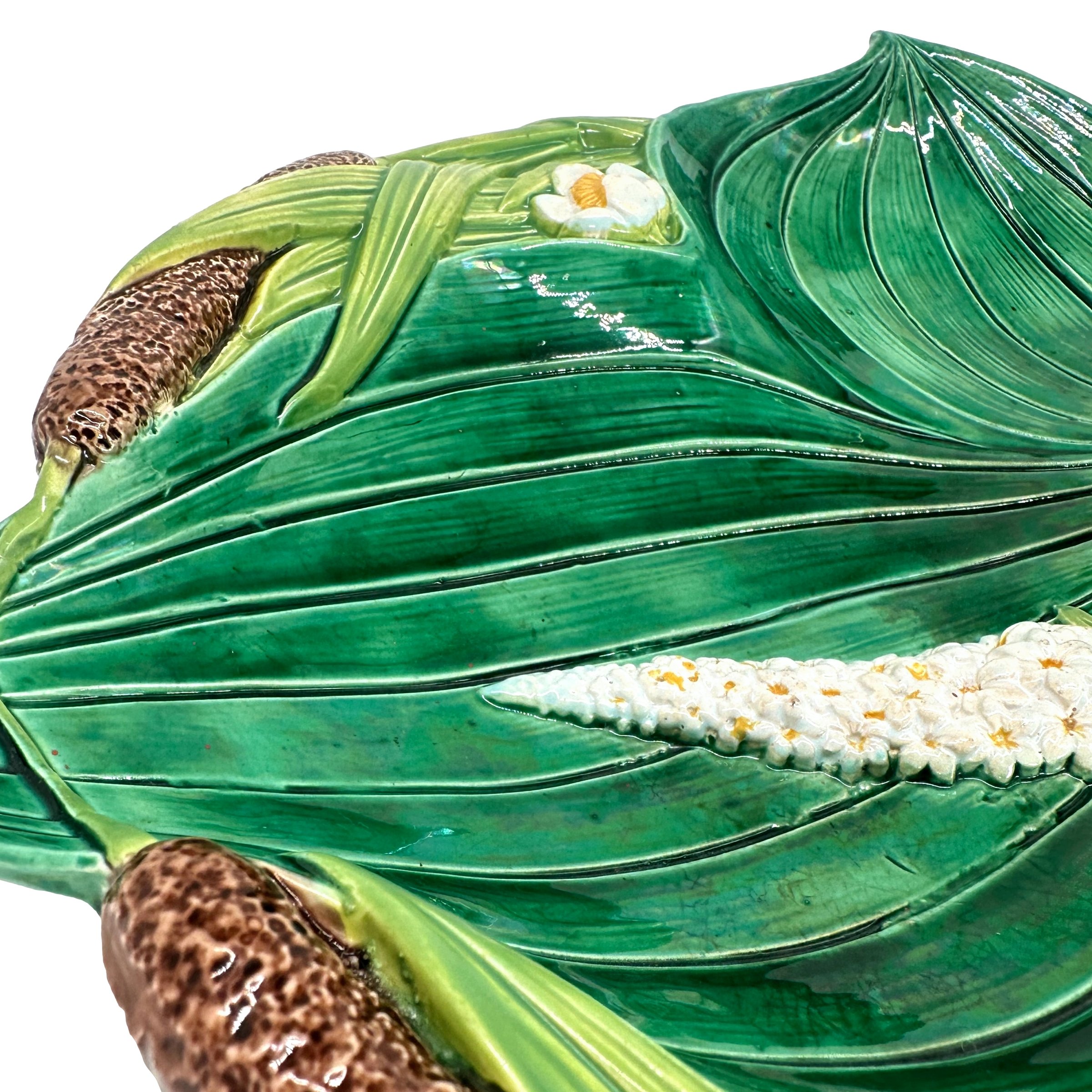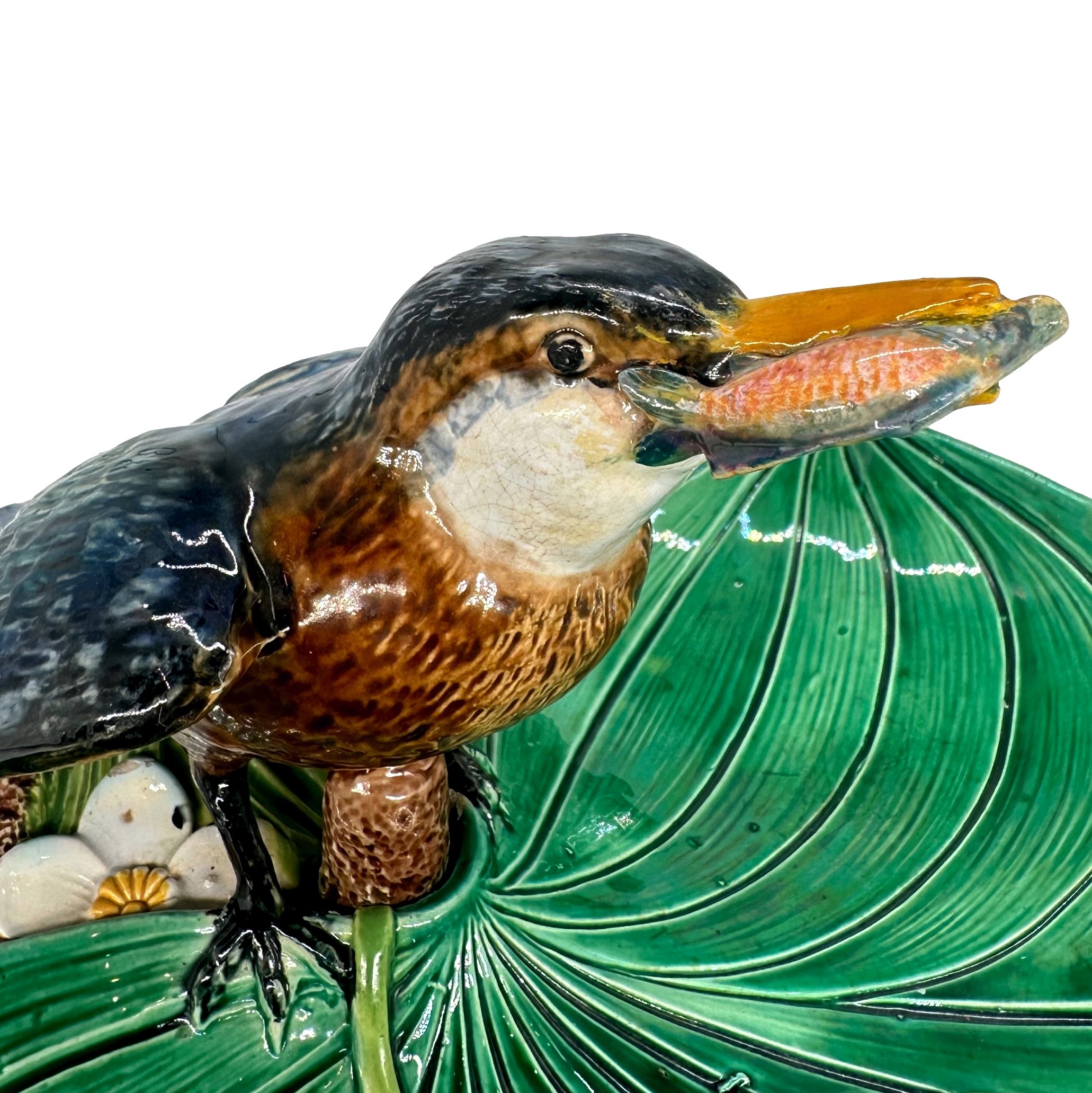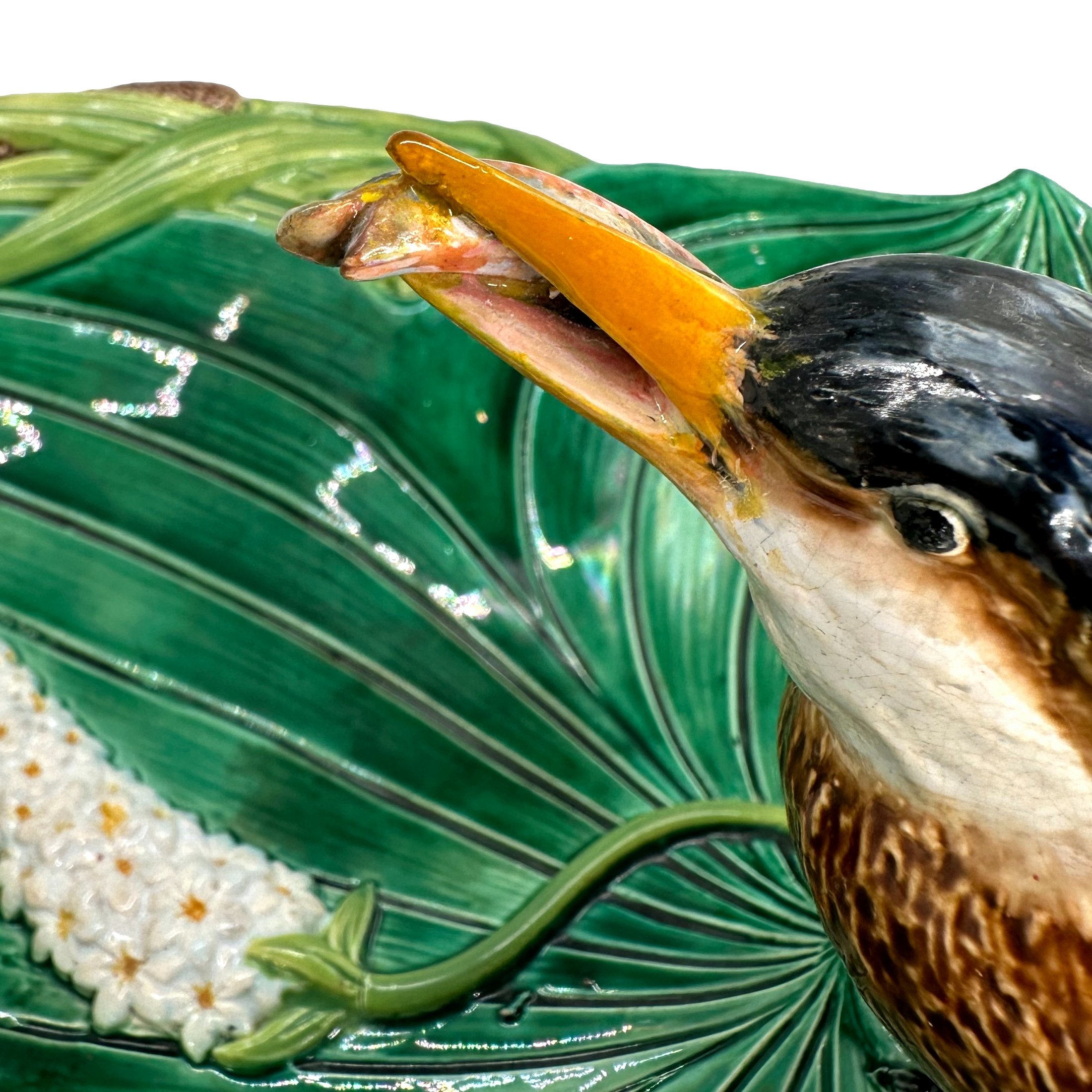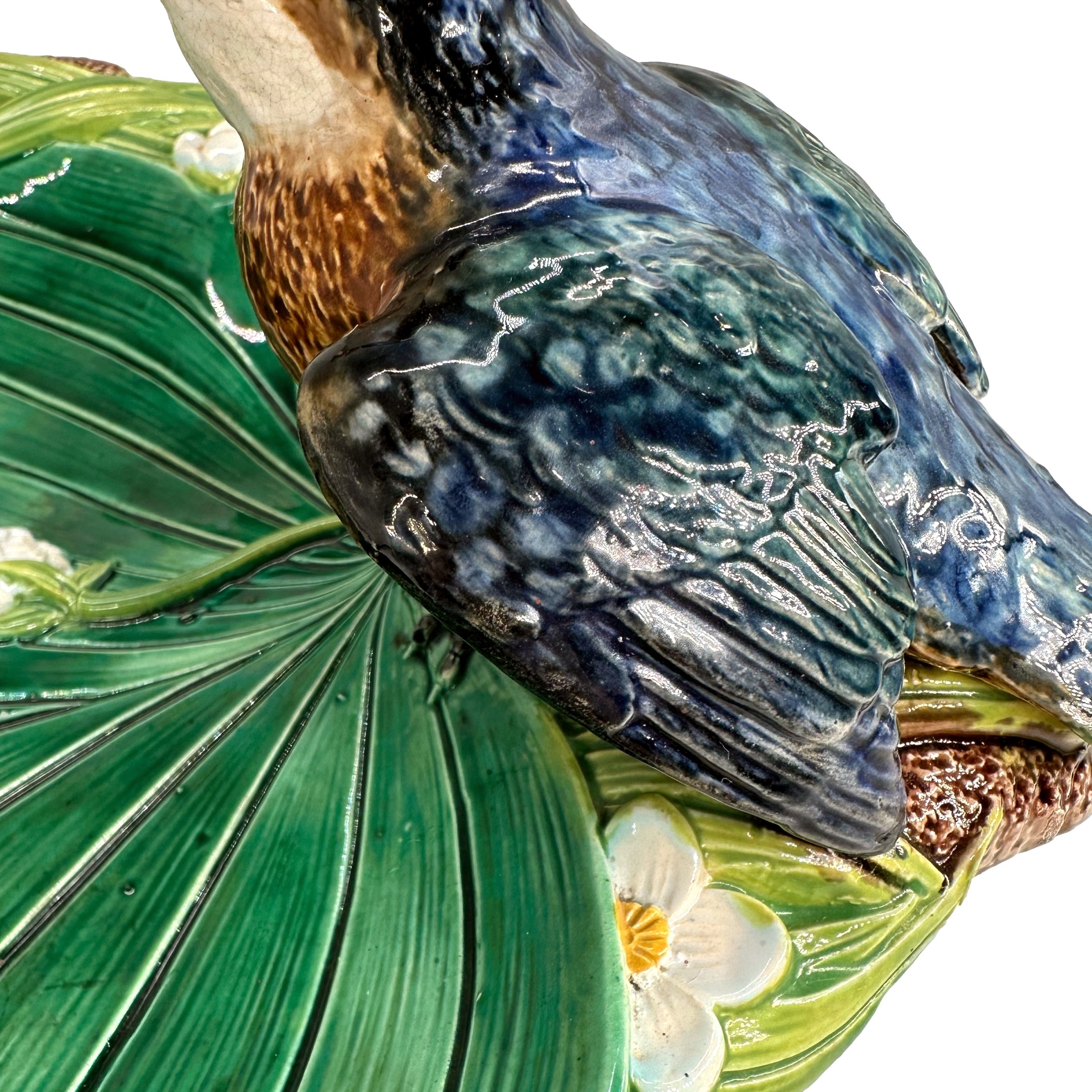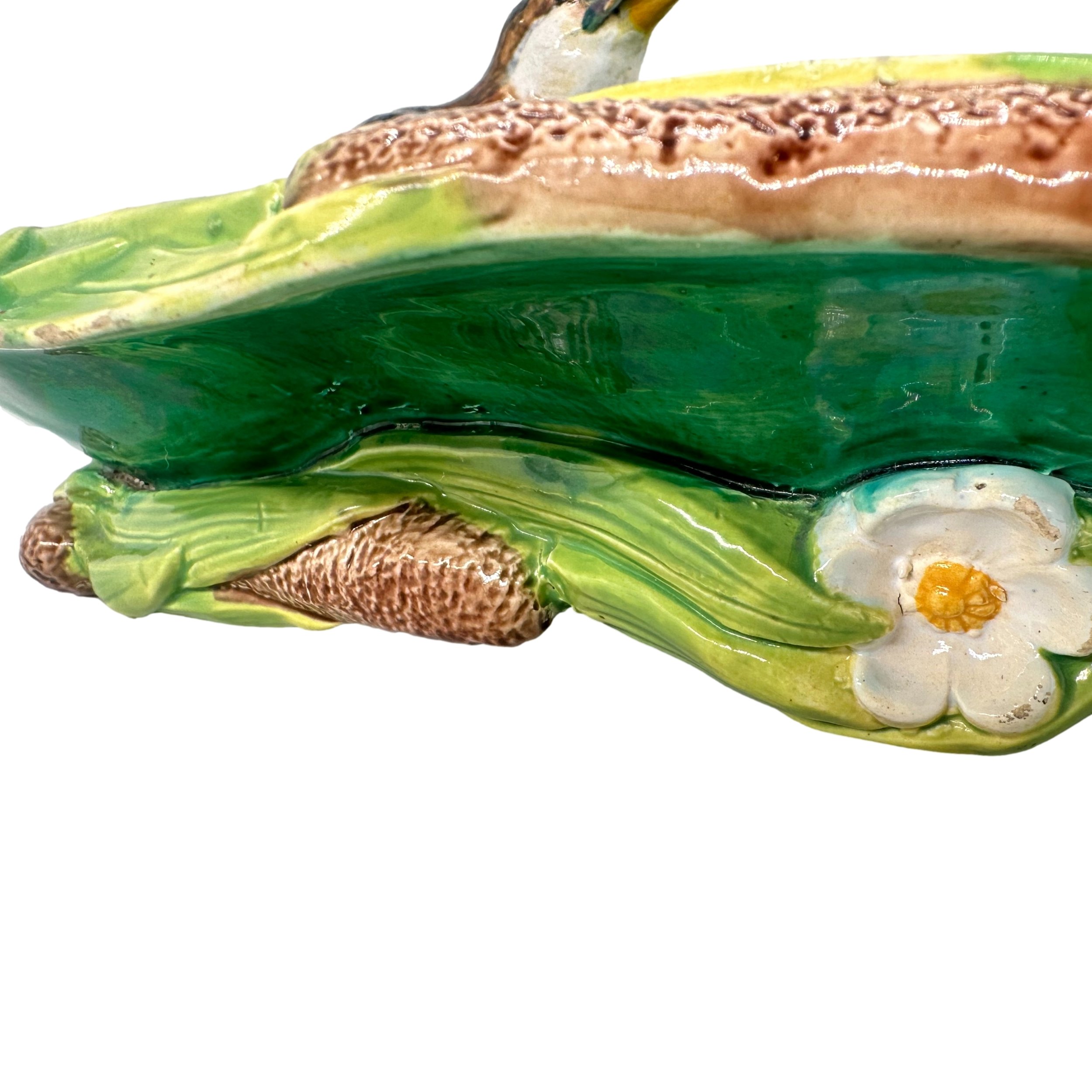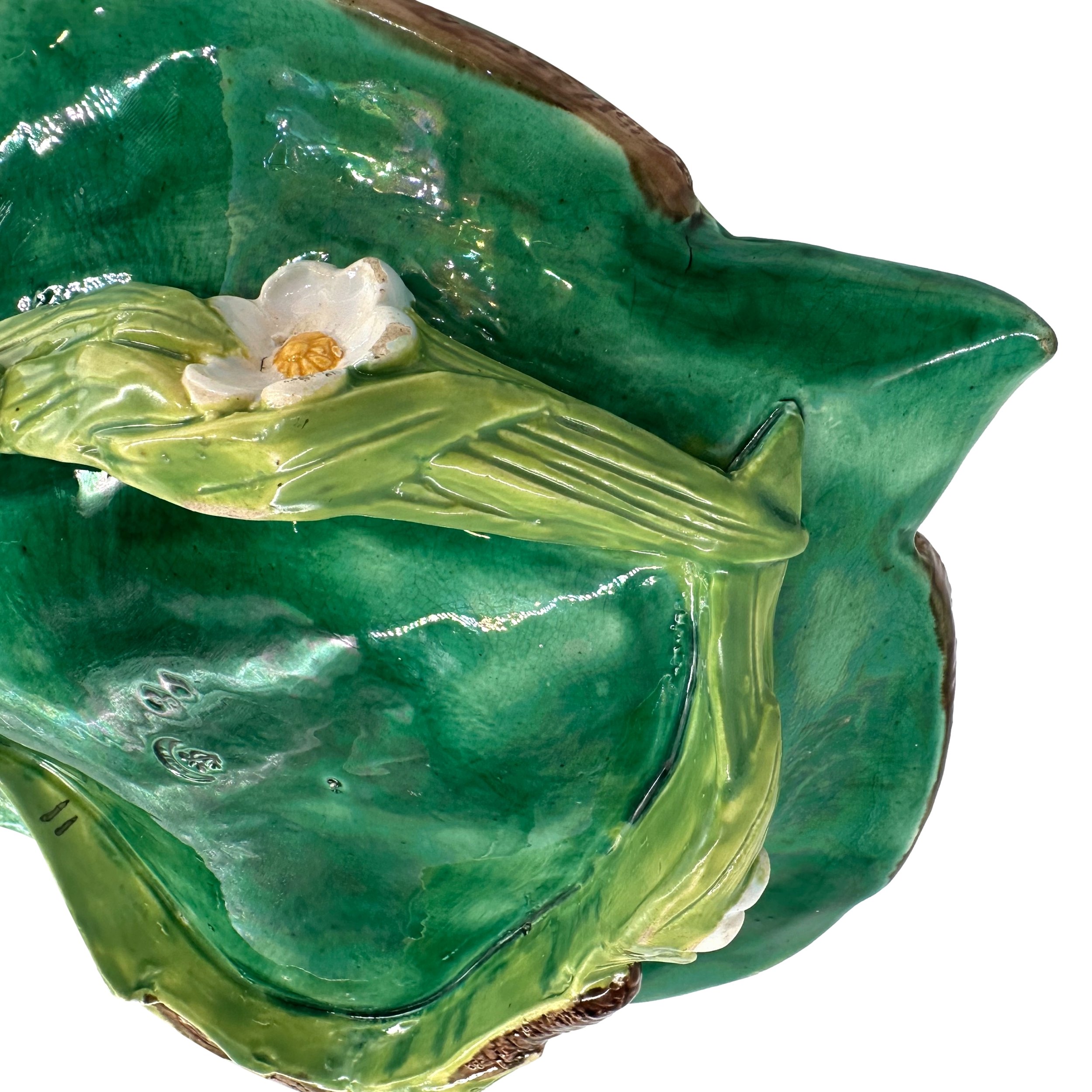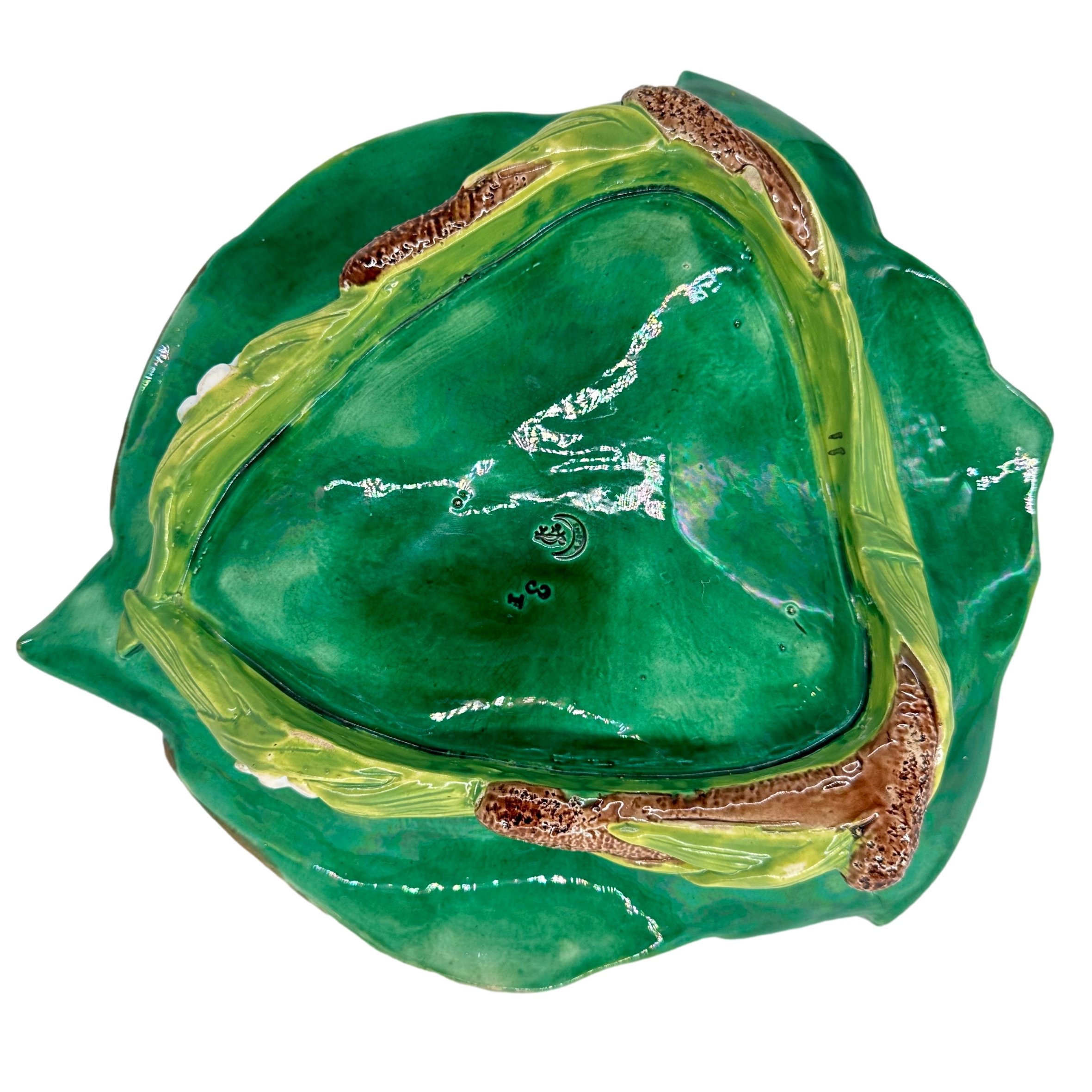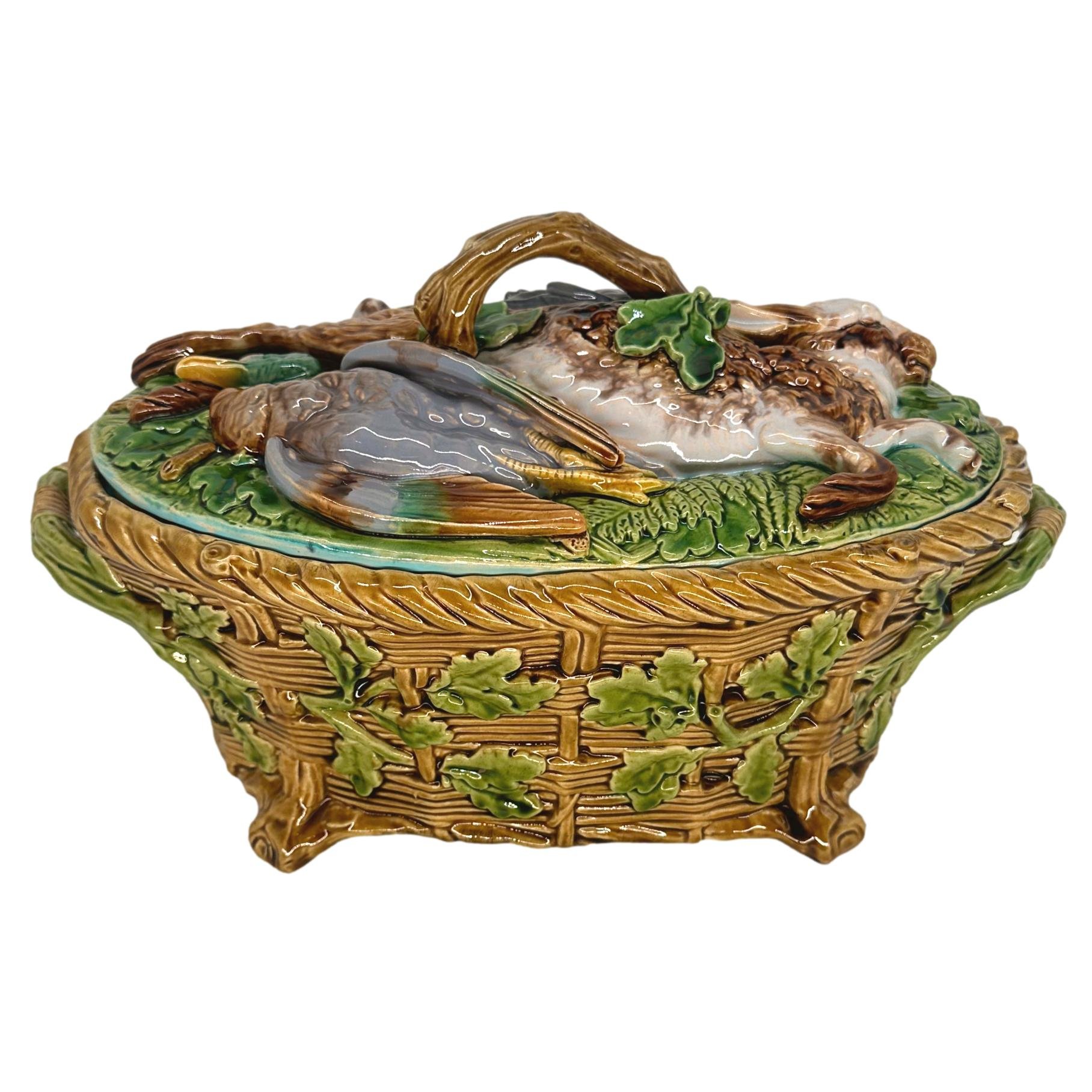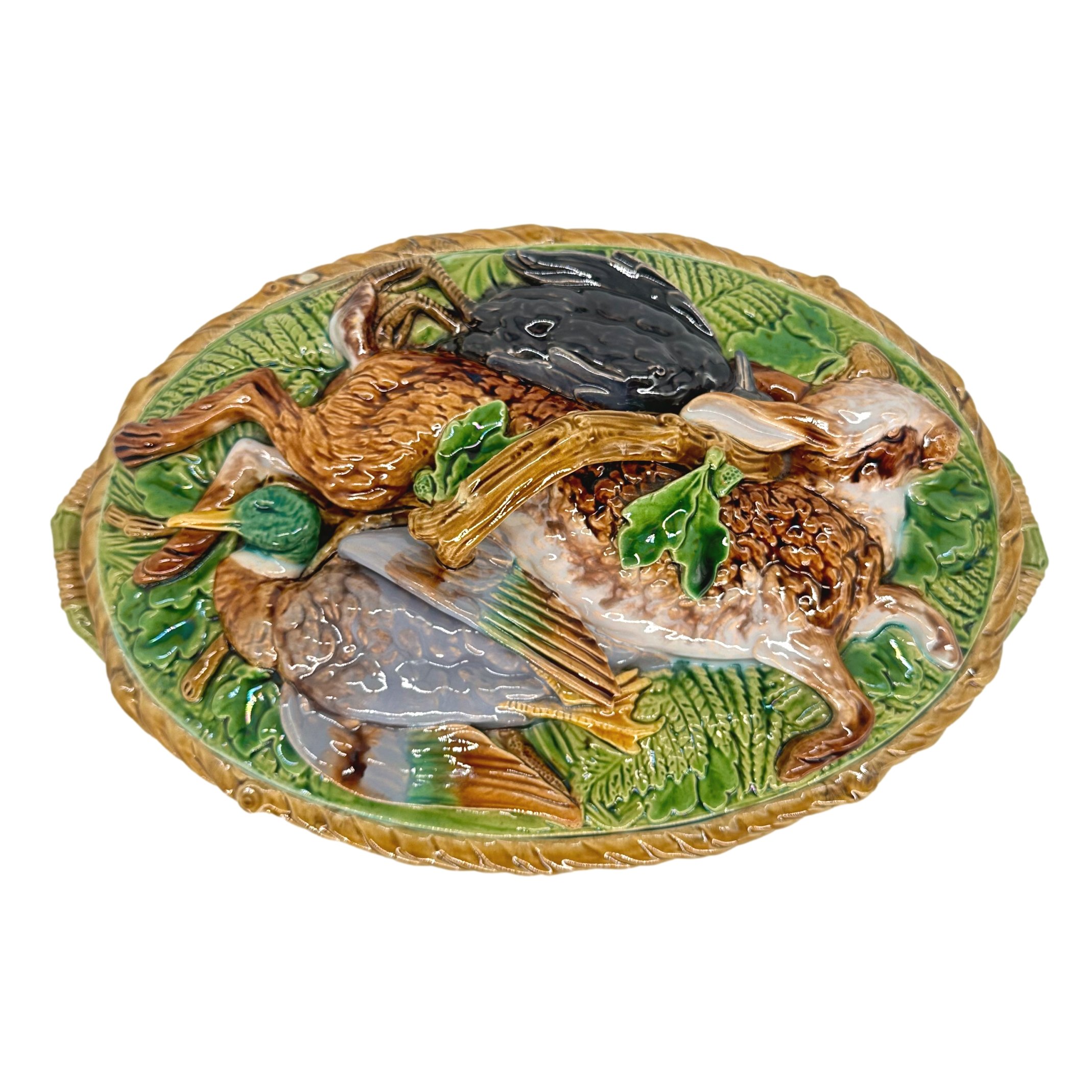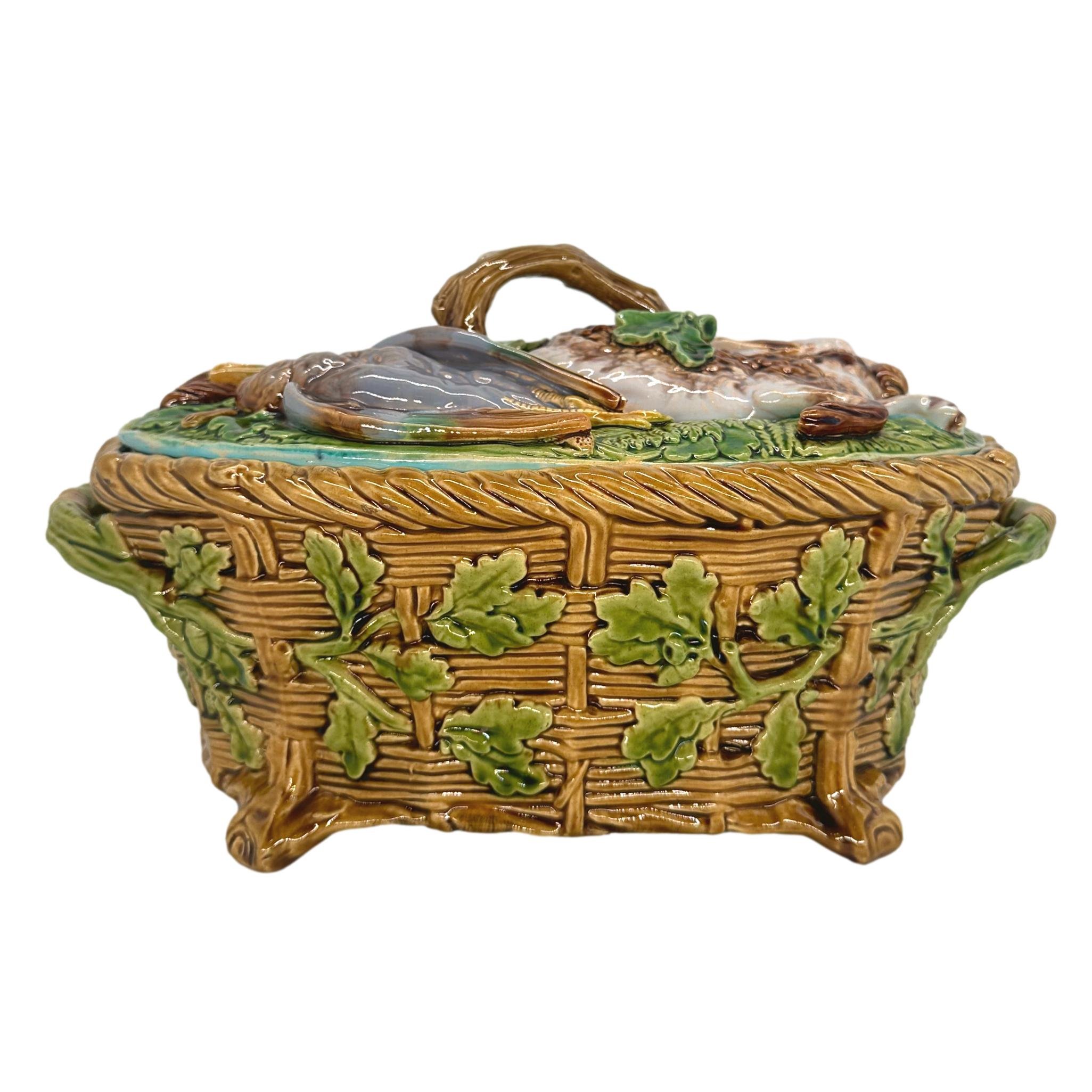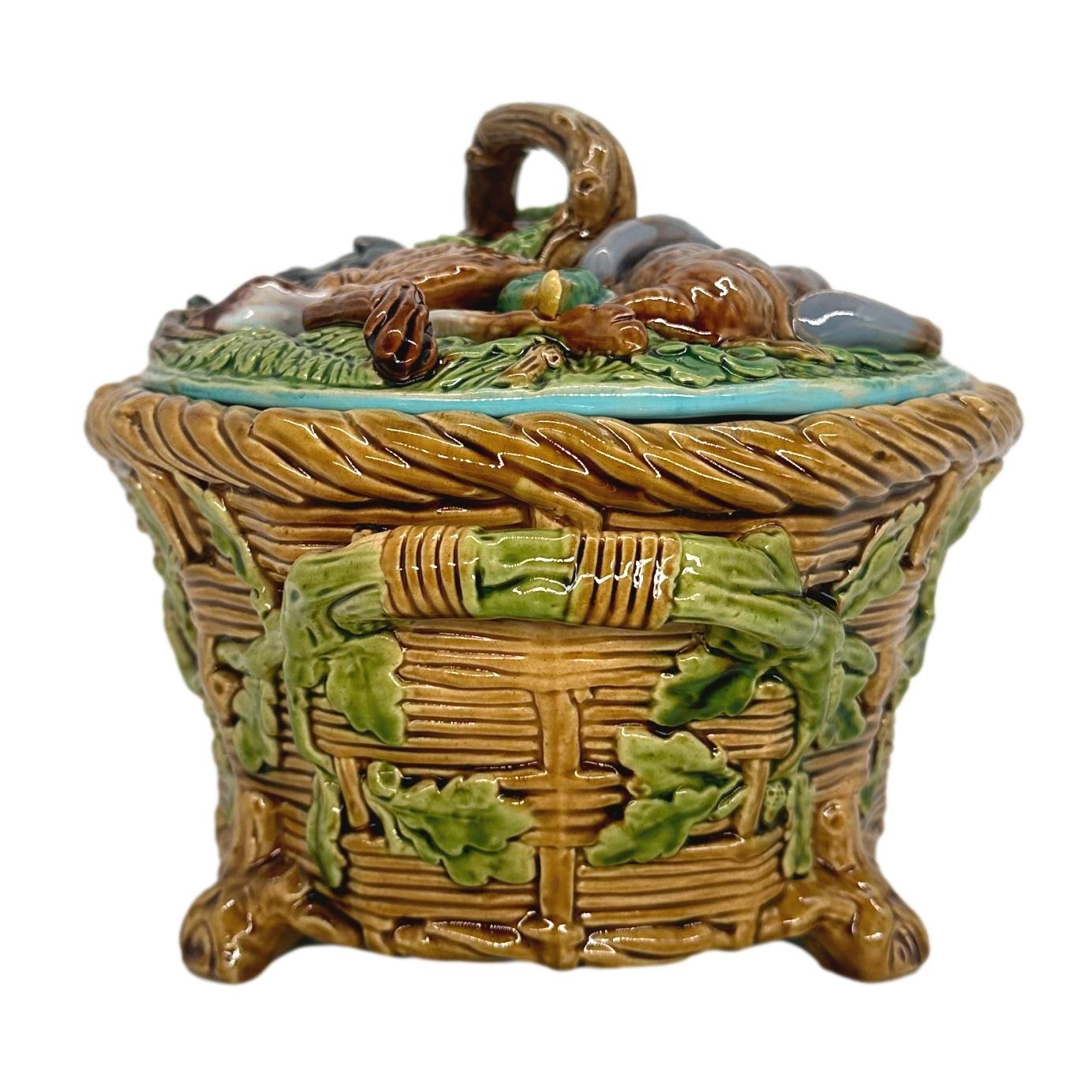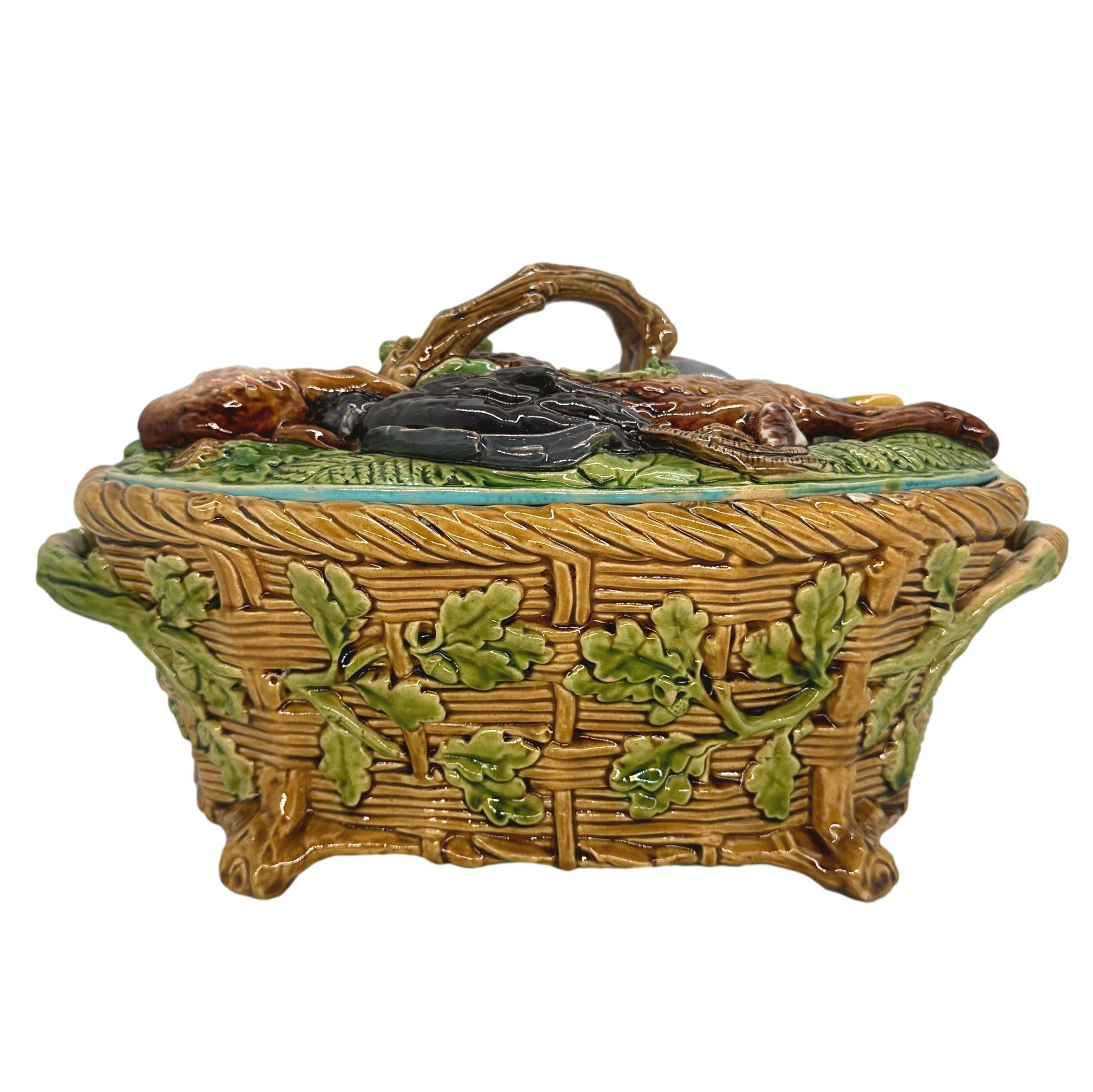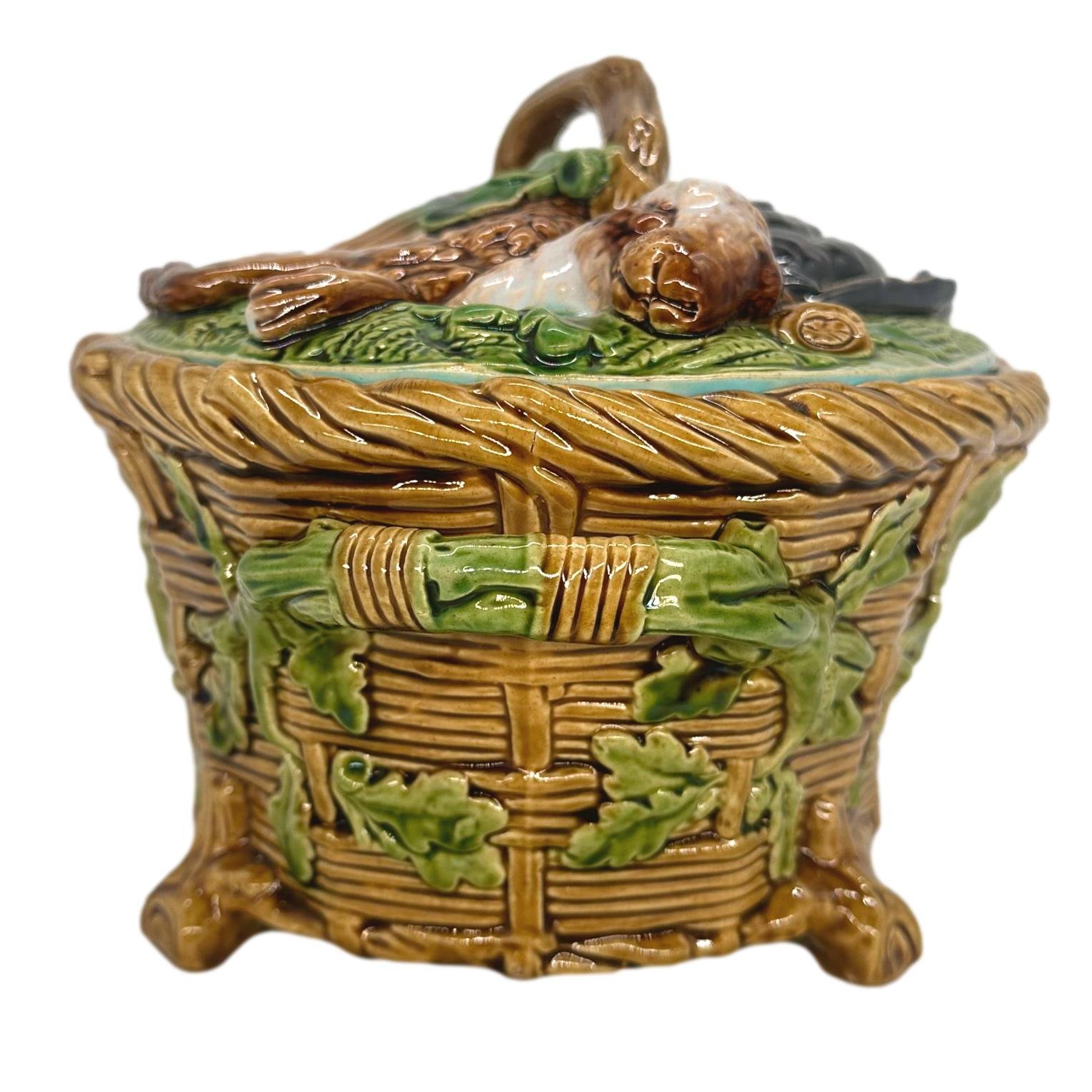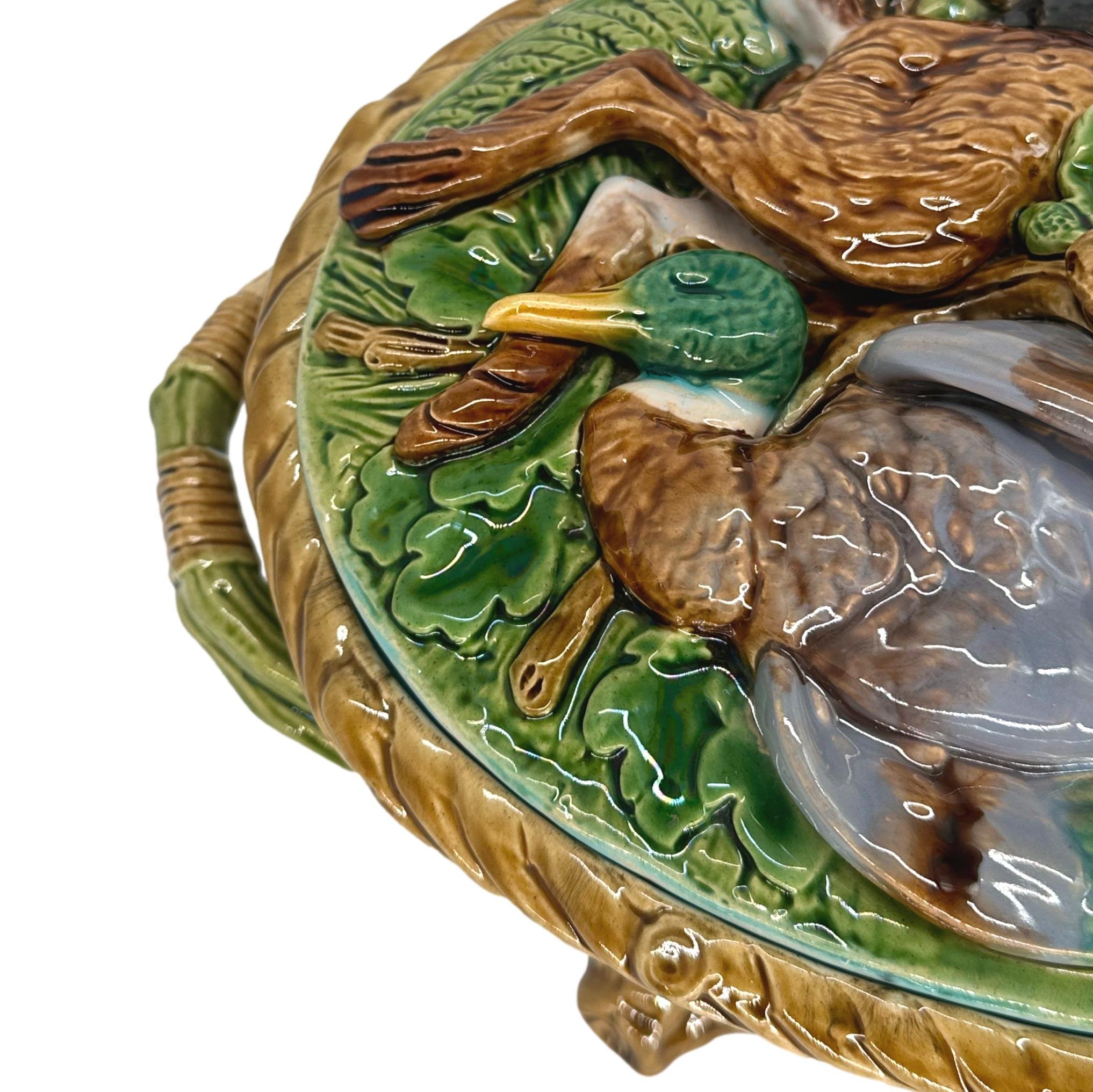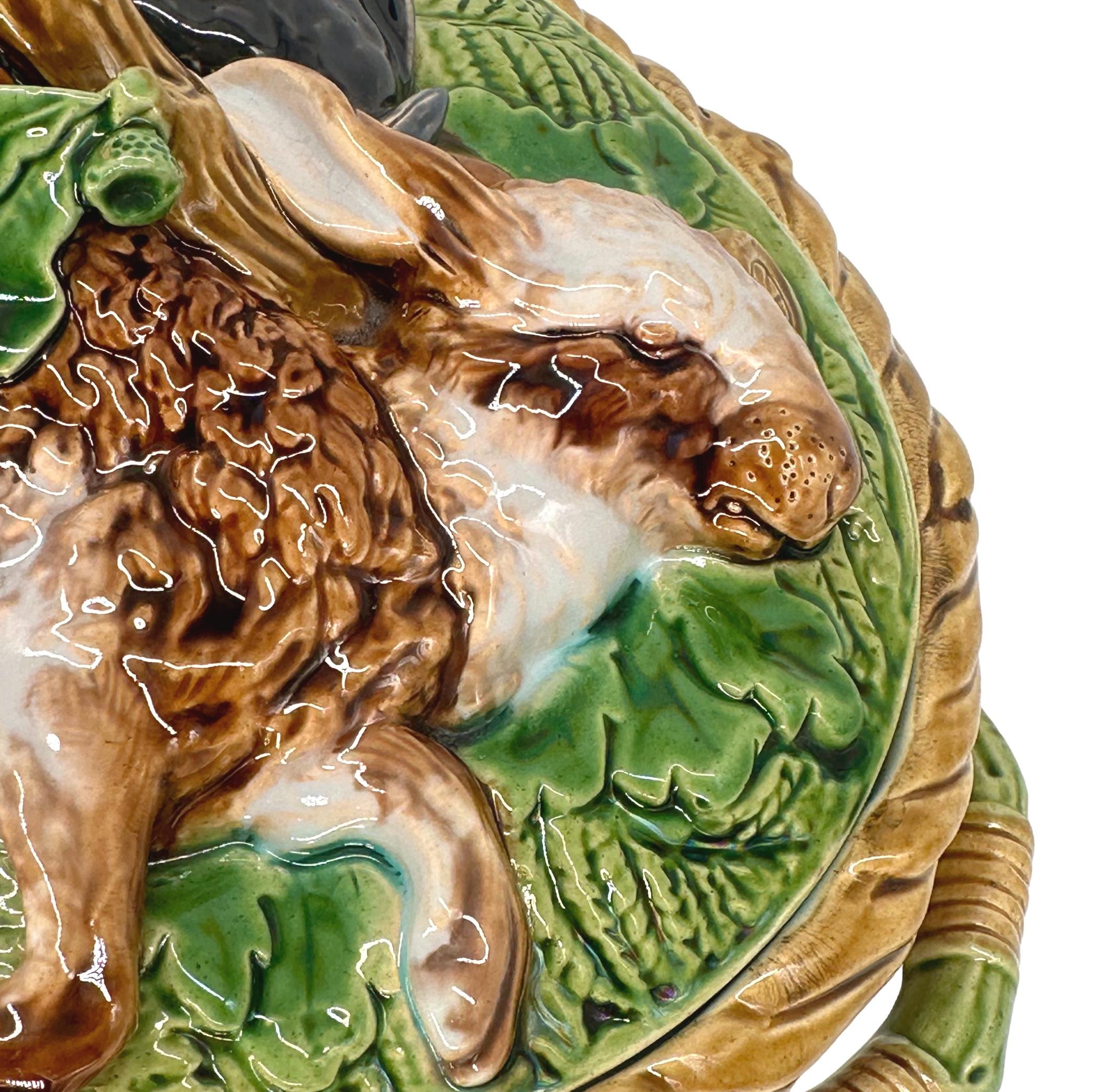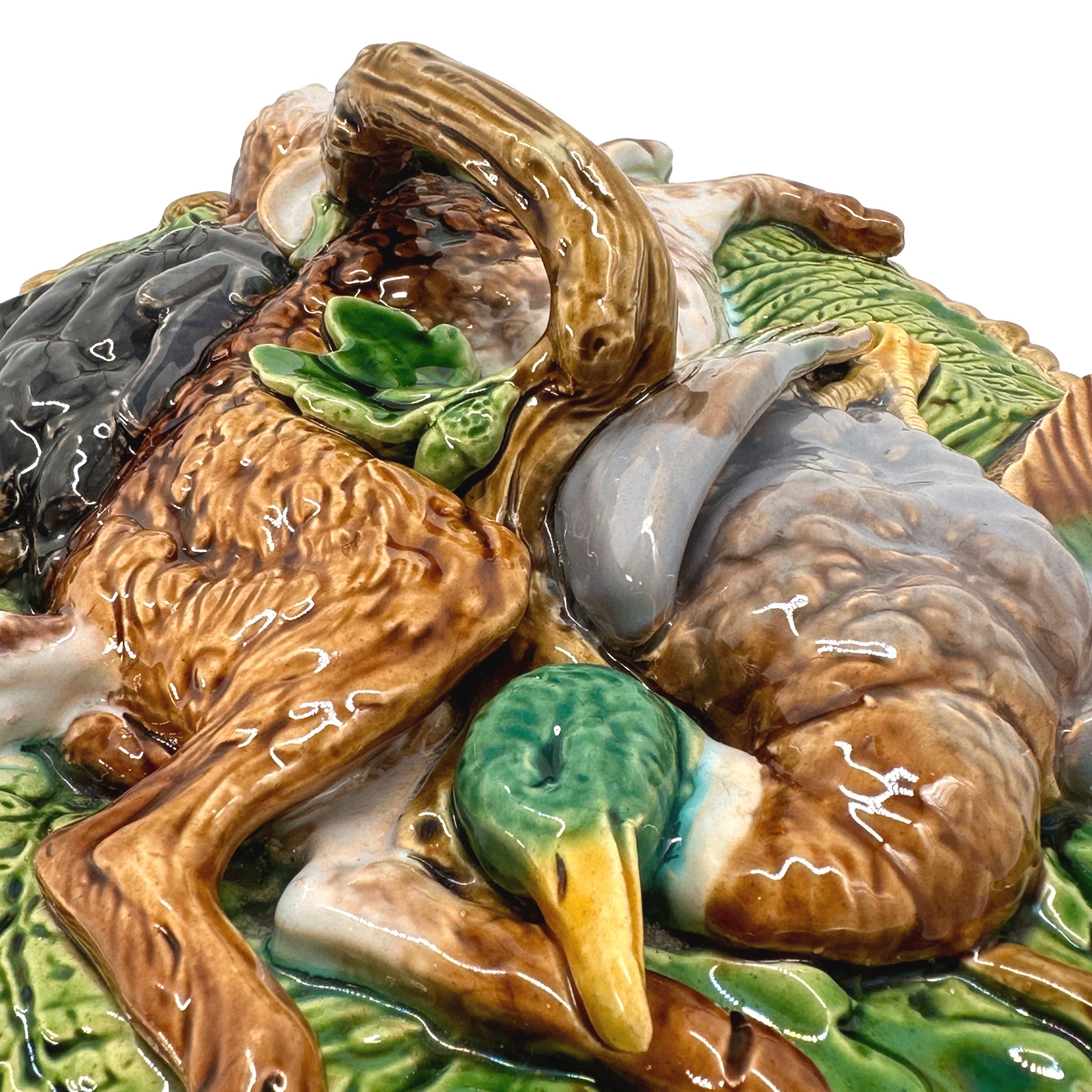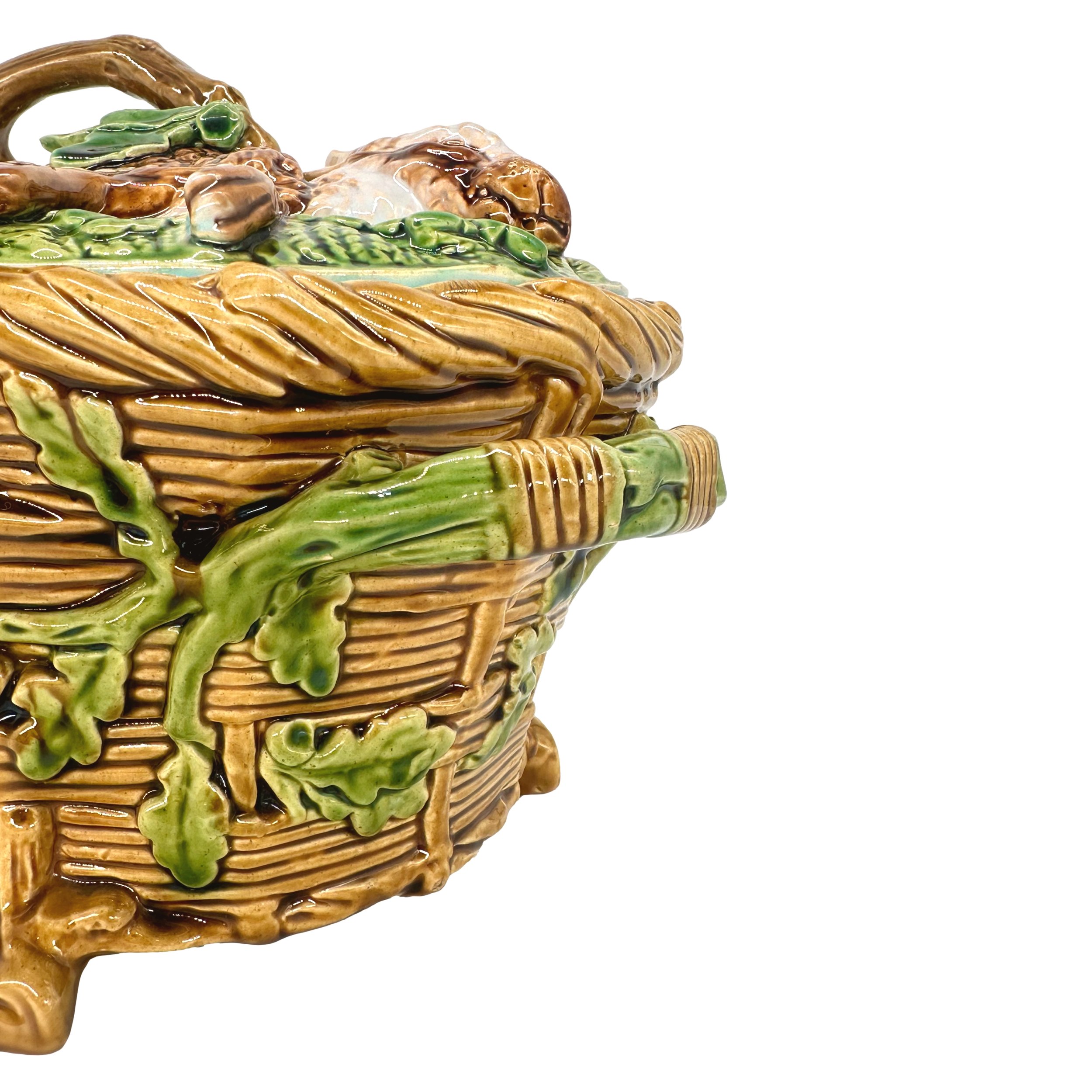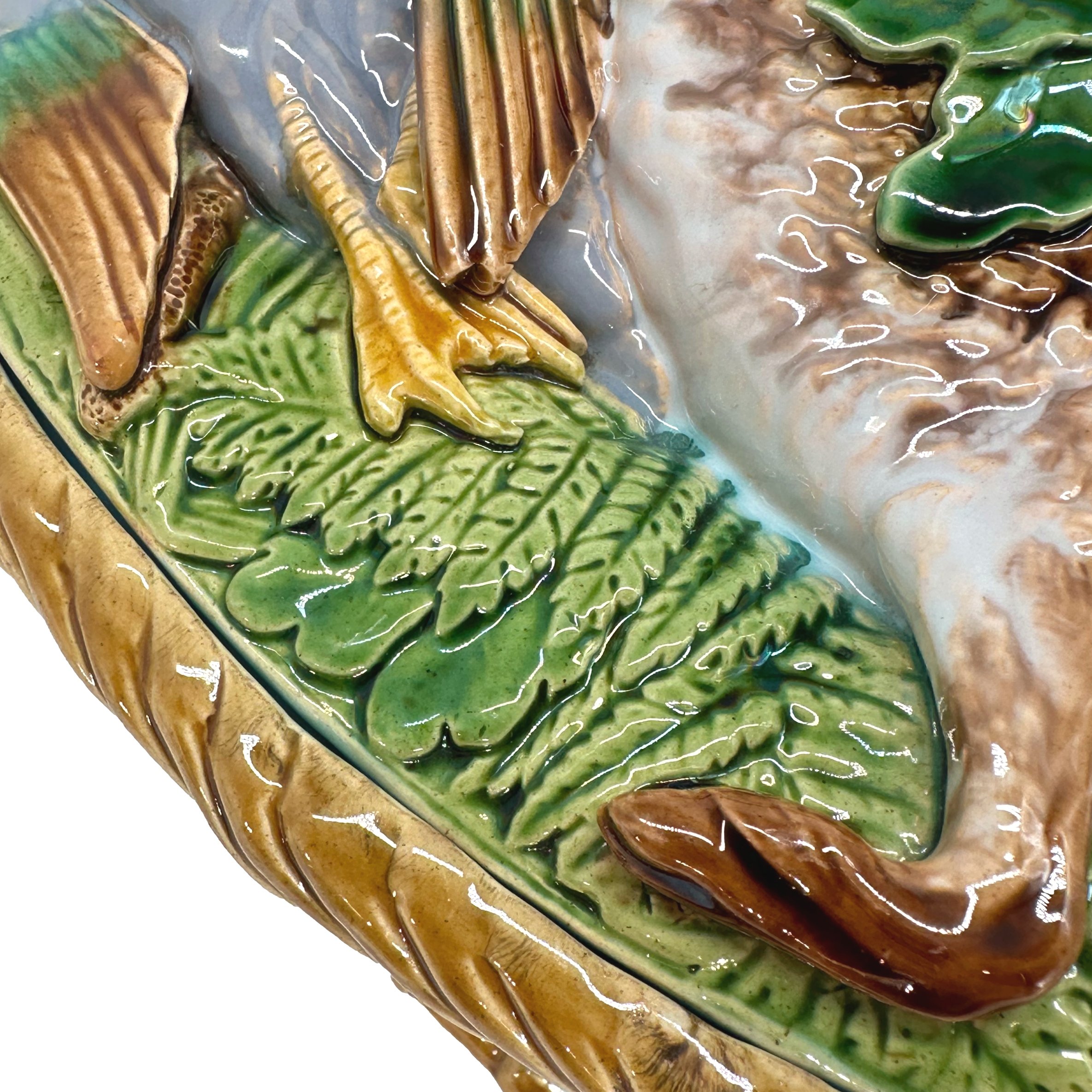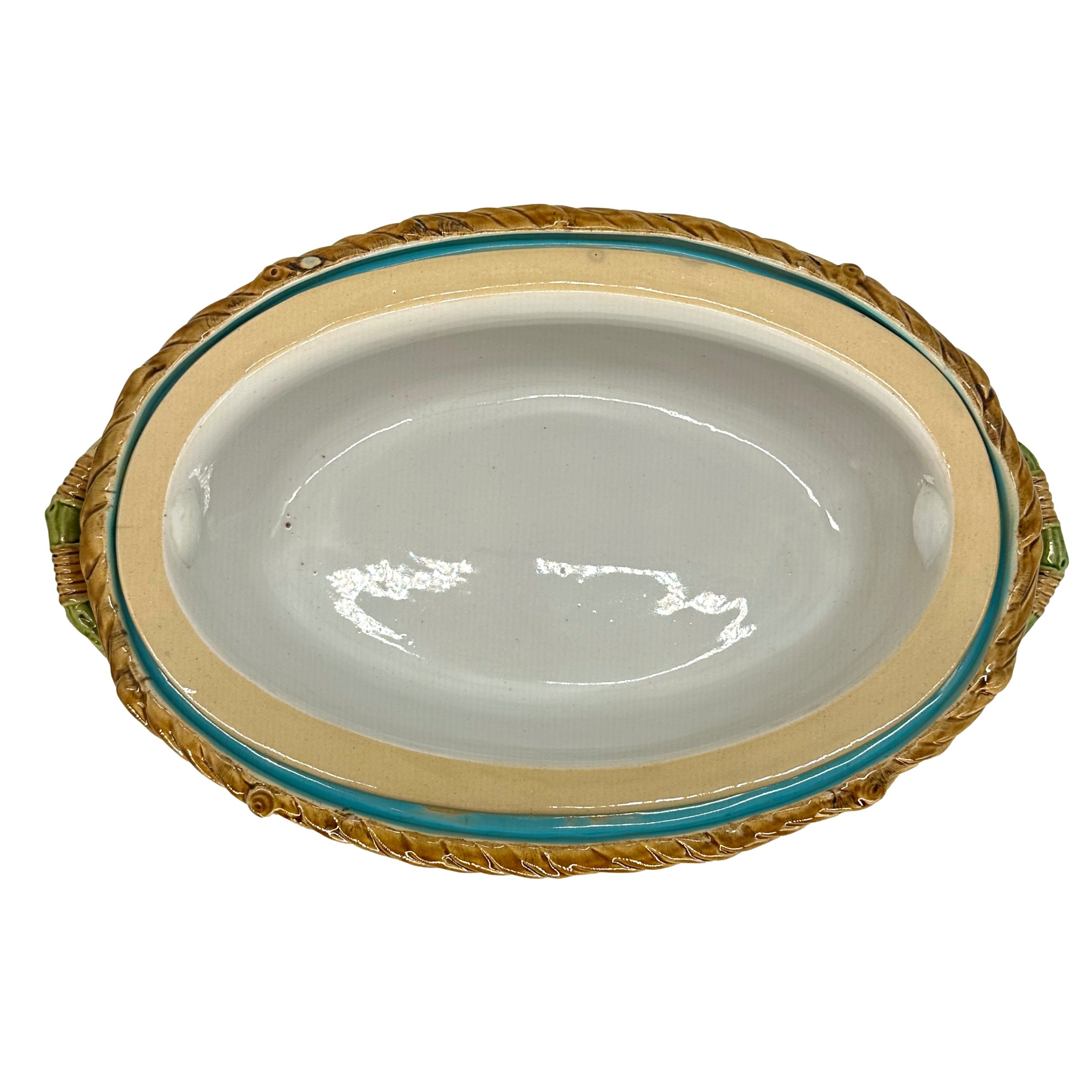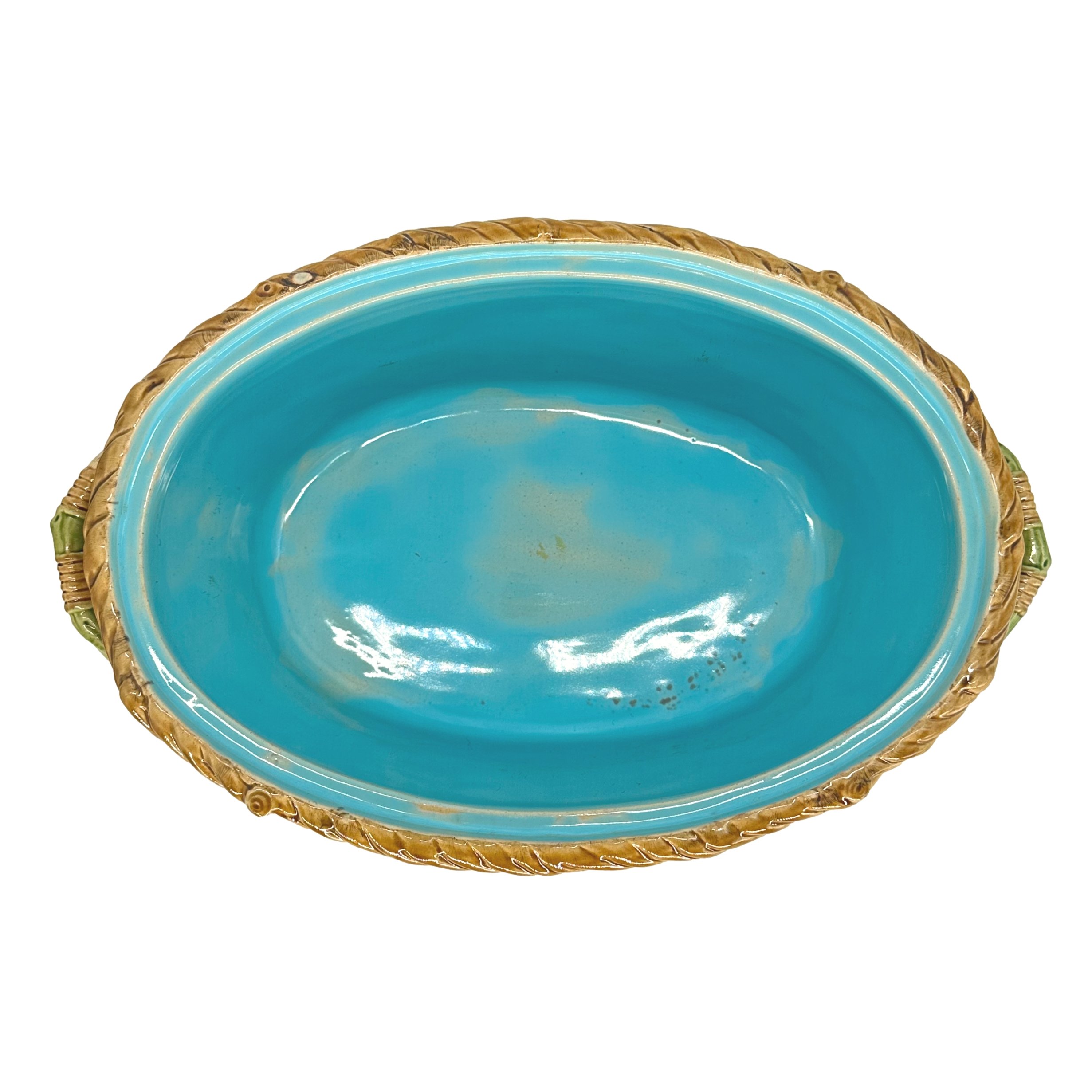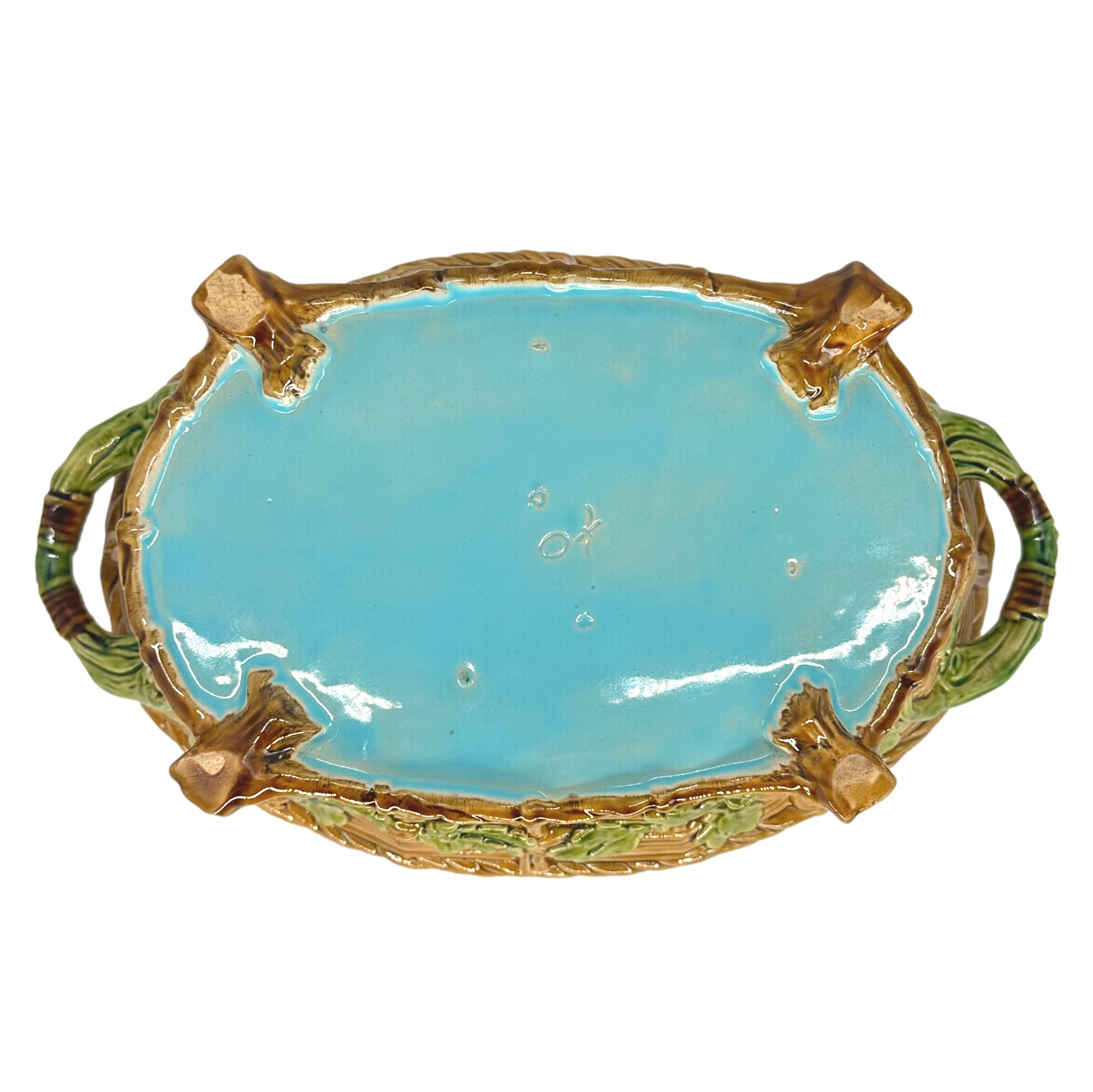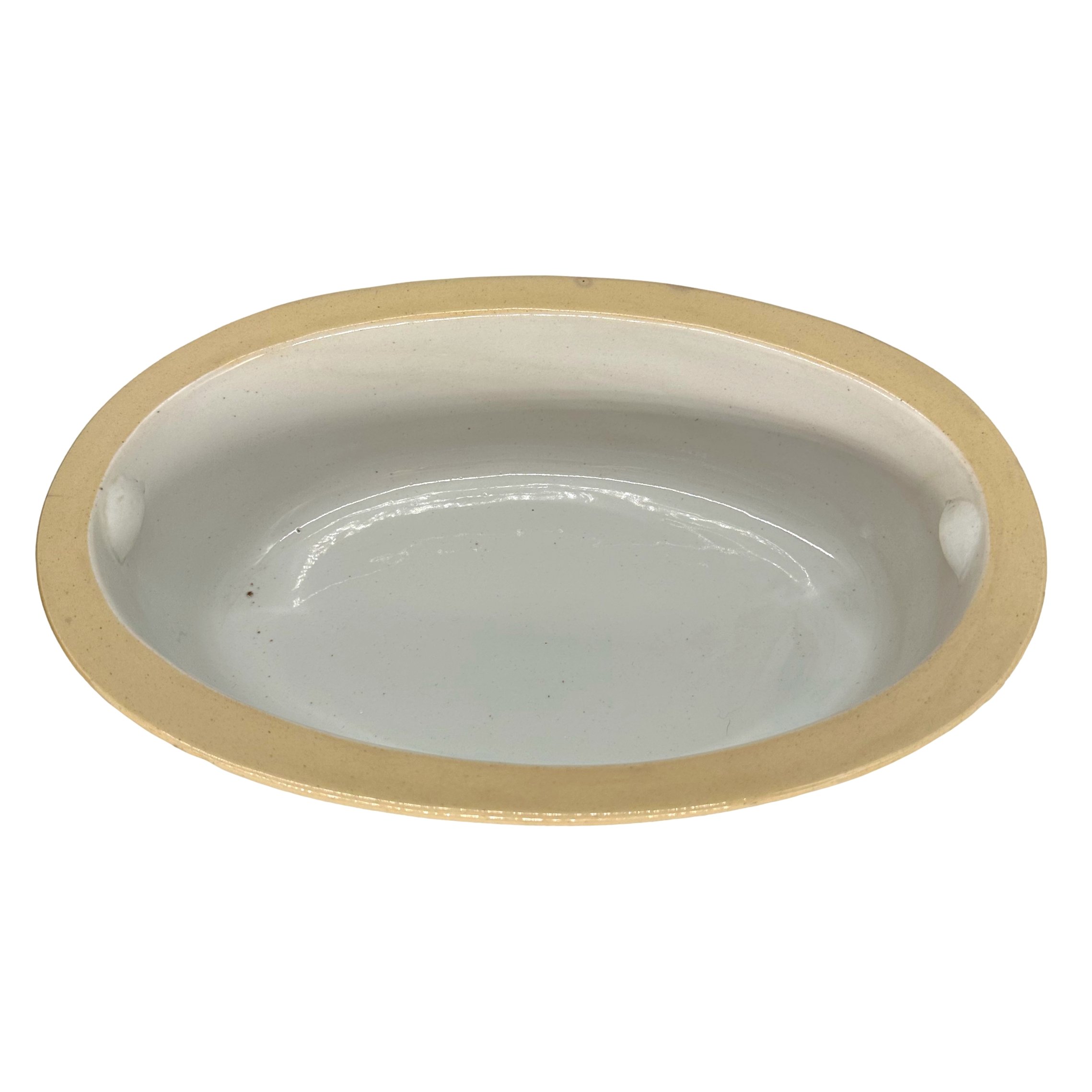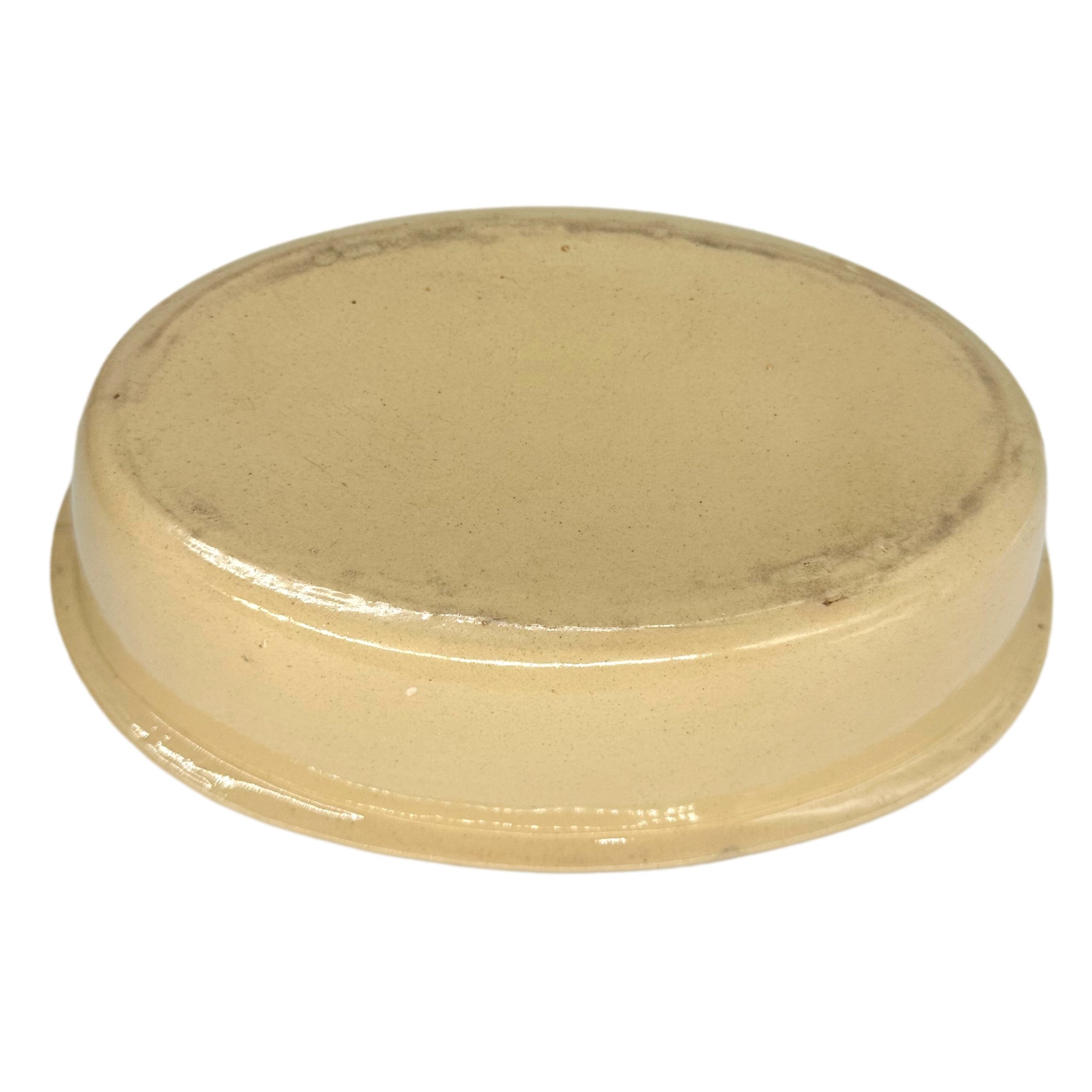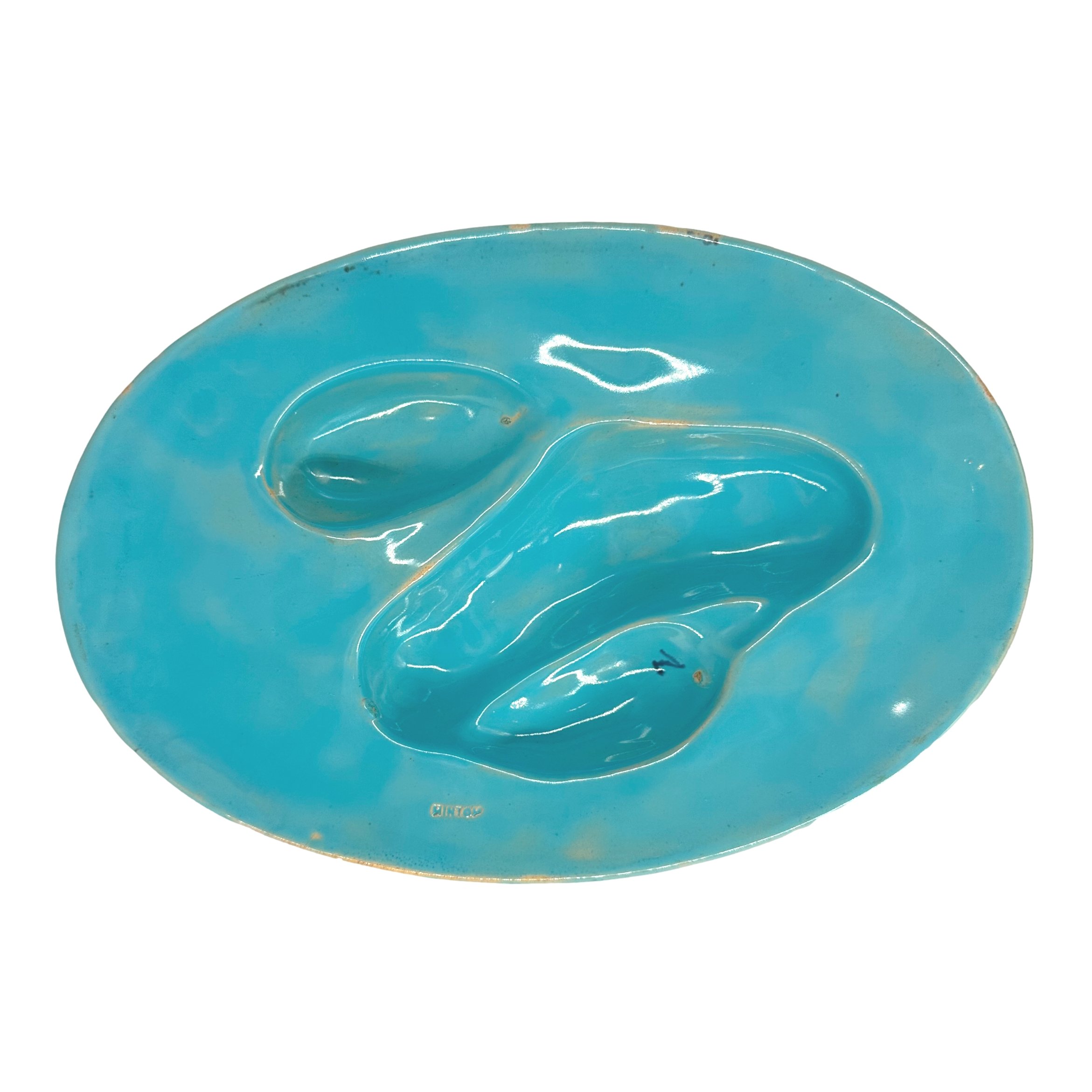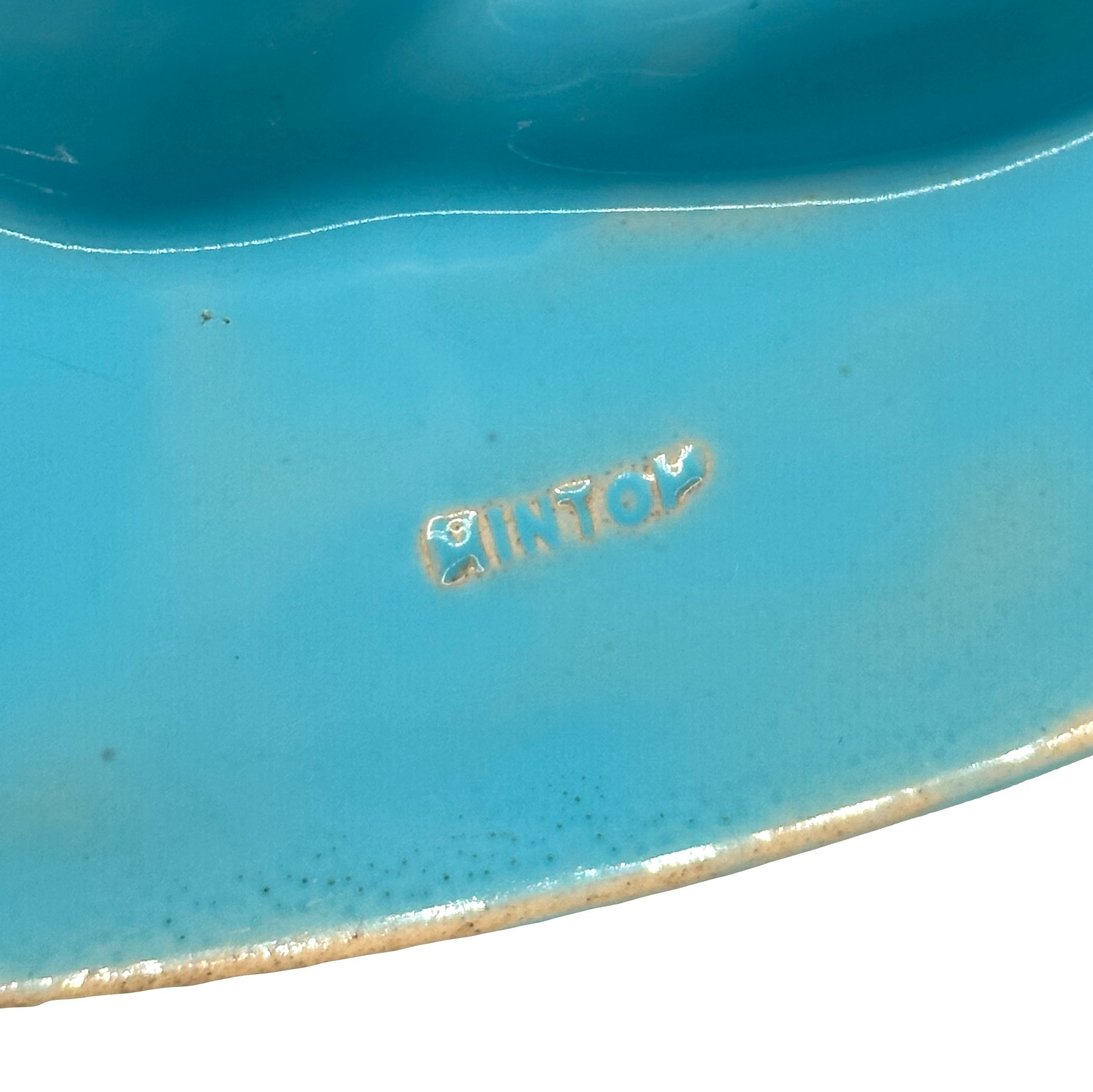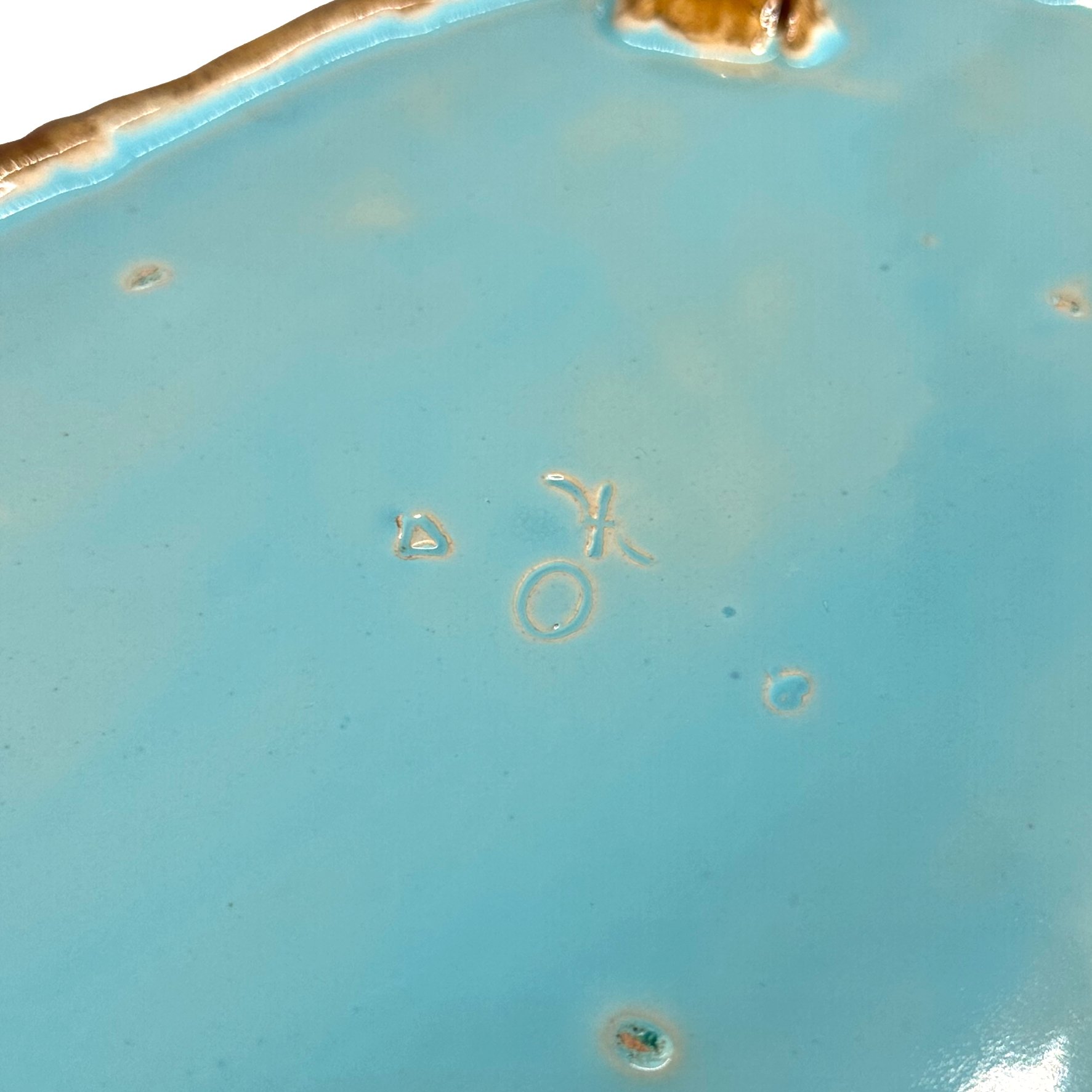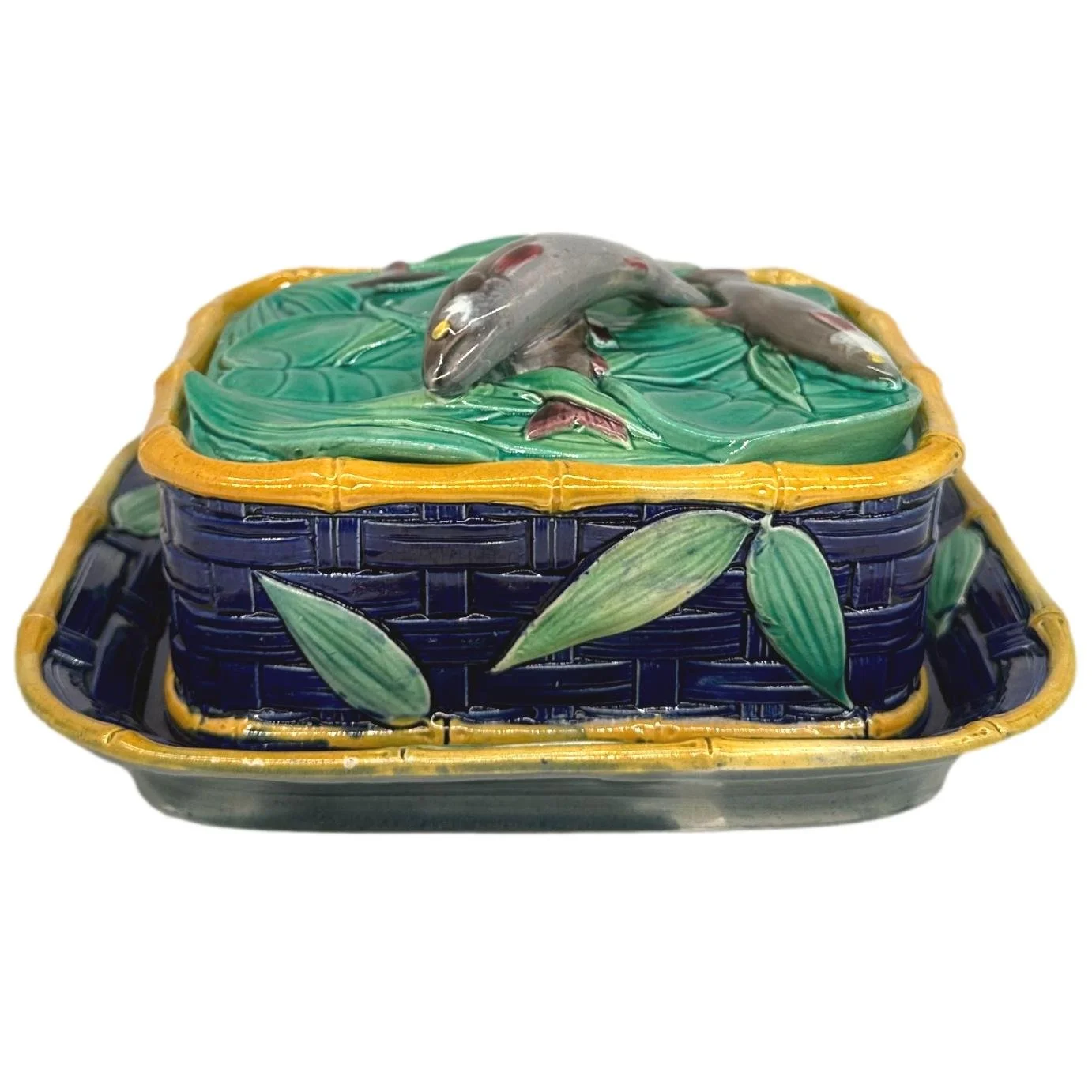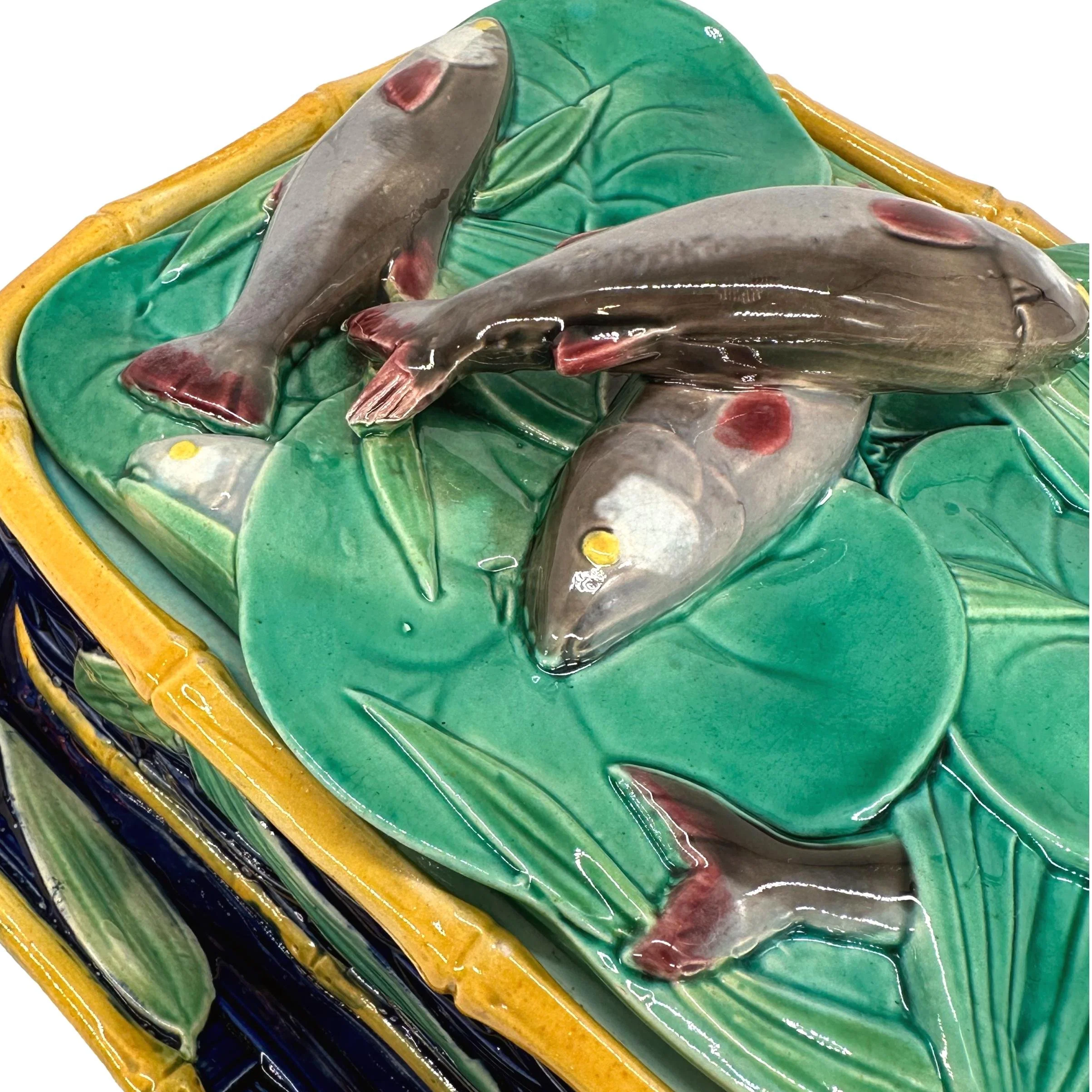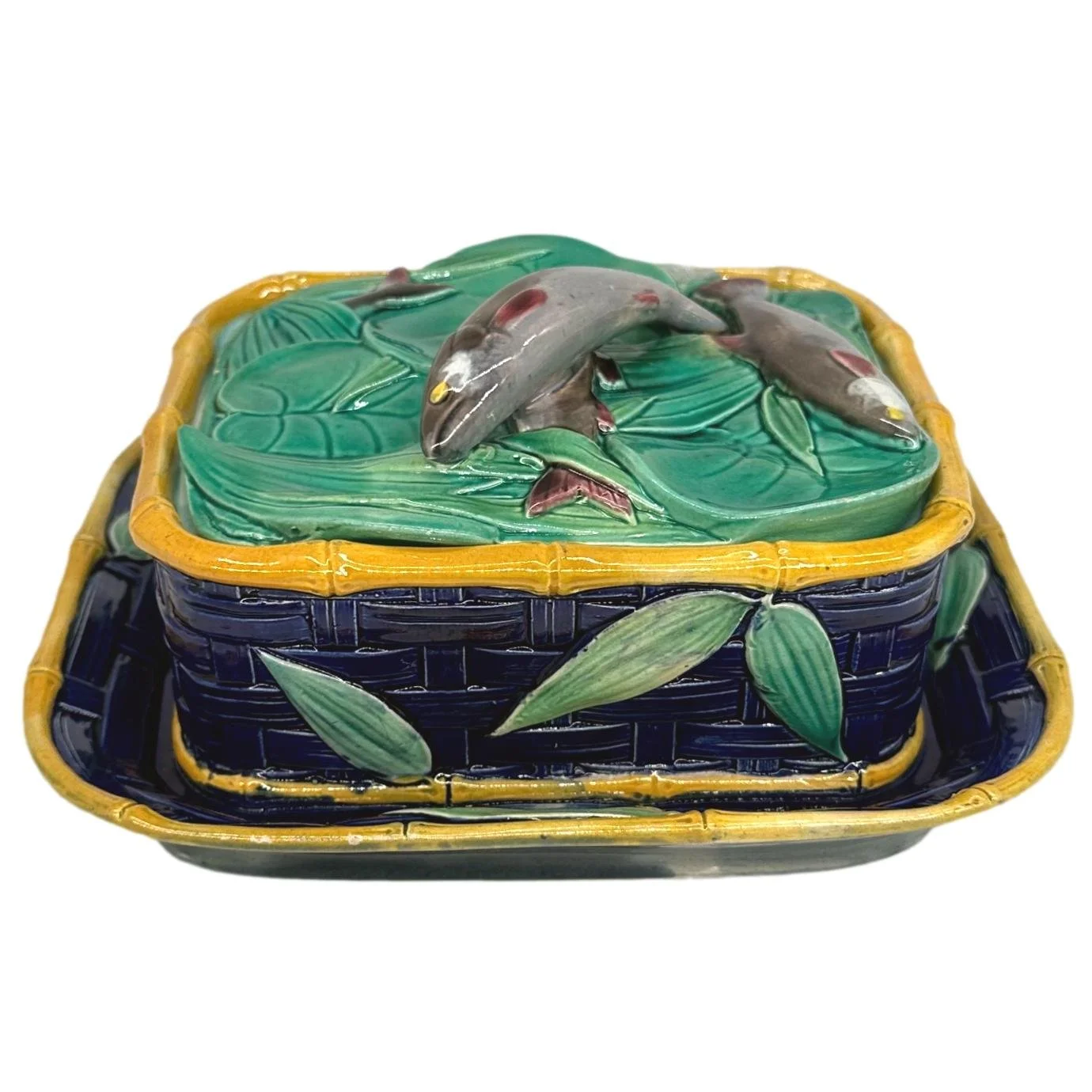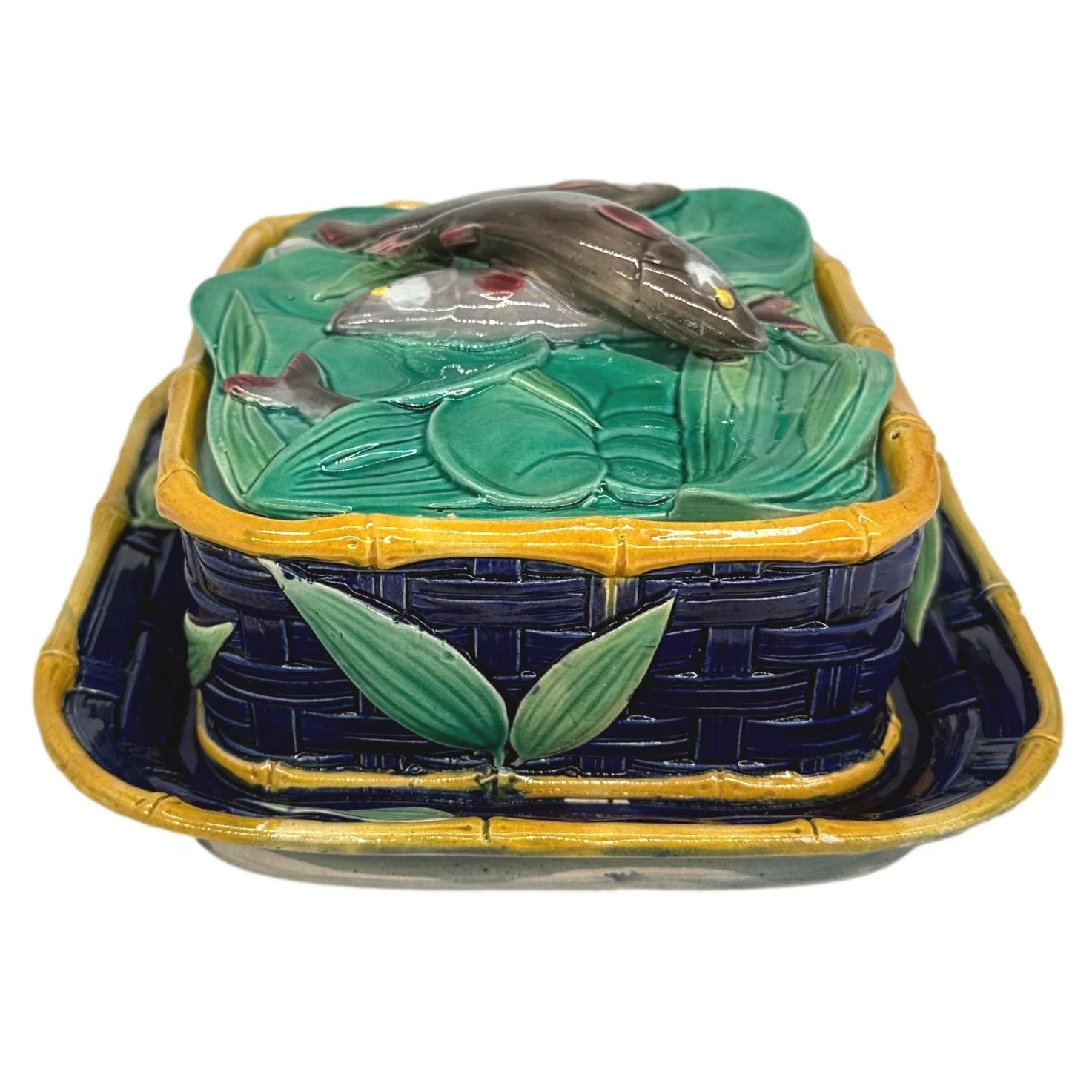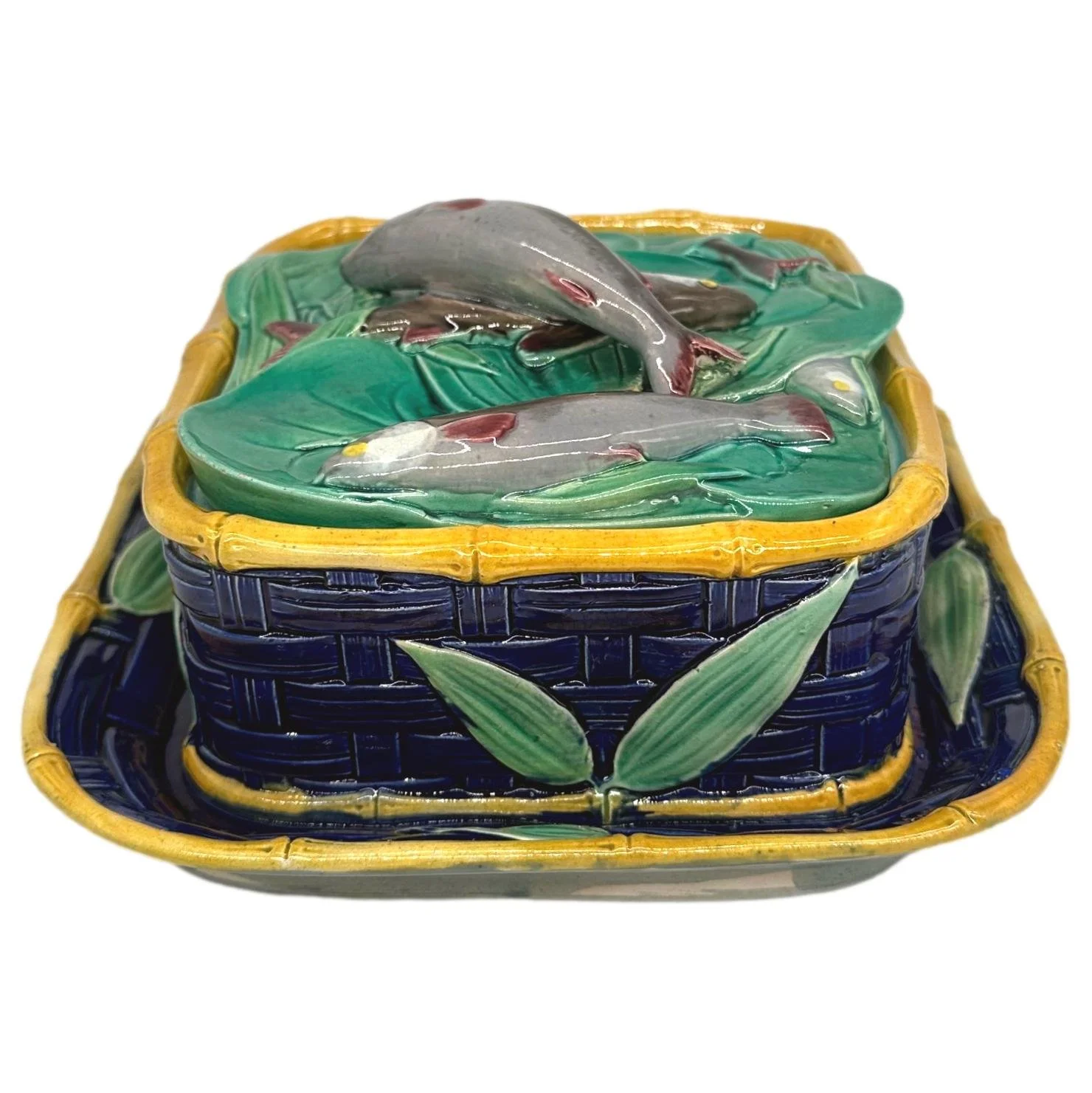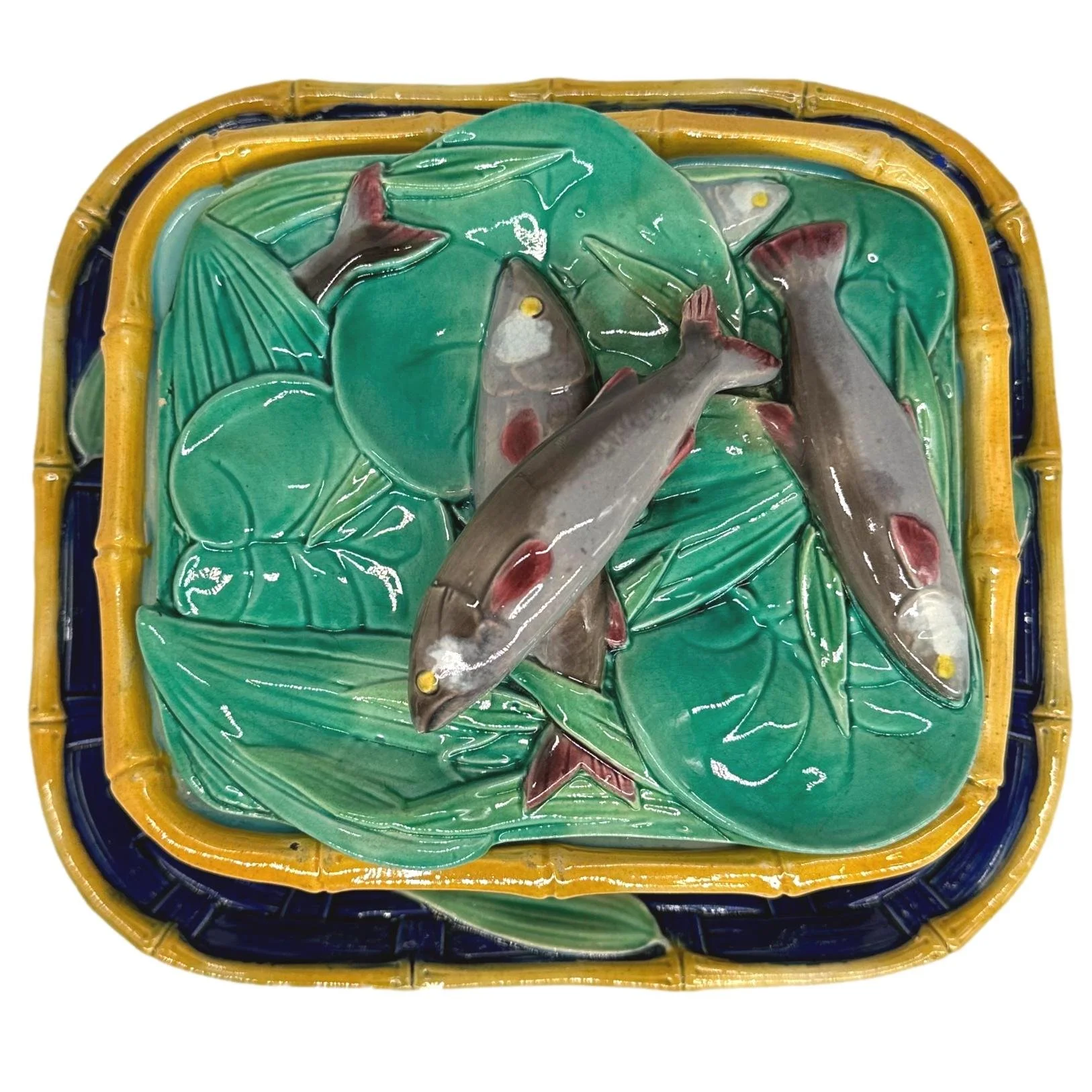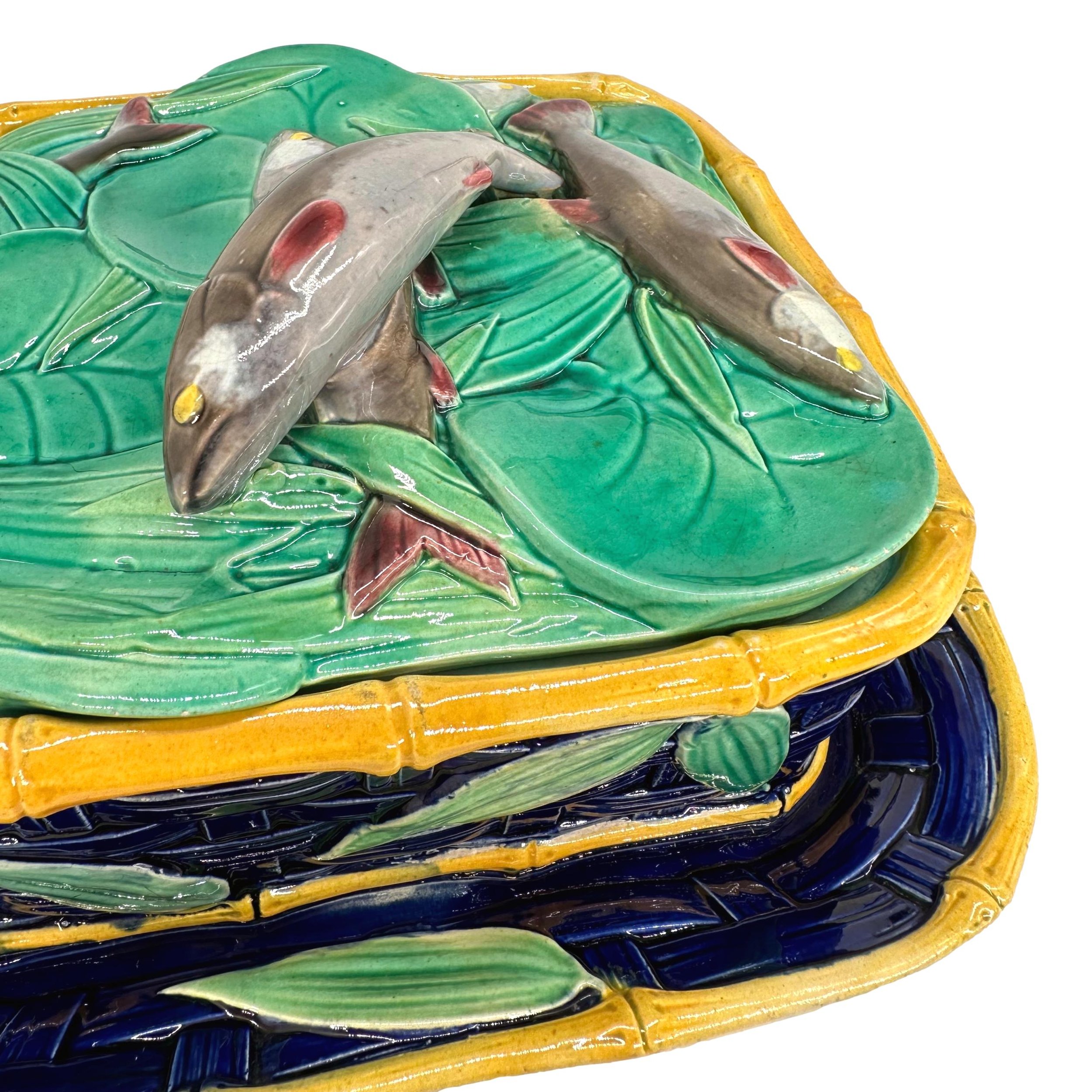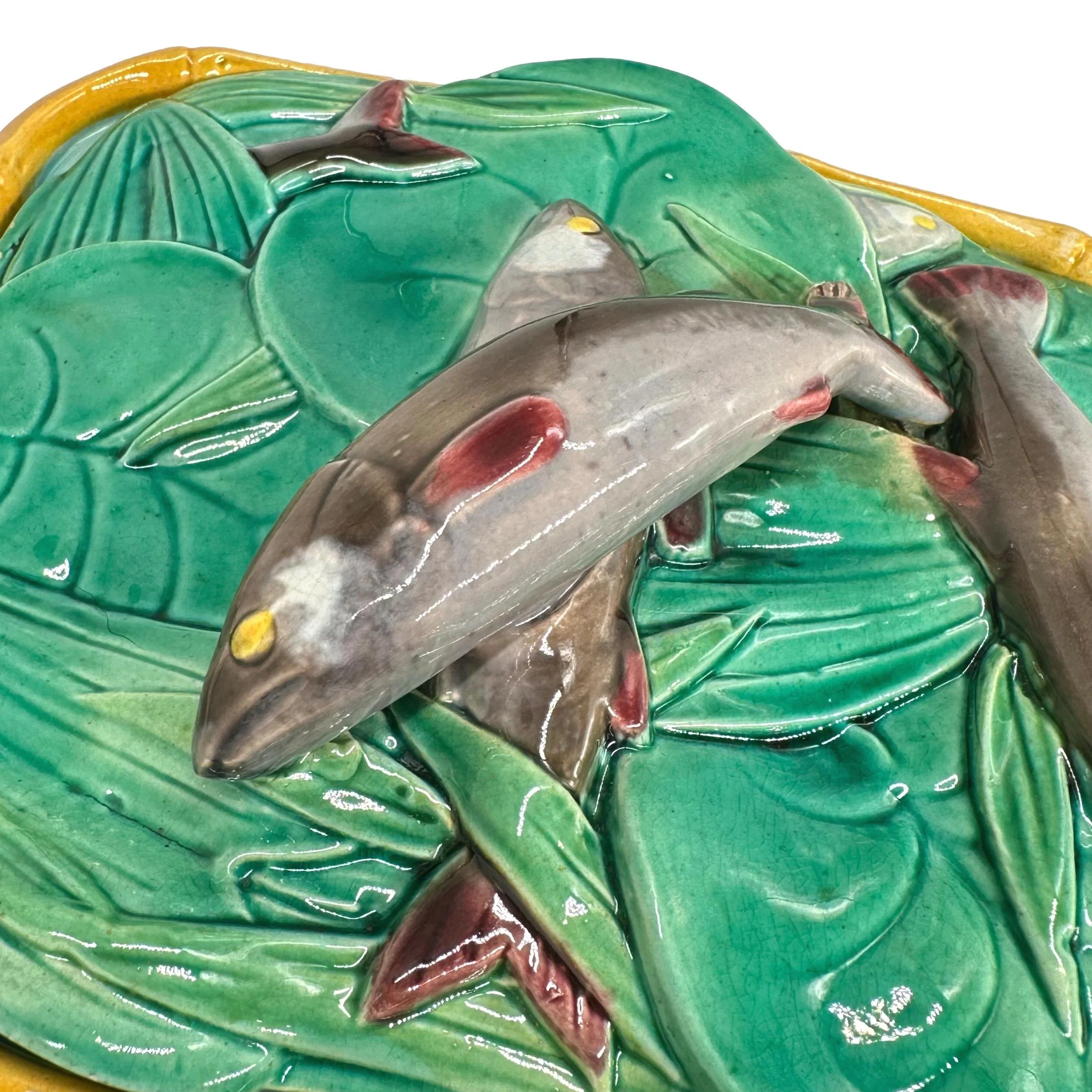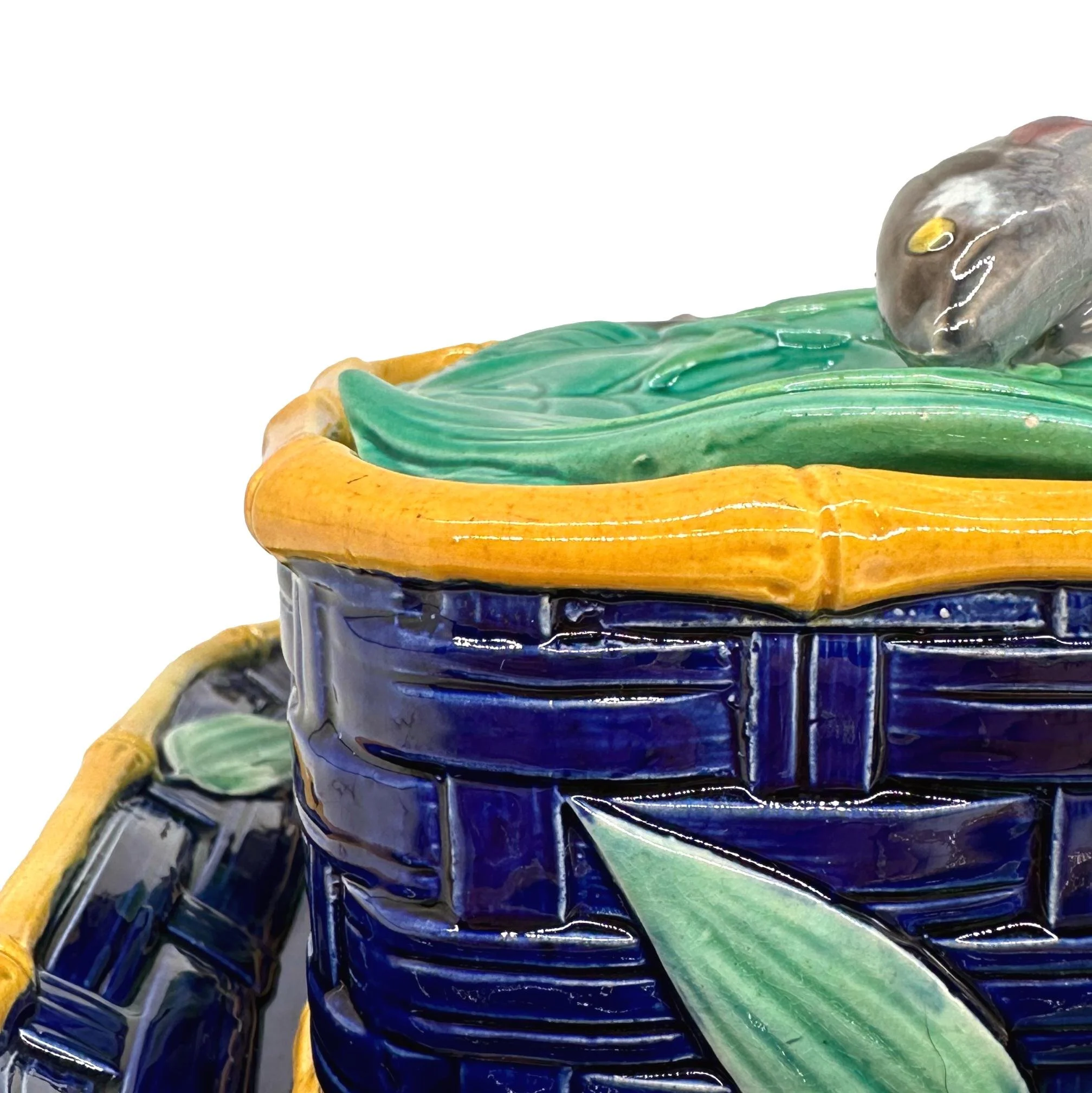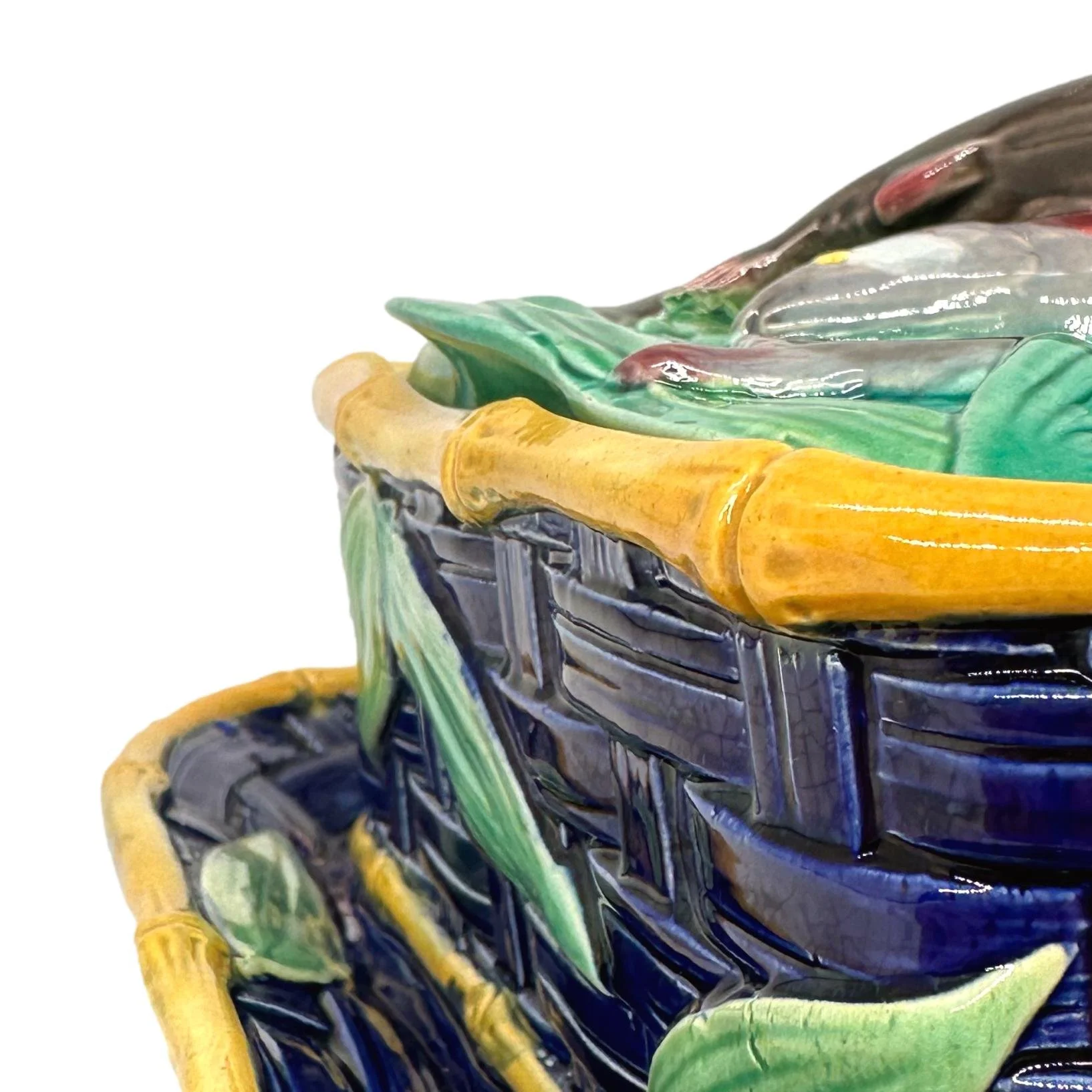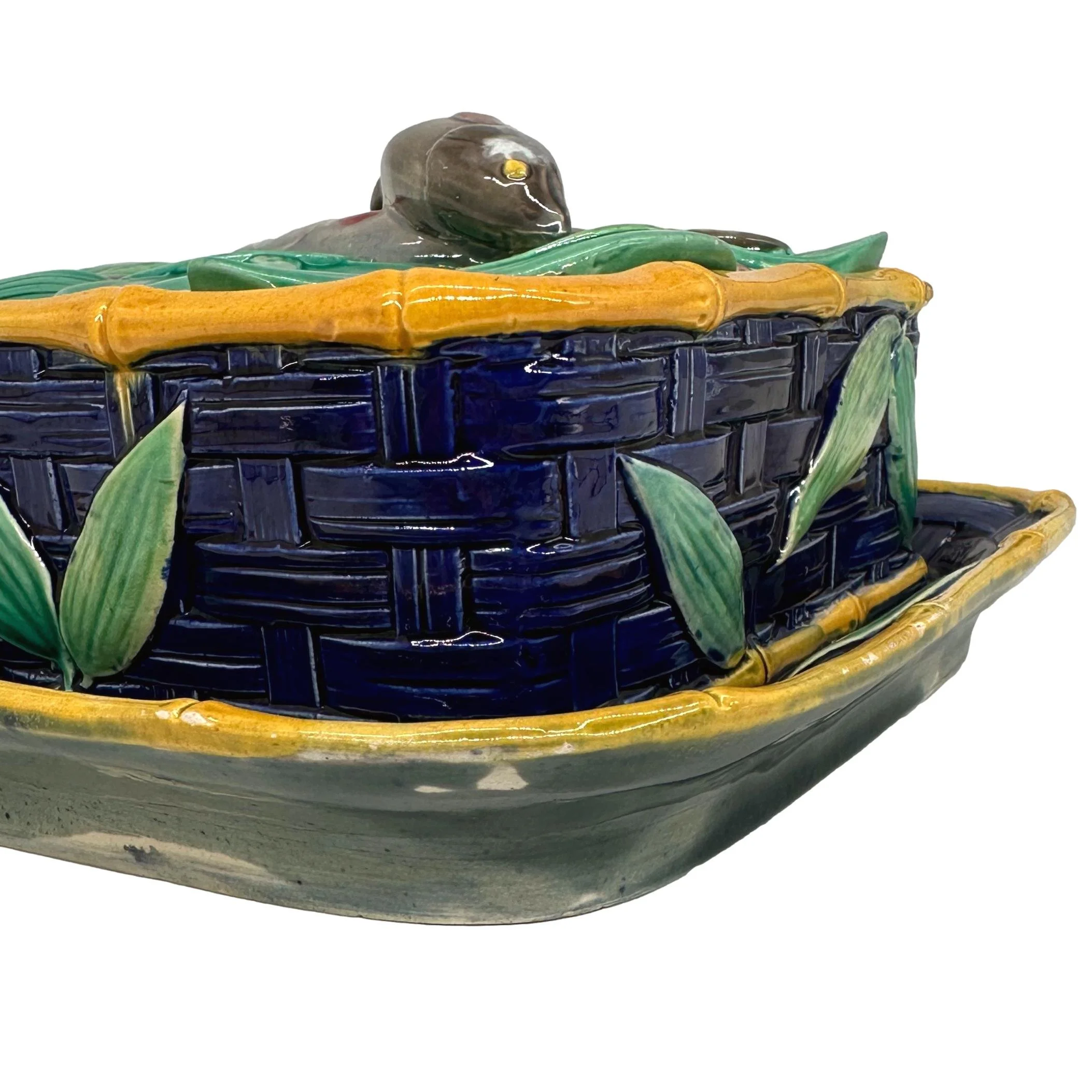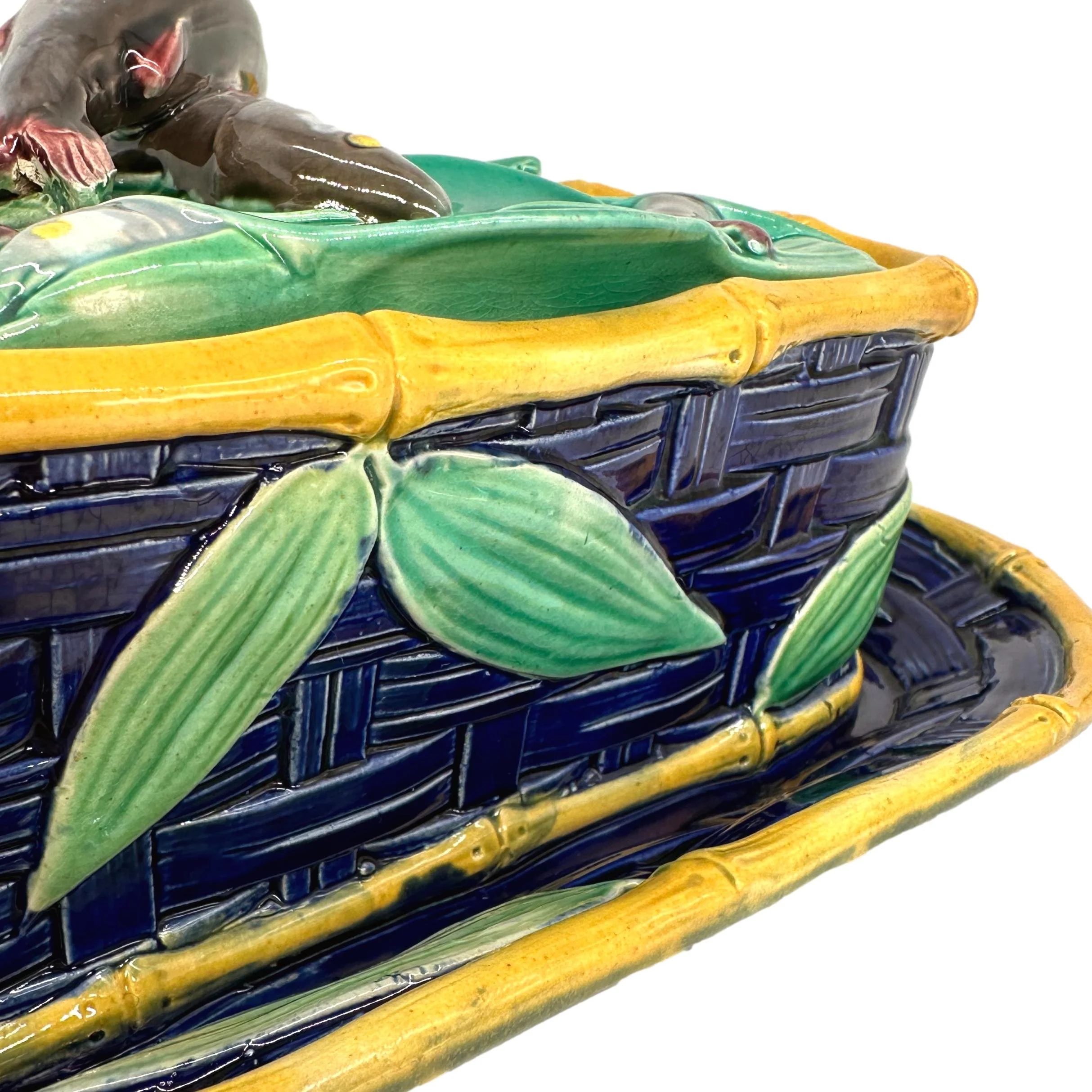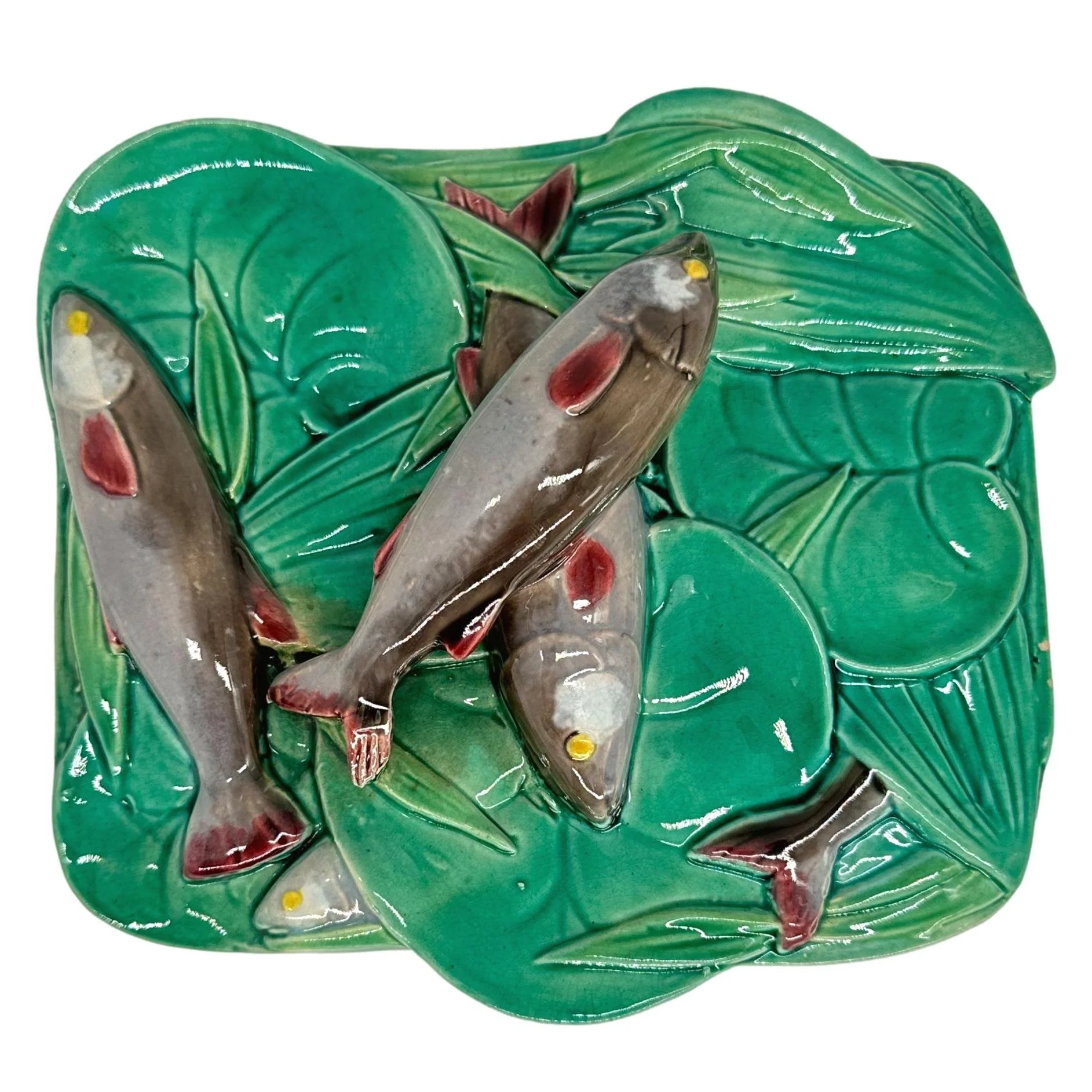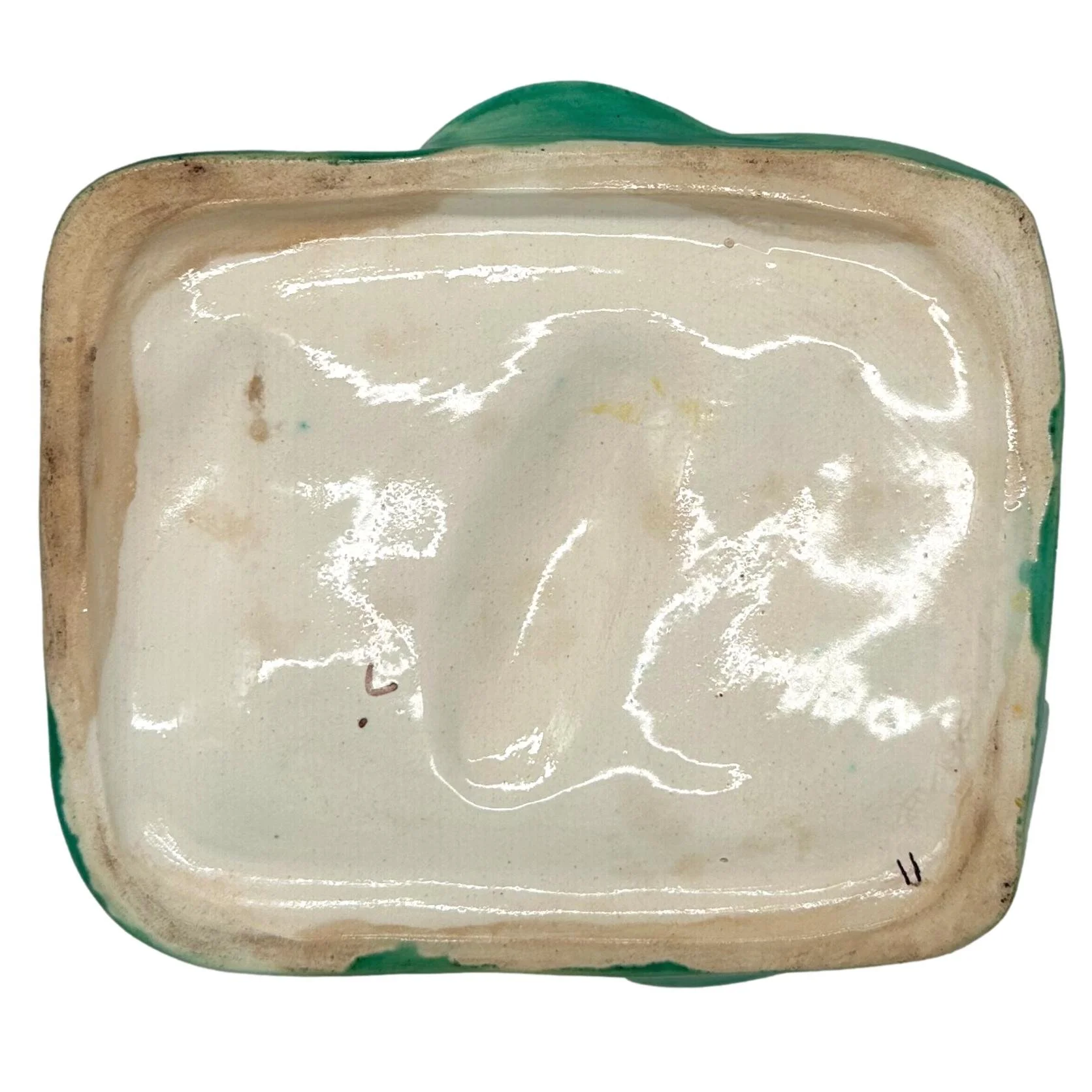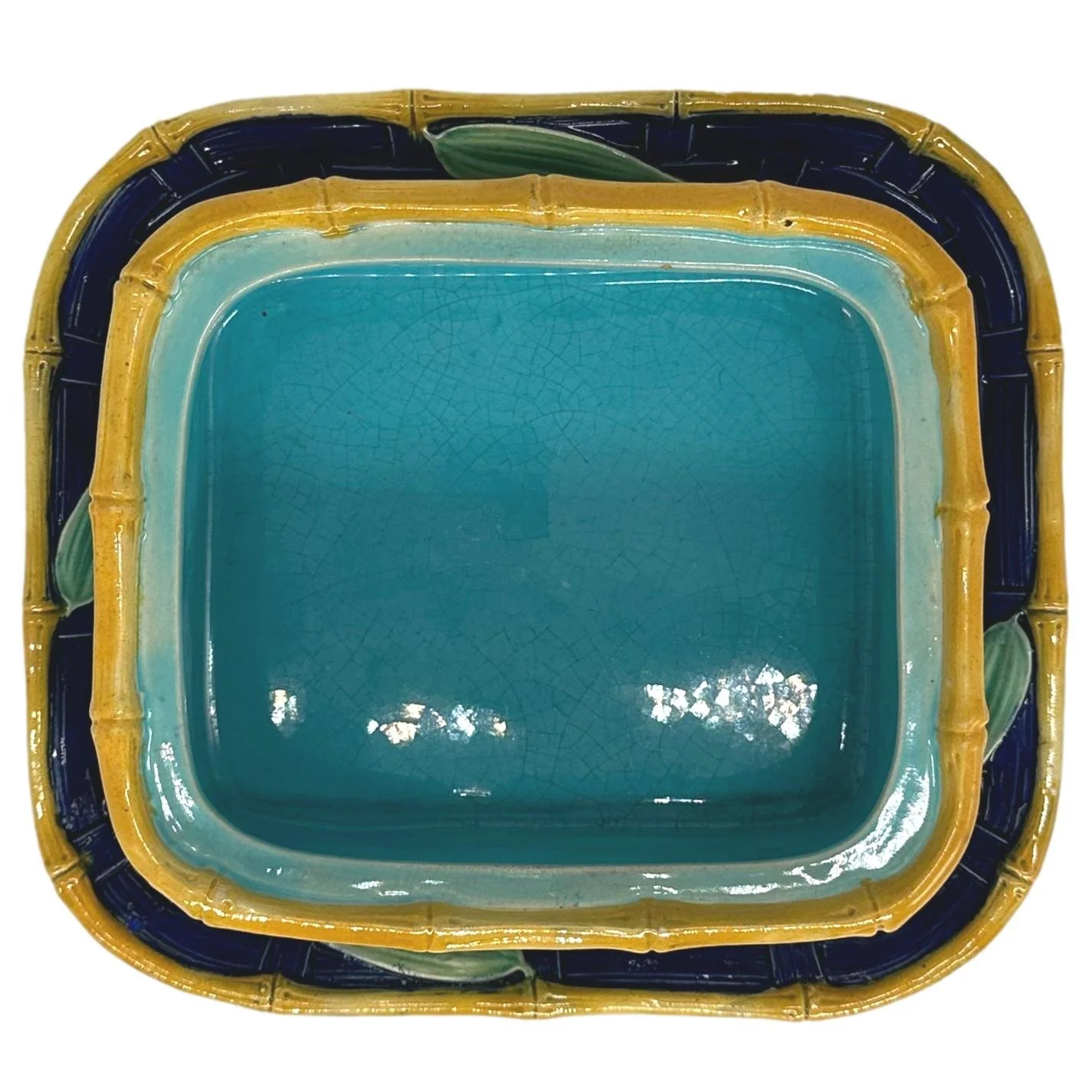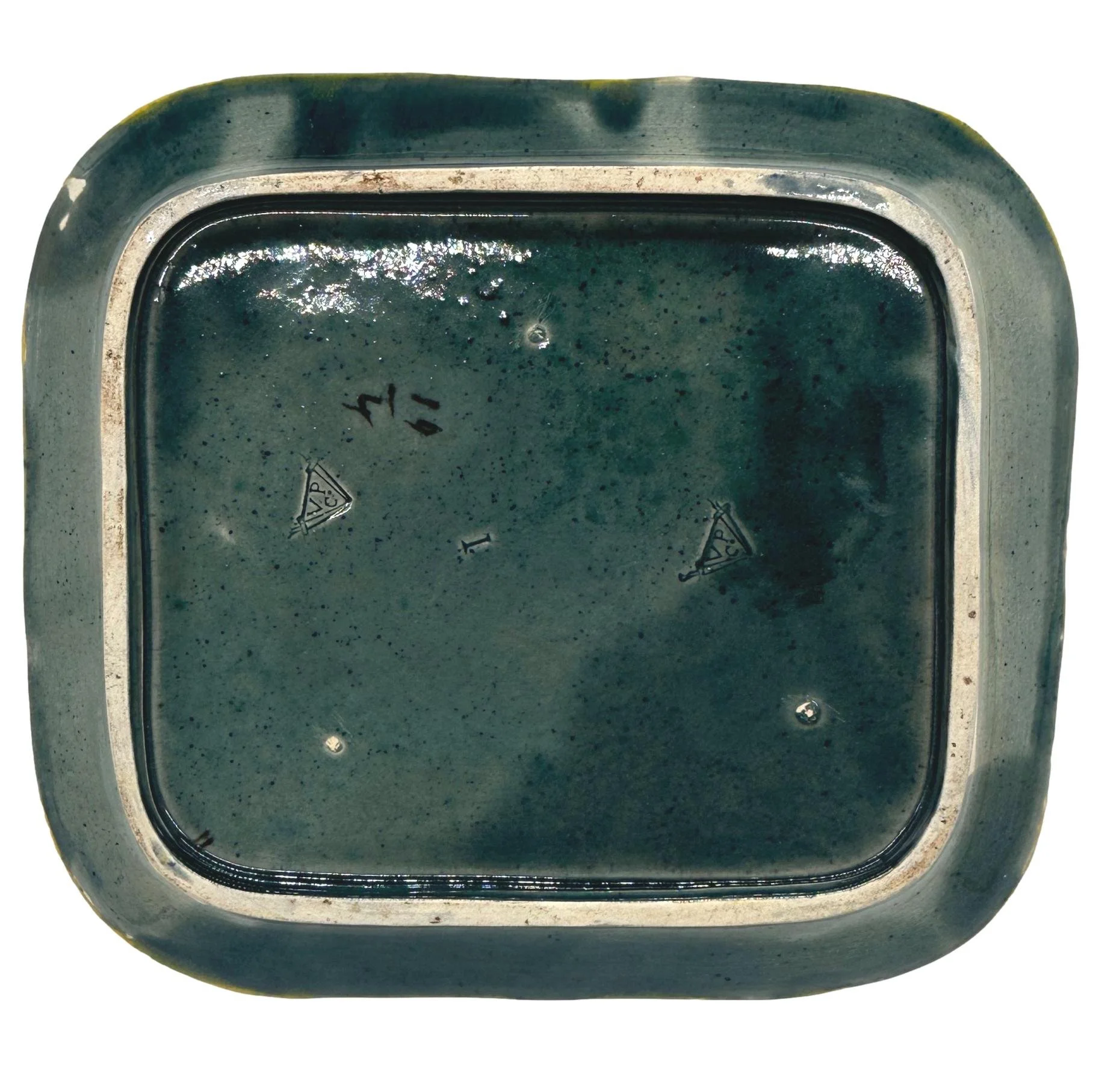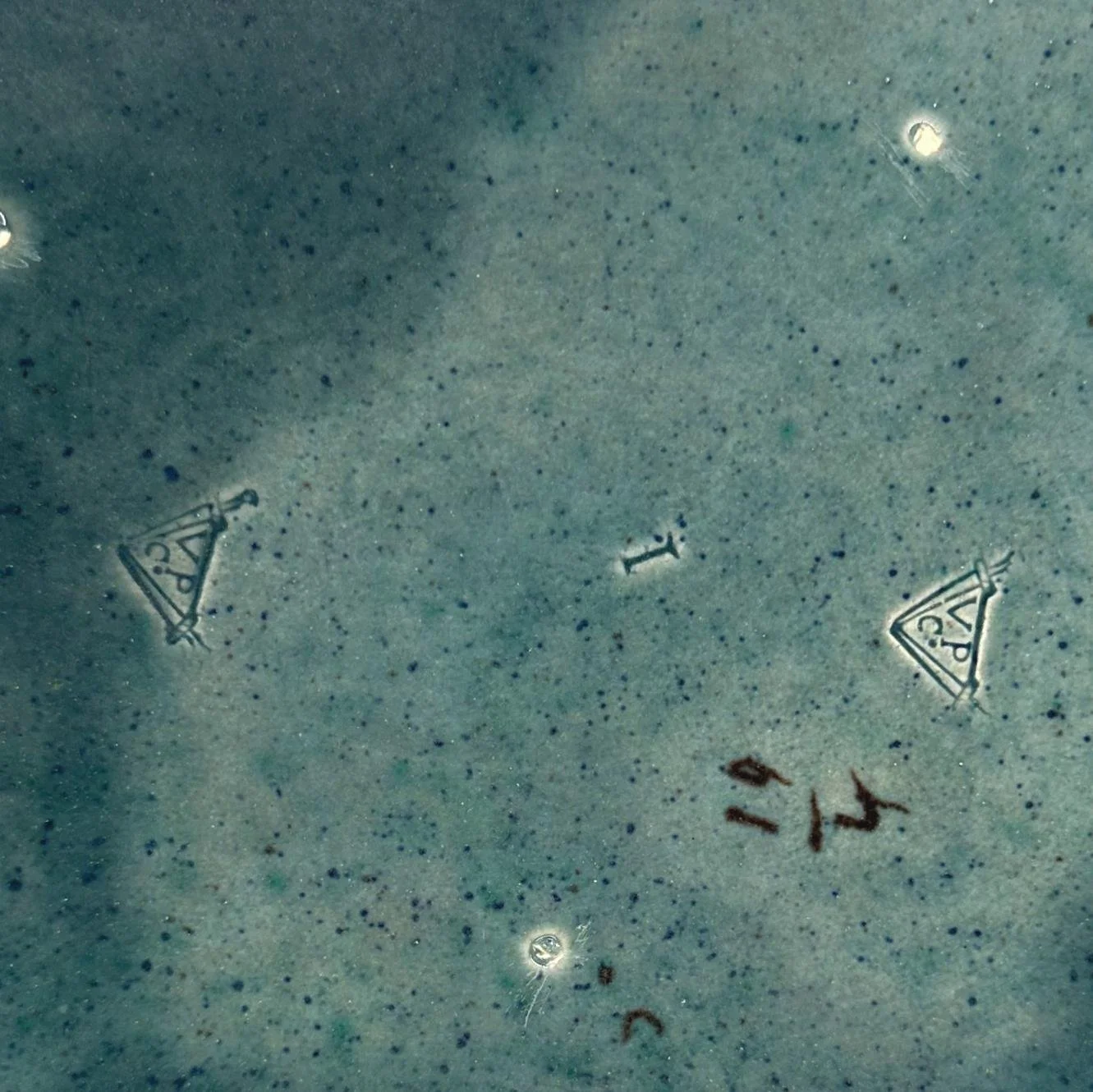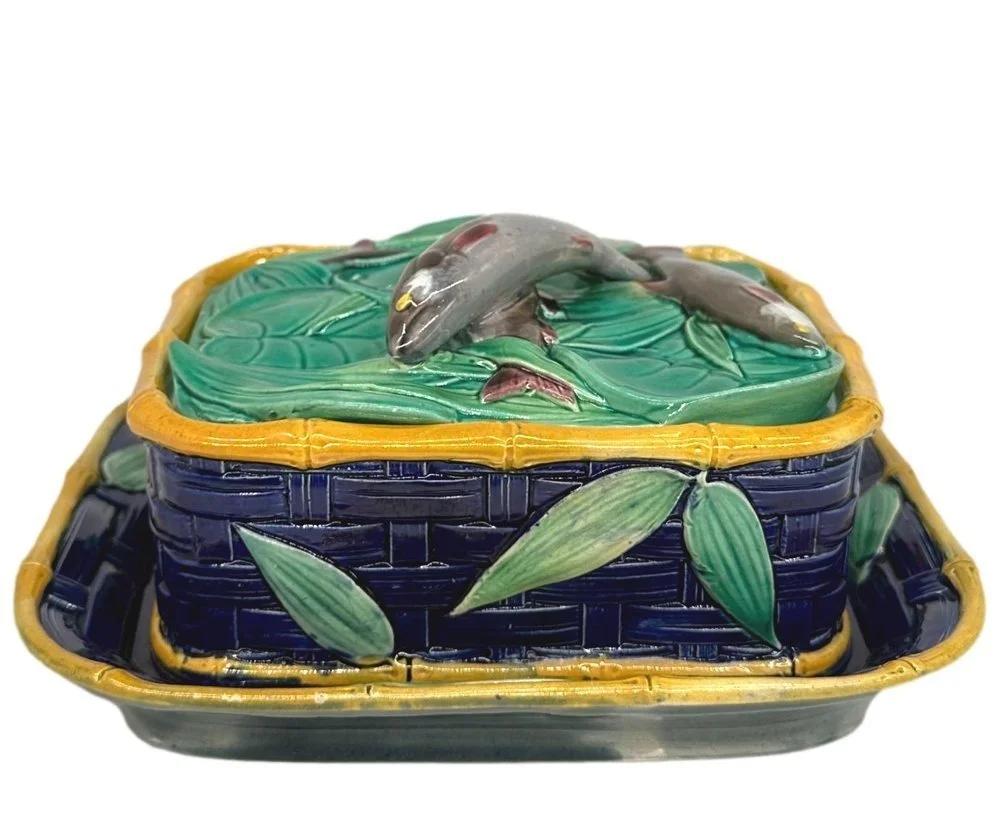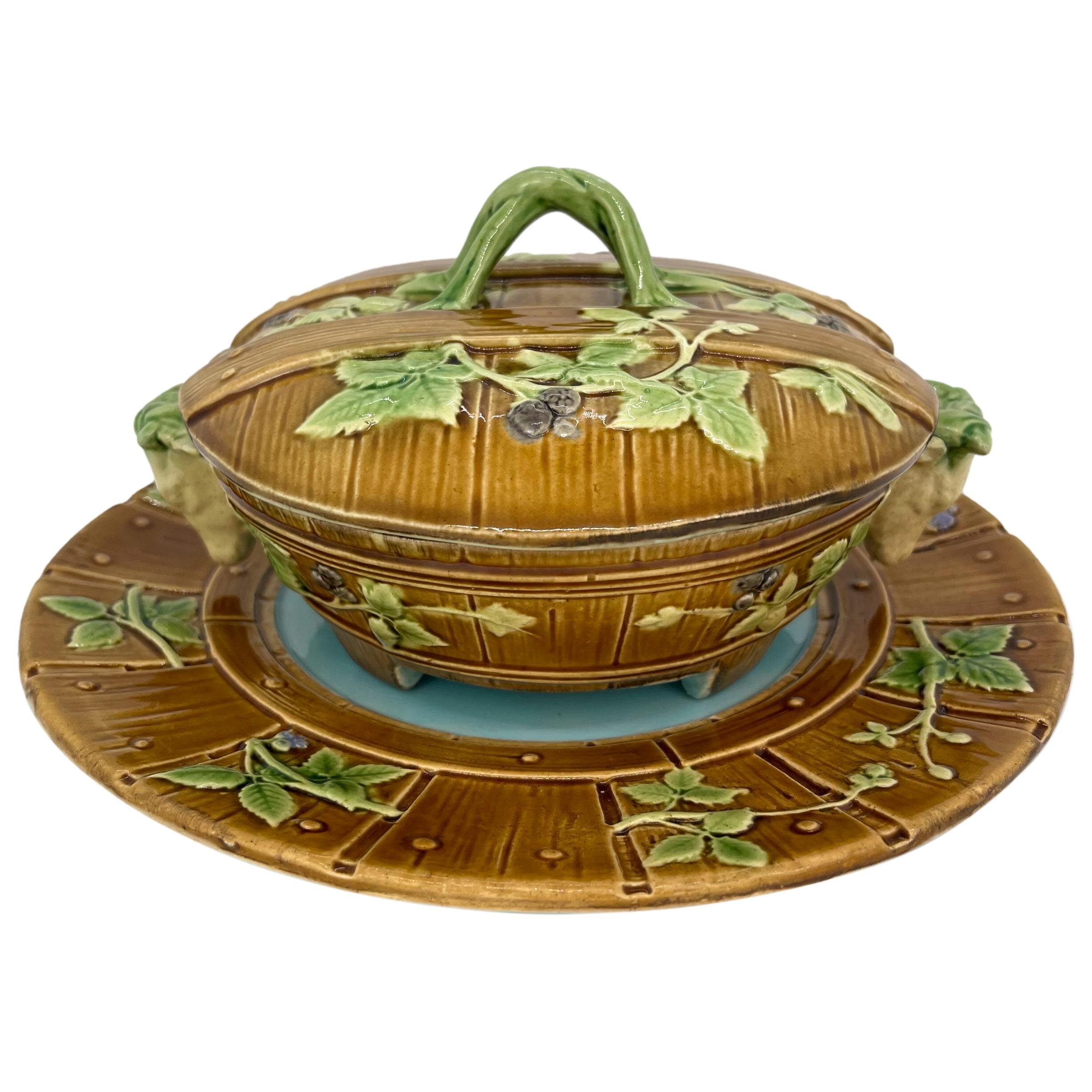 Image 1 of 17
Image 1 of 17

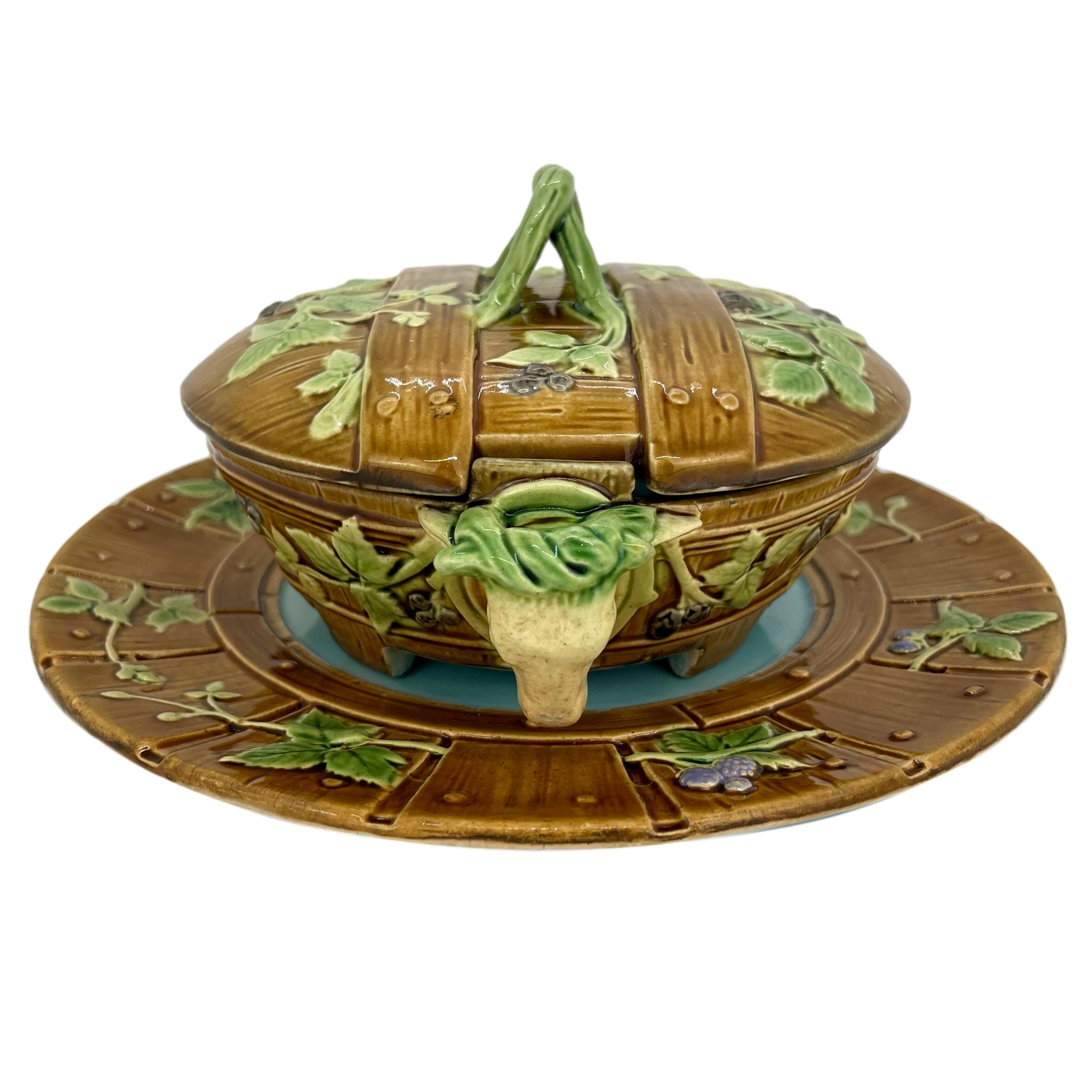 Image 2 of 17
Image 2 of 17

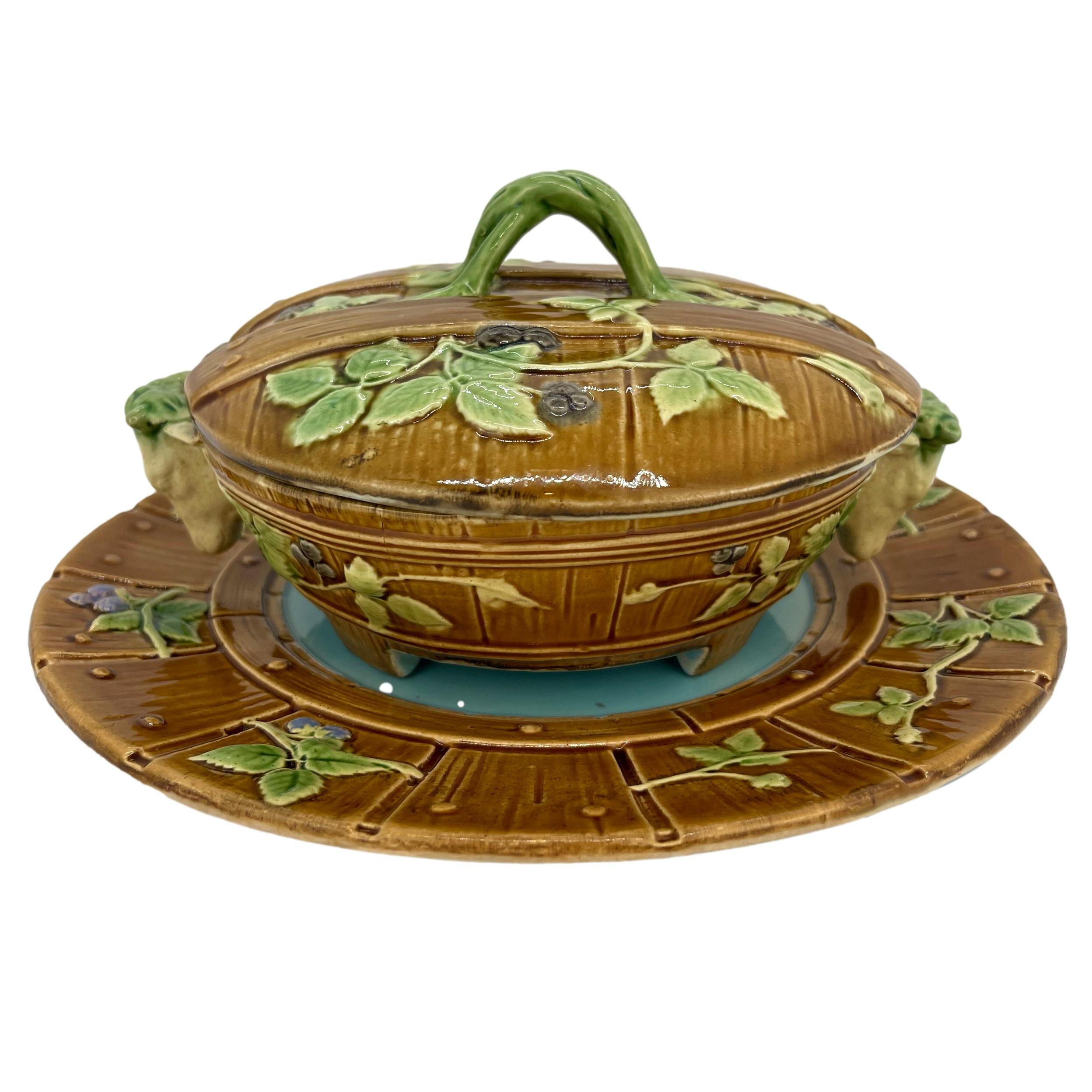 Image 3 of 17
Image 3 of 17

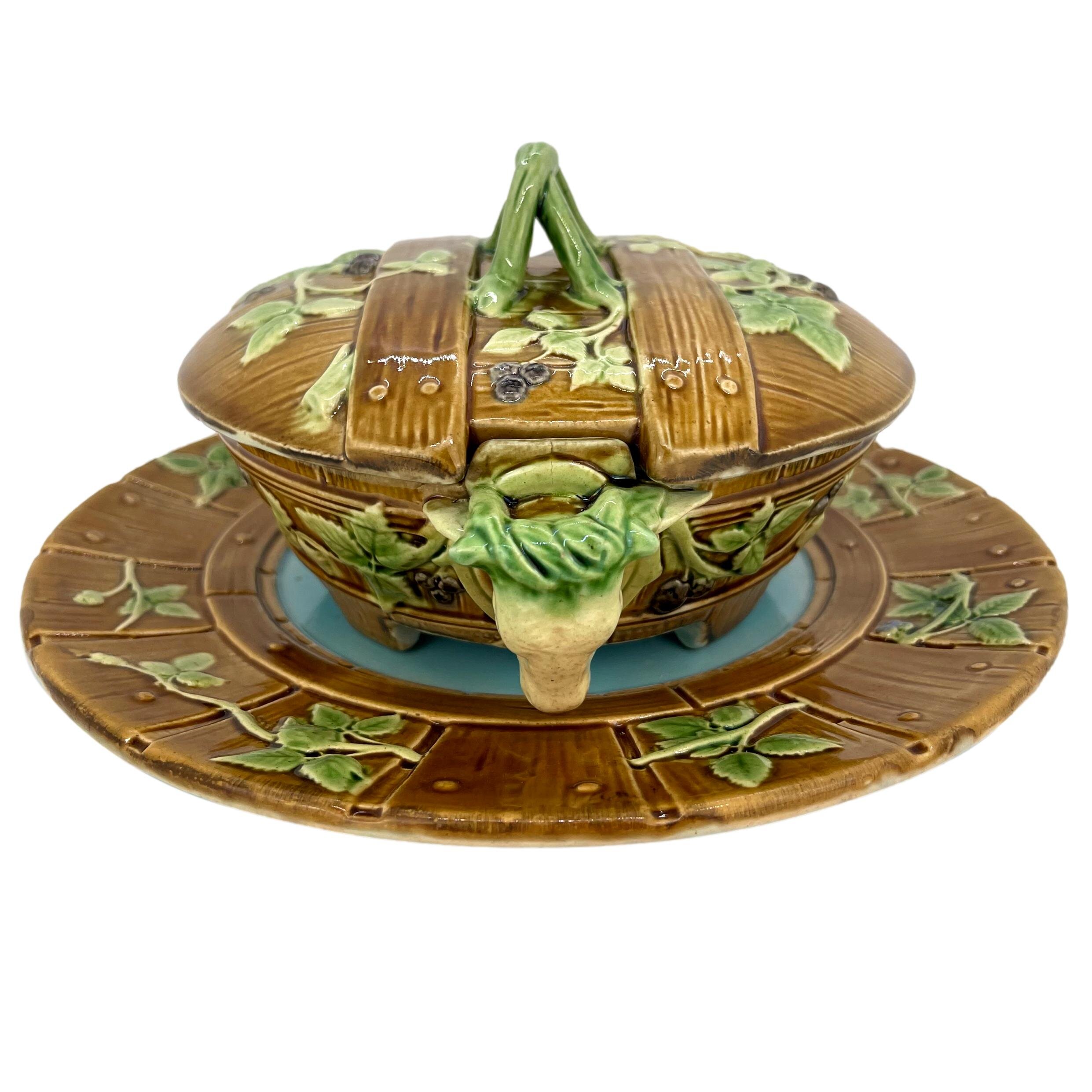 Image 4 of 17
Image 4 of 17

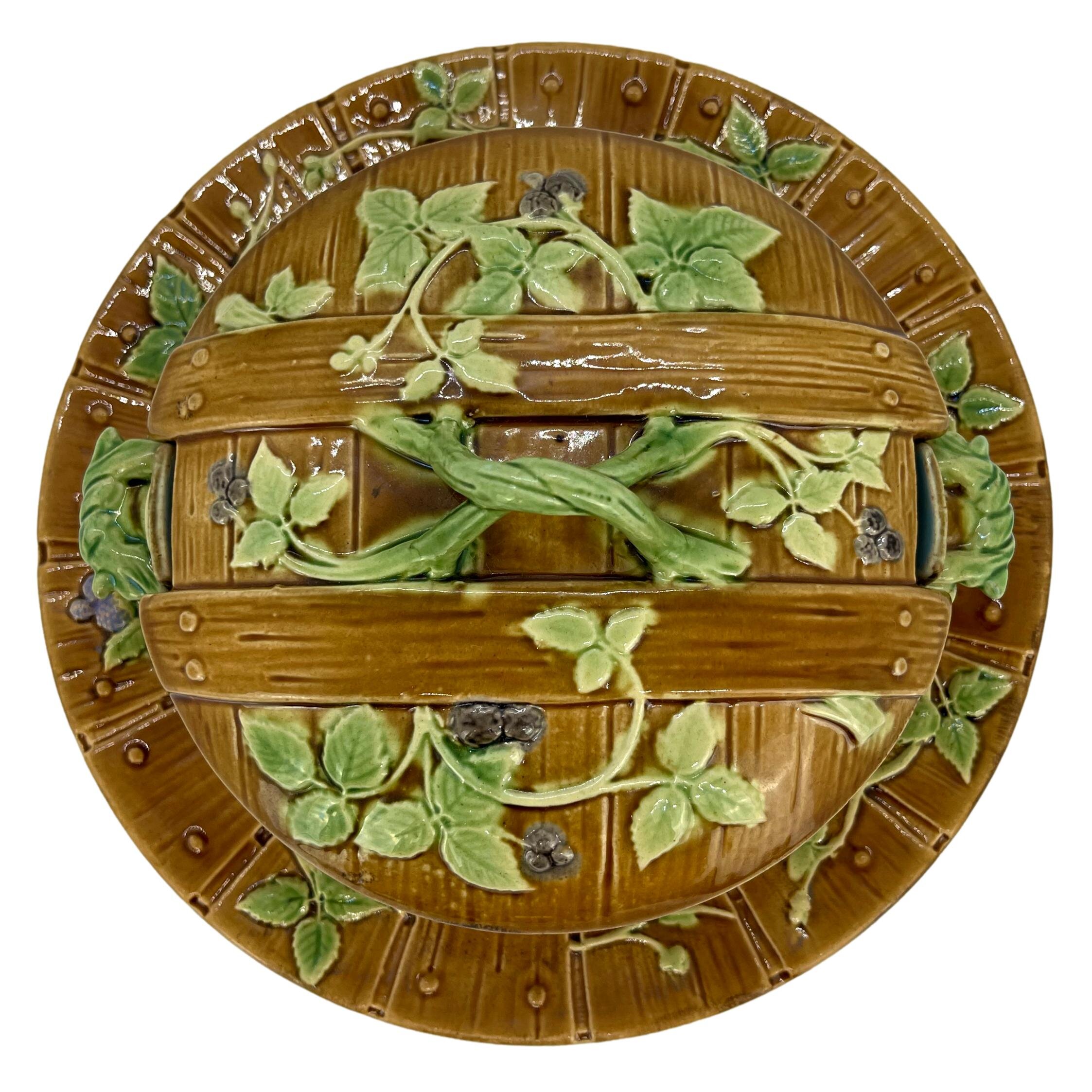 Image 5 of 17
Image 5 of 17

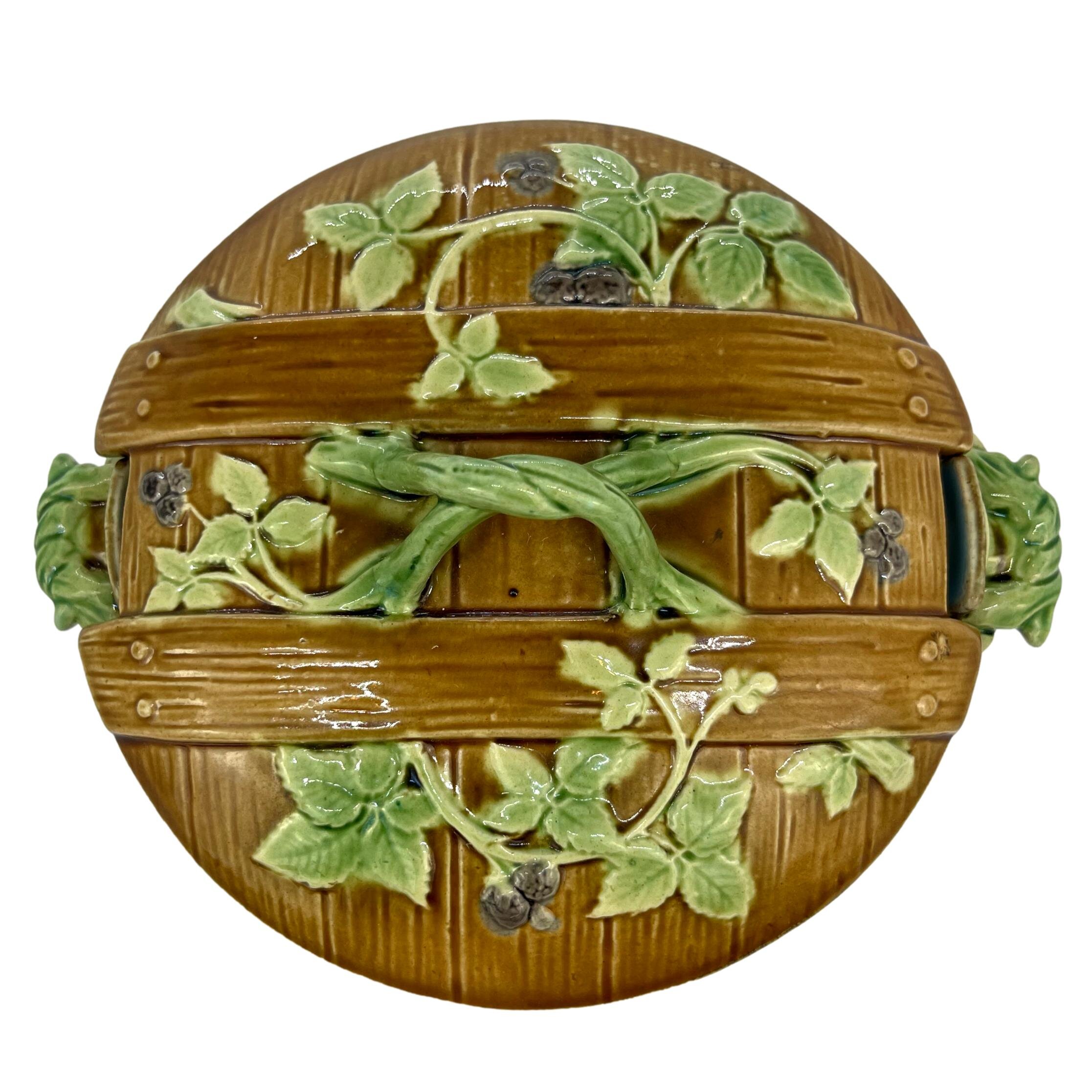 Image 6 of 17
Image 6 of 17

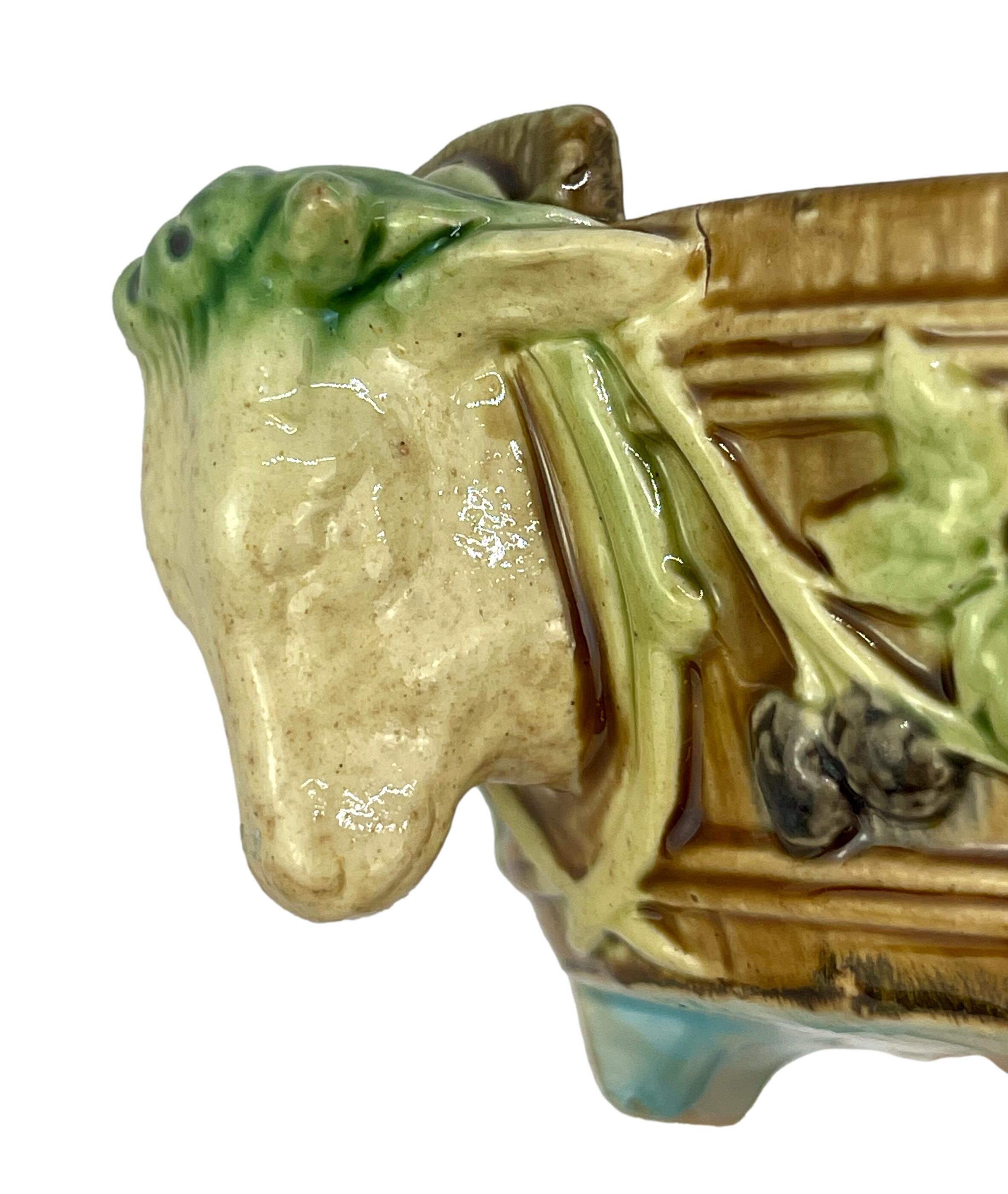 Image 7 of 17
Image 7 of 17

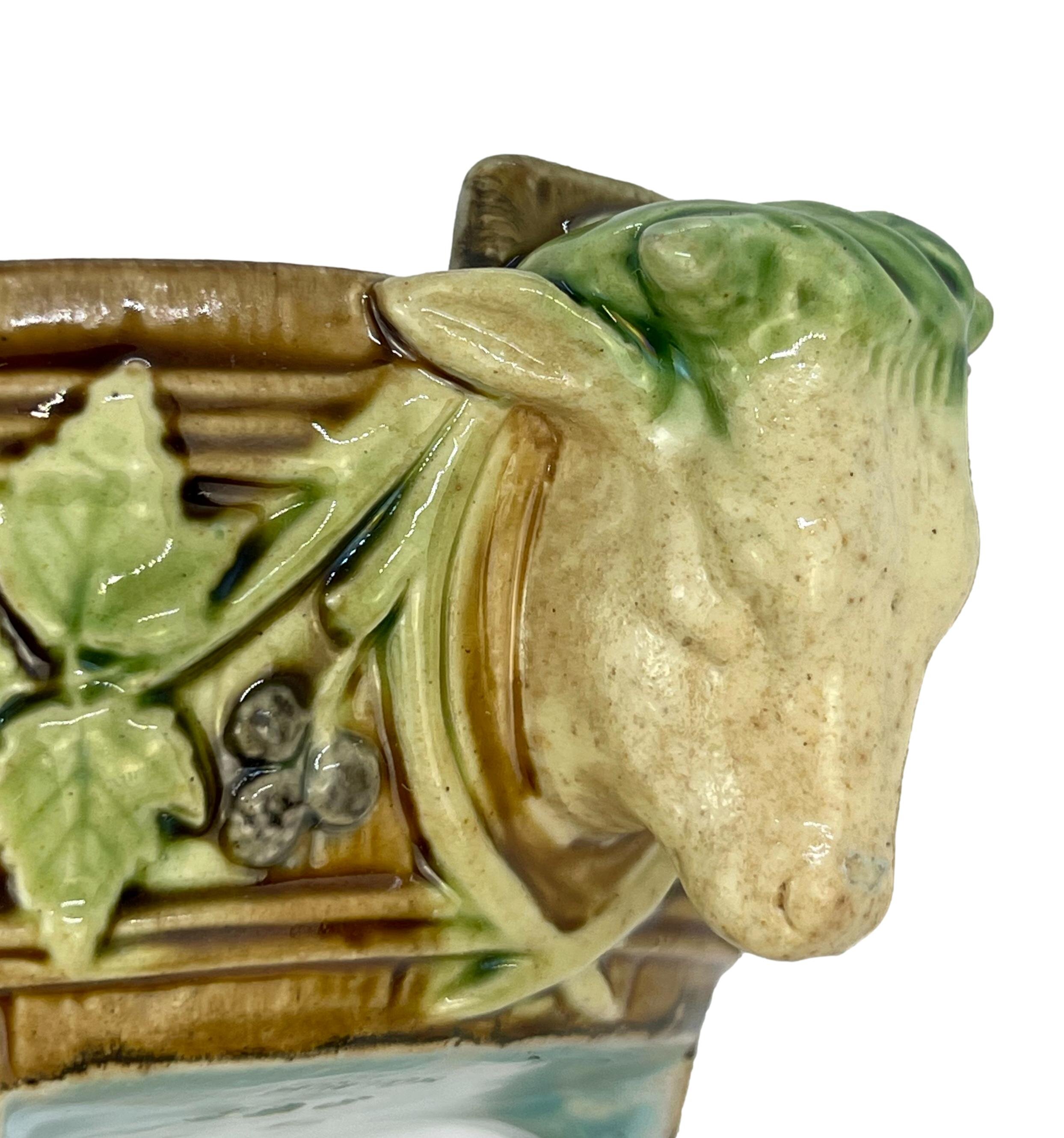 Image 8 of 17
Image 8 of 17

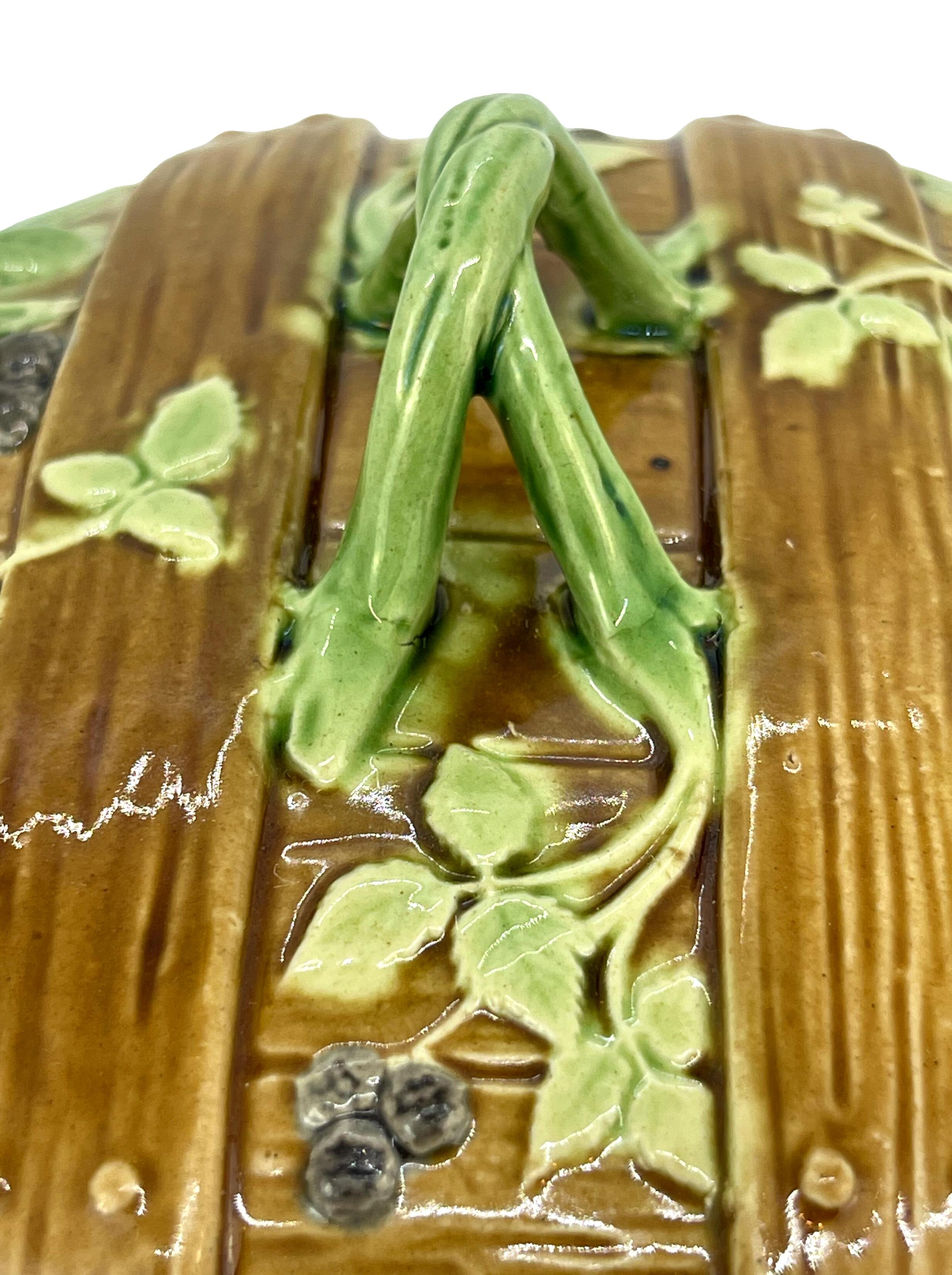 Image 9 of 17
Image 9 of 17

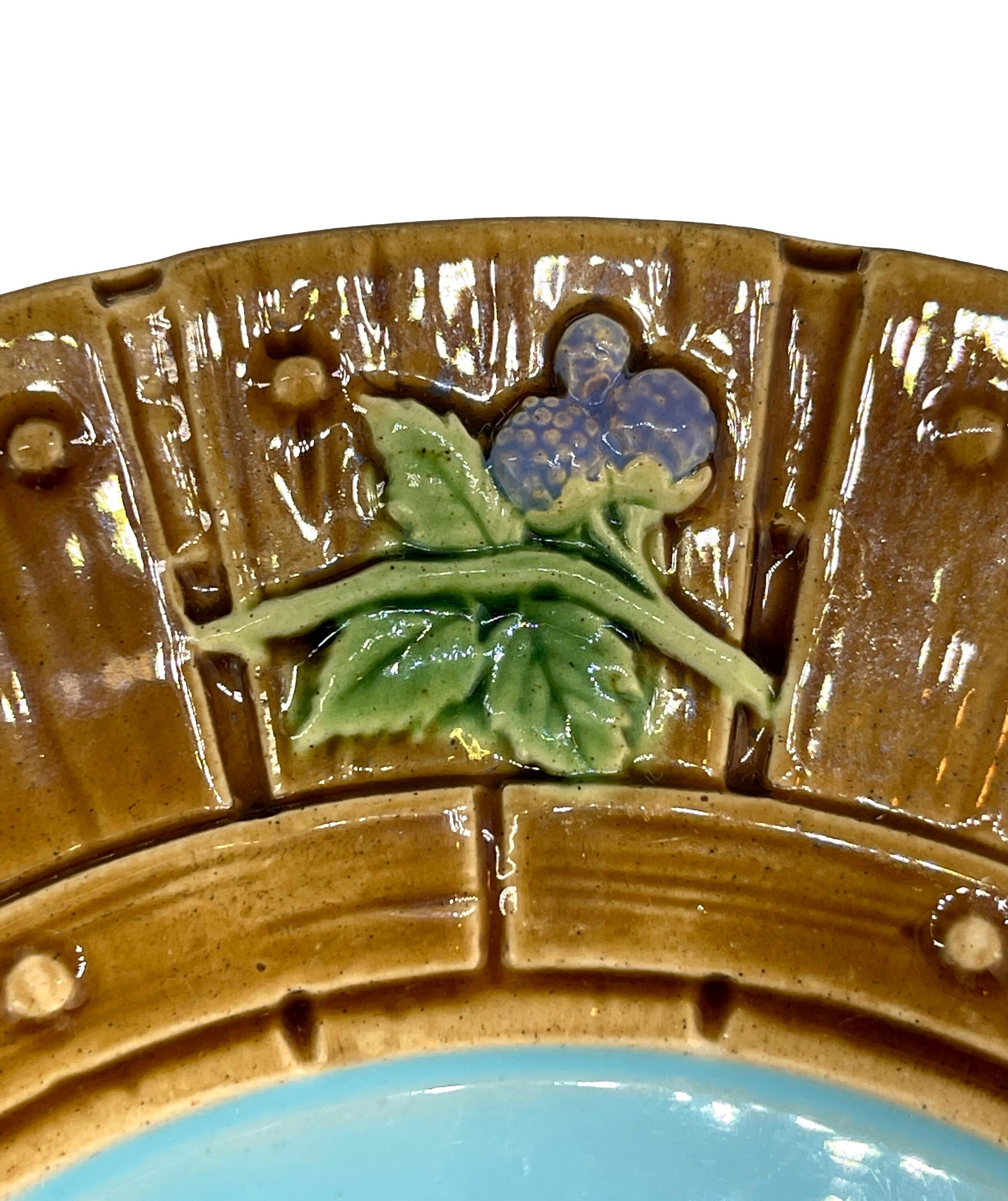 Image 10 of 17
Image 10 of 17

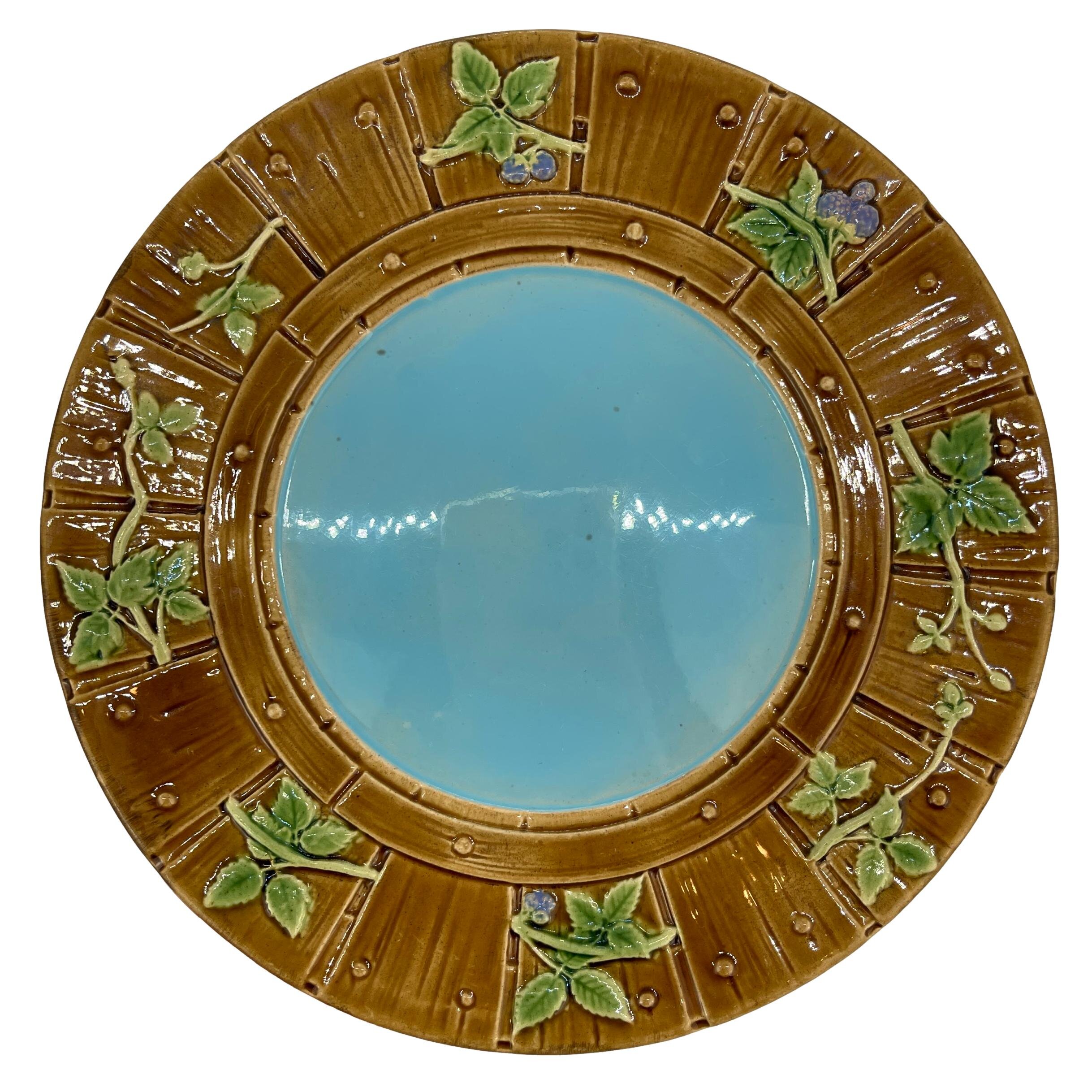 Image 11 of 17
Image 11 of 17

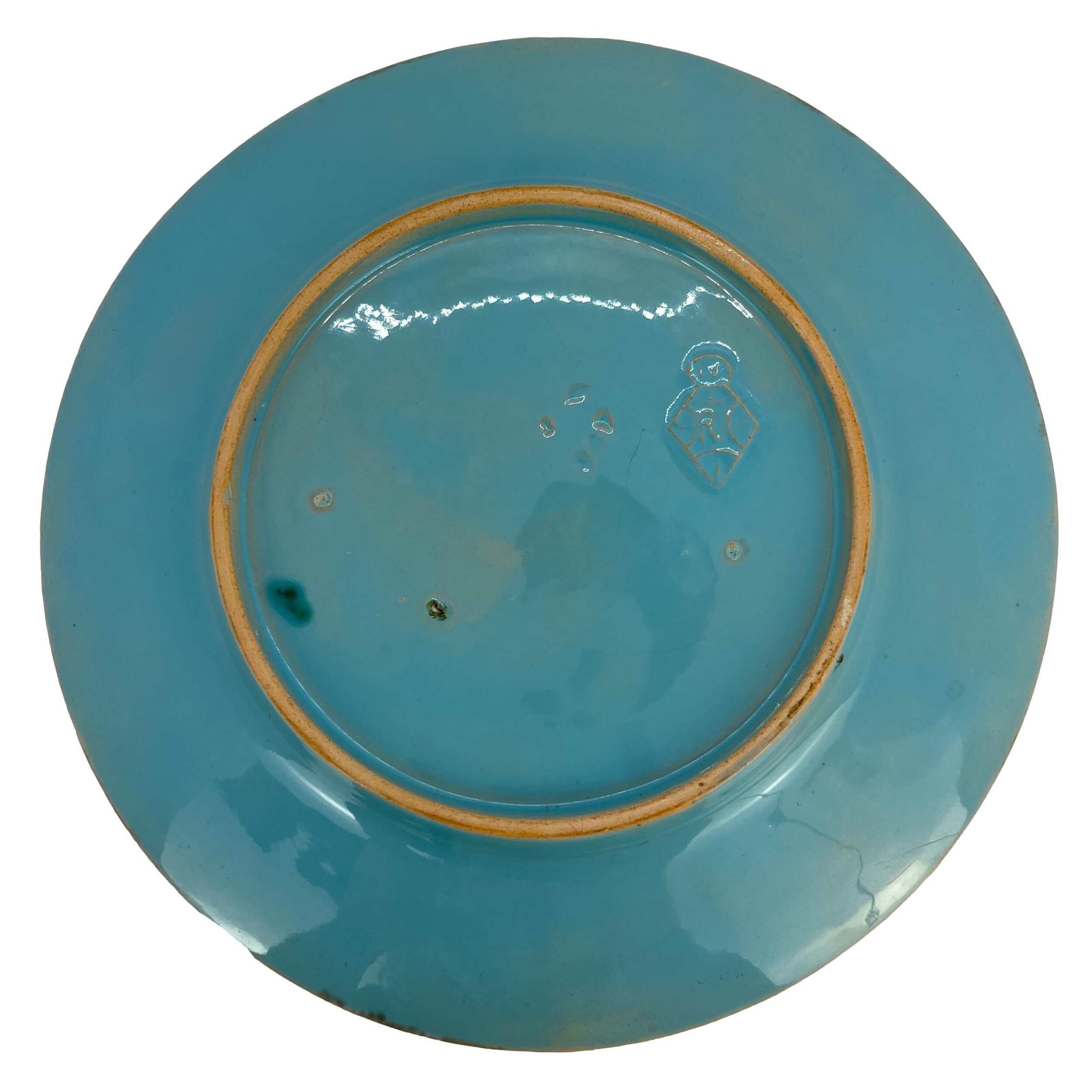 Image 12 of 17
Image 12 of 17

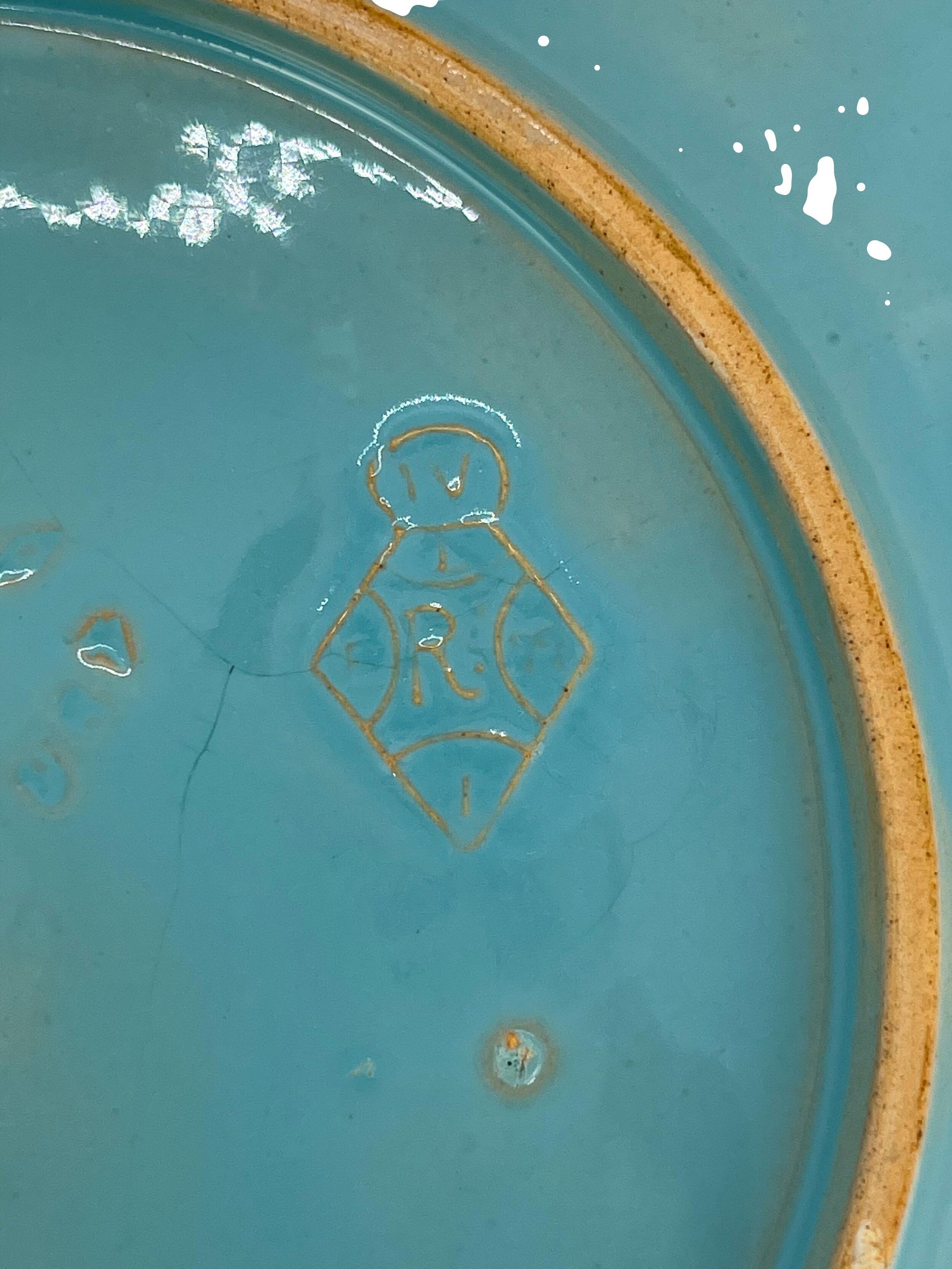 Image 13 of 17
Image 13 of 17

 Image 14 of 17
Image 14 of 17

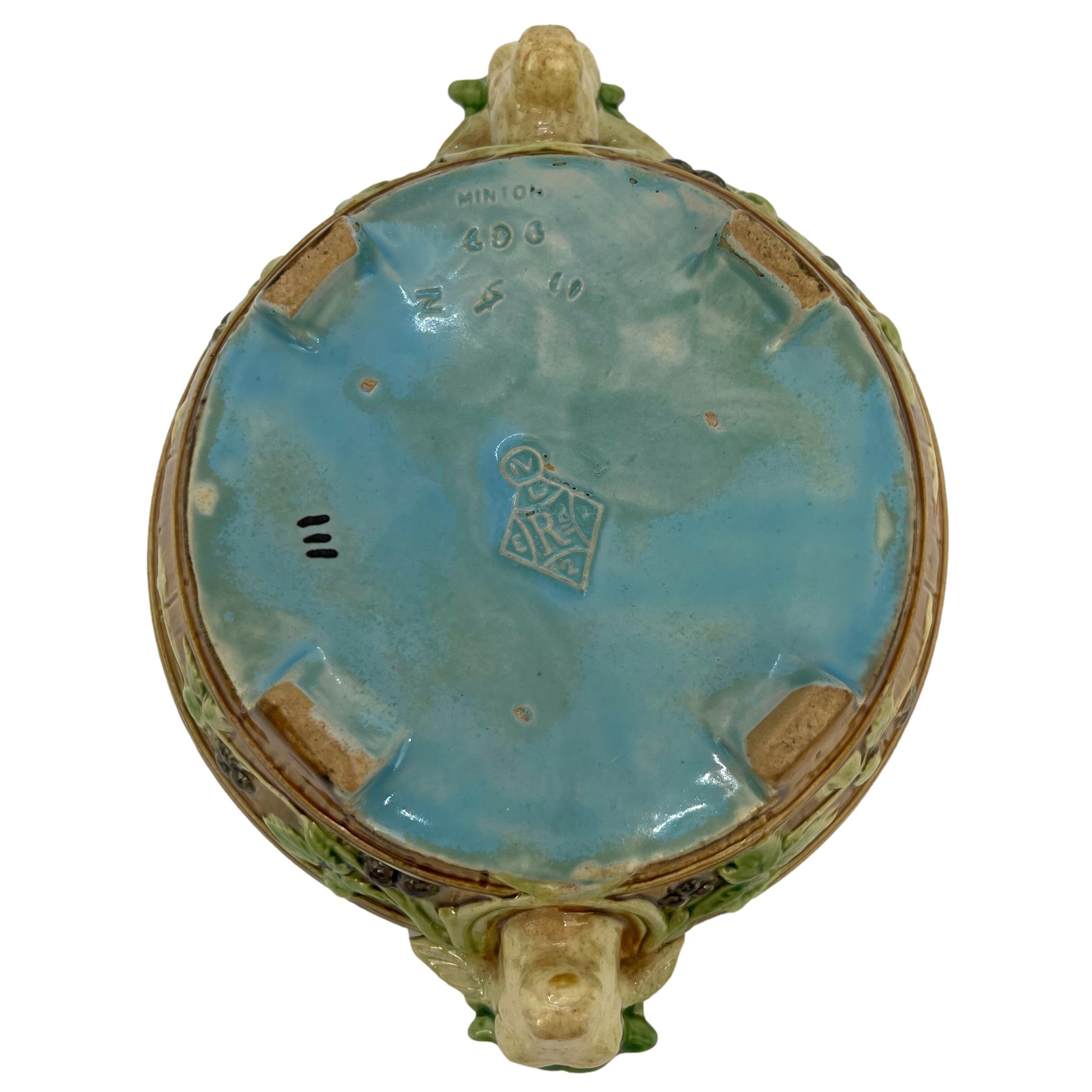 Image 15 of 17
Image 15 of 17

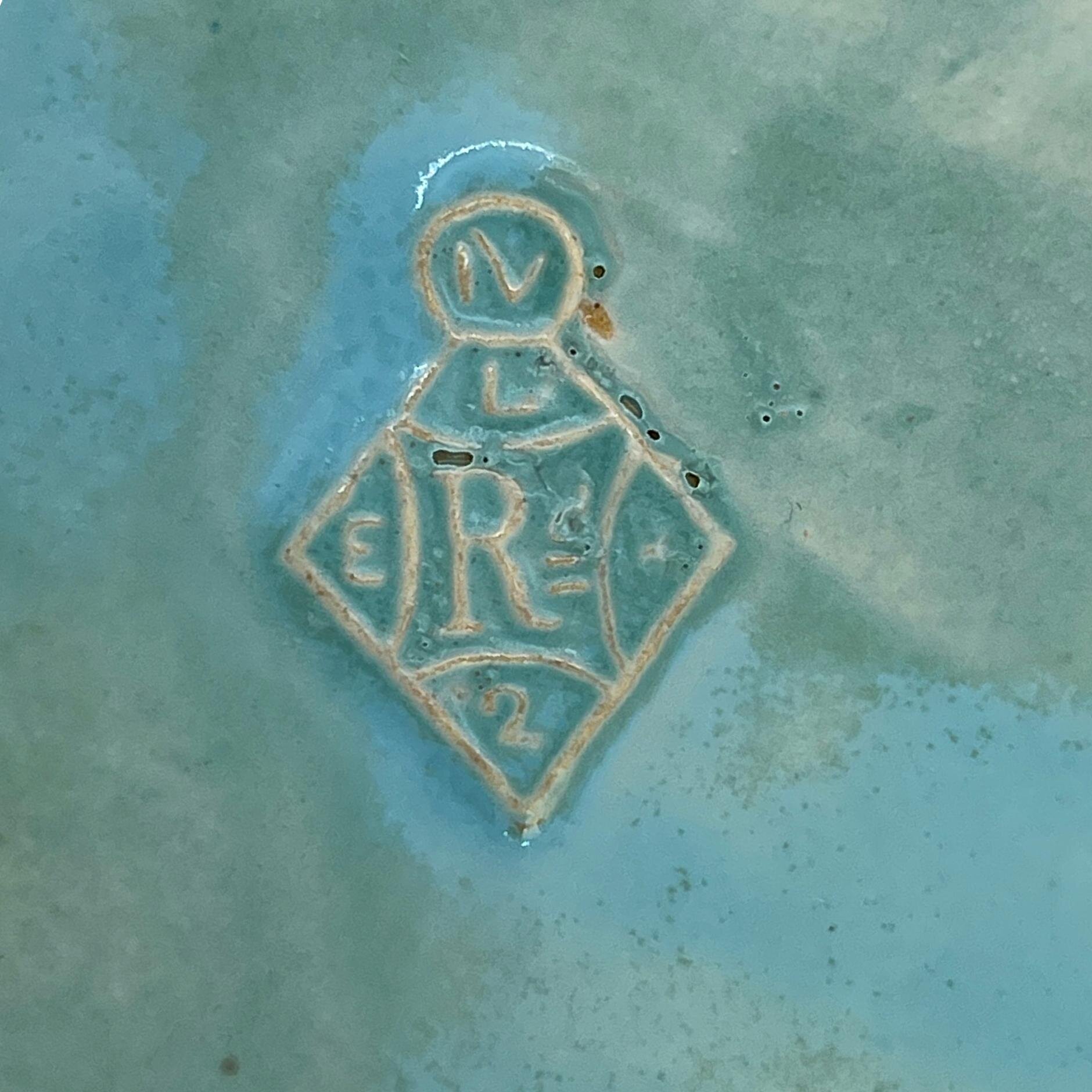 Image 16 of 17
Image 16 of 17

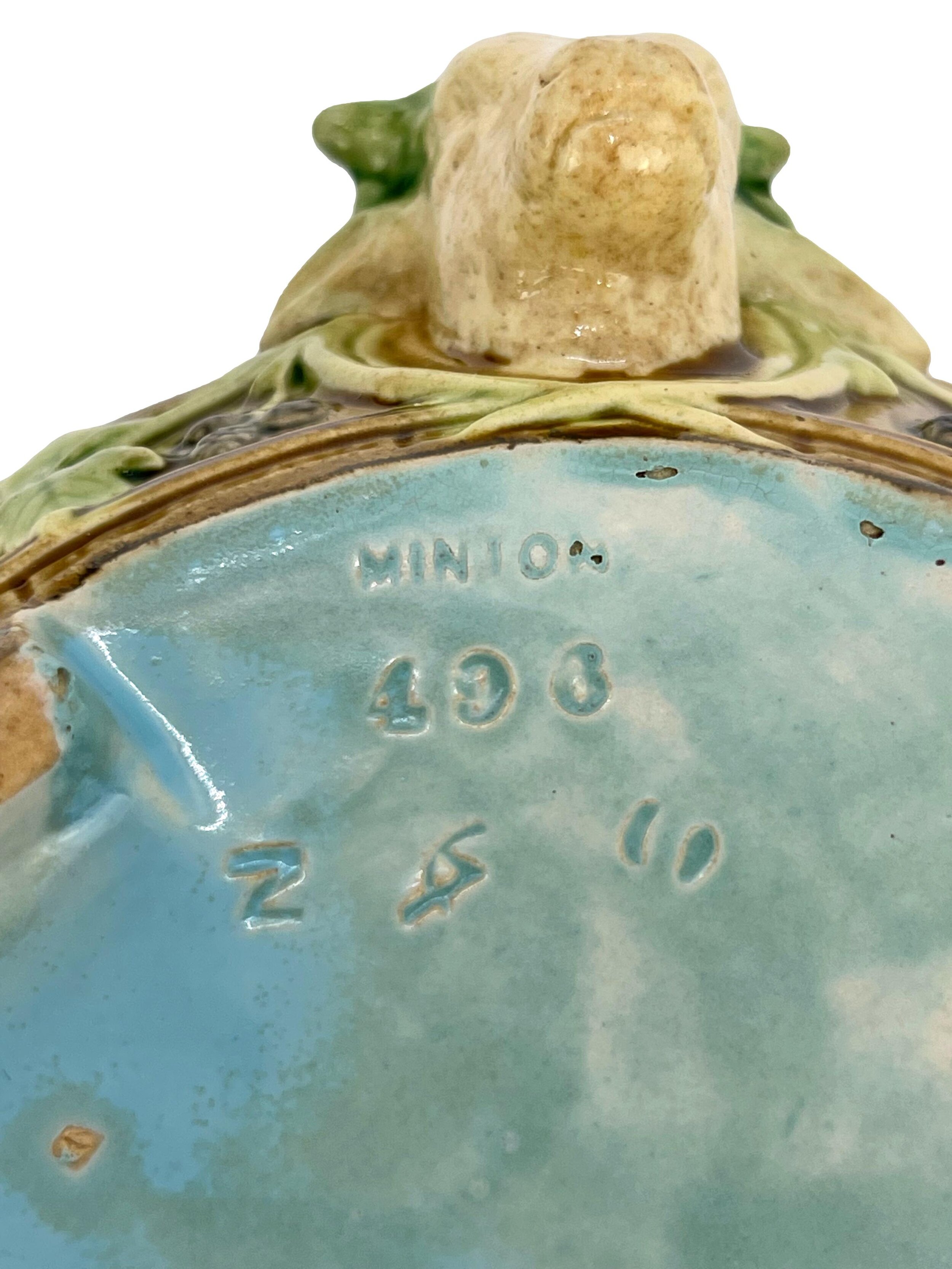 Image 17 of 17
Image 17 of 17

Minton Majolica Covered Butter Dish and Stand with Cow-Form Handles, Dated 1867
Minton Majolica butter dish, Lid, and Underplate, molded as wooden staves with blackberries and vines with cow's heads wearing green glazed garlands as handles, the reverse of the dish with impressed marks: 'MINTON,' and Minton date cypher for 1867, with molded British Registry lozenge for 29 May 1856 (when the design was registered), and impressed design number, '496,' which corresponds to the entry, 'Butler and Stand' in the Minton Majolica Pattern Books preserved in the Minton Archives, Minton Museum and reprinted in J. Jones.*
For thirty years, we have been among the world's preeminent specialists in fine antique majolica.
Book References:
1--Susan Weber et al., MAJOLICA MANIA: Transatlantic Pottery in England and the United States 1850--1915. New Haven and London: Yale University Press, 2020, Volume One, p. 127, Figure 5.40.
*2--Joan Jones, "MINTON: The First Two Hundred Years of Design and Production." Shrewsbury, England: Swan Hill Press, 1993, Appendix E, p. 345. Minton Ornamental Shapes (i.e., design numbers) listed in Appendix E, pp. 343-377. Weber, Vol 1, p. 127, Fig. 5.40.
Condition: Wear consistent with age and use. Area of glazing pops and misses on the bottom of dish occurred naturally in the kiln during the making of the piece and is not restoration. All three pieces are free of restoration and are in excellent antique condition.
Minton Majolica butter dish, Lid, and Underplate, molded as wooden staves with blackberries and vines with cow's heads wearing green glazed garlands as handles, the reverse of the dish with impressed marks: 'MINTON,' and Minton date cypher for 1867, with molded British Registry lozenge for 29 May 1856 (when the design was registered), and impressed design number, '496,' which corresponds to the entry, 'Butler and Stand' in the Minton Majolica Pattern Books preserved in the Minton Archives, Minton Museum and reprinted in J. Jones.*
For thirty years, we have been among the world's preeminent specialists in fine antique majolica.
Book References:
1--Susan Weber et al., MAJOLICA MANIA: Transatlantic Pottery in England and the United States 1850--1915. New Haven and London: Yale University Press, 2020, Volume One, p. 127, Figure 5.40.
*2--Joan Jones, "MINTON: The First Two Hundred Years of Design and Production." Shrewsbury, England: Swan Hill Press, 1993, Appendix E, p. 345. Minton Ornamental Shapes (i.e., design numbers) listed in Appendix E, pp. 343-377. Weber, Vol 1, p. 127, Fig. 5.40.
Condition: Wear consistent with age and use. Area of glazing pops and misses on the bottom of dish occurred naturally in the kiln during the making of the piece and is not restoration. All three pieces are free of restoration and are in excellent antique condition.
Minton Majolica butter dish, Lid, and Underplate, molded as wooden staves with blackberries and vines with cow's heads wearing green glazed garlands as handles, the reverse of the dish with impressed marks: 'MINTON,' and Minton date cypher for 1867, with molded British Registry lozenge for 29 May 1856 (when the design was registered), and impressed design number, '496,' which corresponds to the entry, 'Butler and Stand' in the Minton Majolica Pattern Books preserved in the Minton Archives, Minton Museum and reprinted in J. Jones.*
For thirty years, we have been among the world's preeminent specialists in fine antique majolica.
Book References:
1--Susan Weber et al., MAJOLICA MANIA: Transatlantic Pottery in England and the United States 1850--1915. New Haven and London: Yale University Press, 2020, Volume One, p. 127, Figure 5.40.
*2--Joan Jones, "MINTON: The First Two Hundred Years of Design and Production." Shrewsbury, England: Swan Hill Press, 1993, Appendix E, p. 345. Minton Ornamental Shapes (i.e., design numbers) listed in Appendix E, pp. 343-377. Weber, Vol 1, p. 127, Fig. 5.40.
Condition: Wear consistent with age and use. Area of glazing pops and misses on the bottom of dish occurred naturally in the kiln during the making of the piece and is not restoration. All three pieces are free of restoration and are in excellent antique condition.


